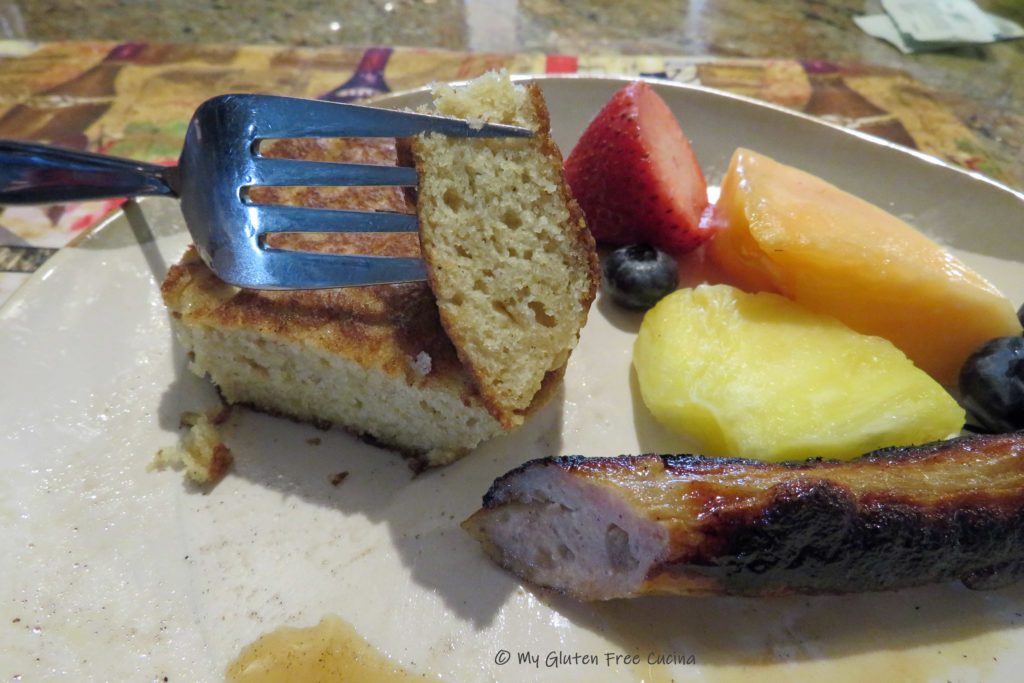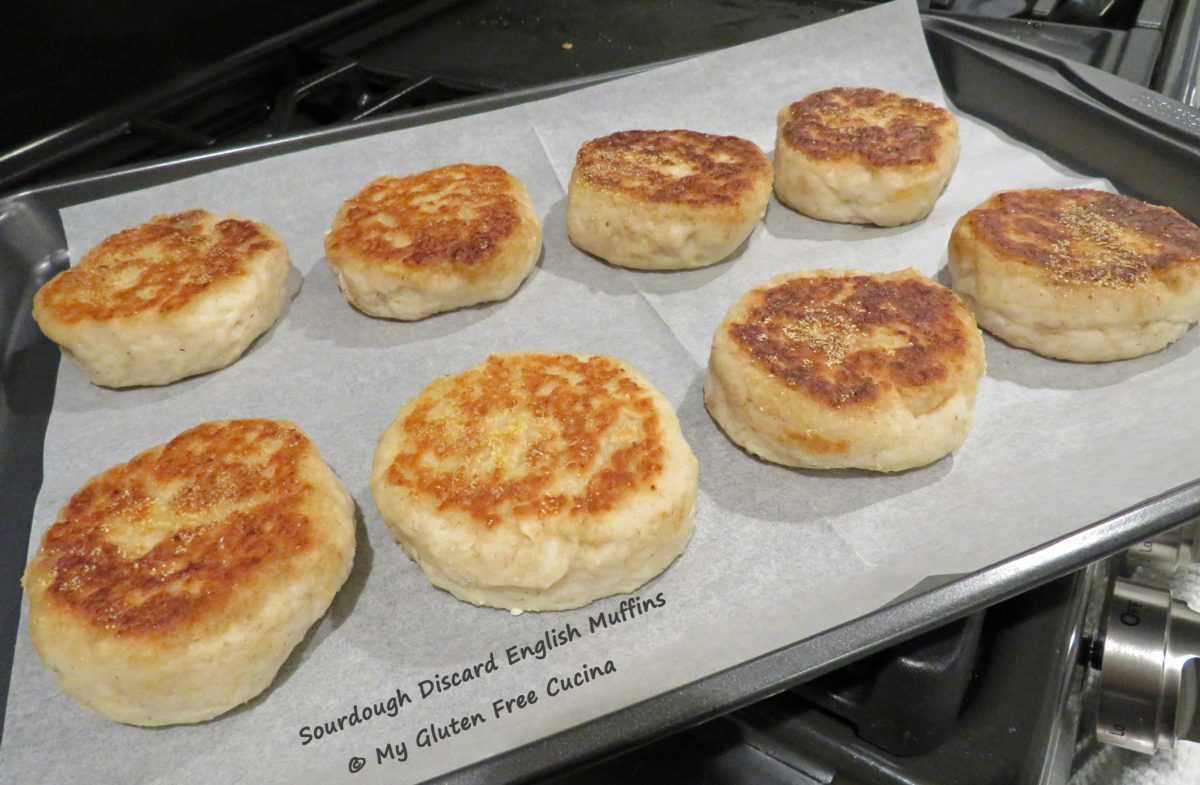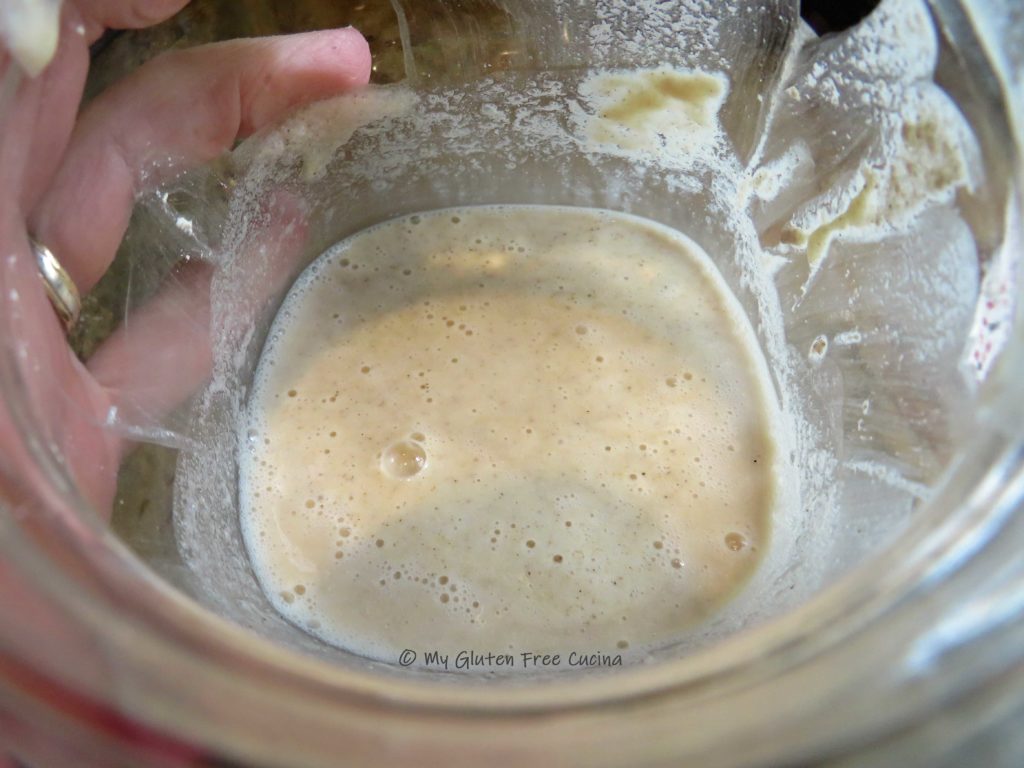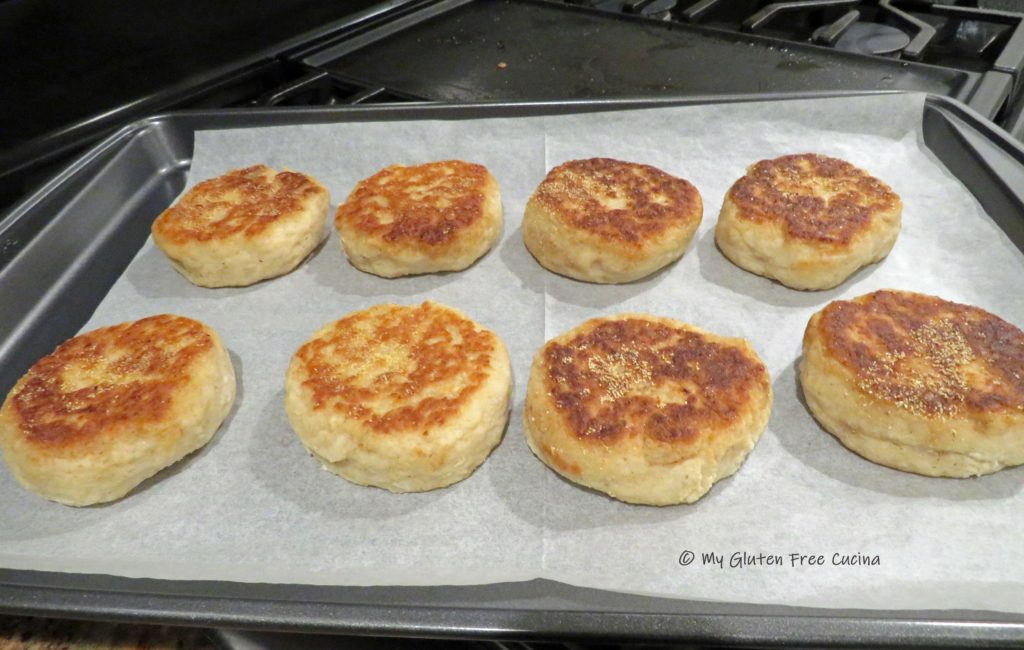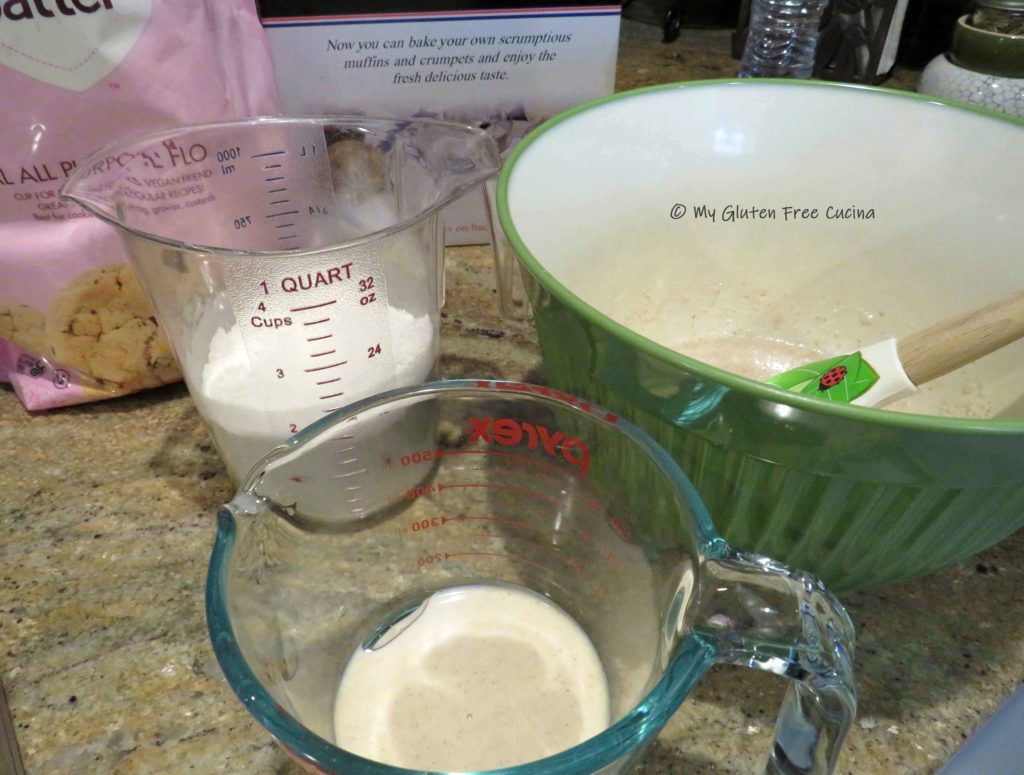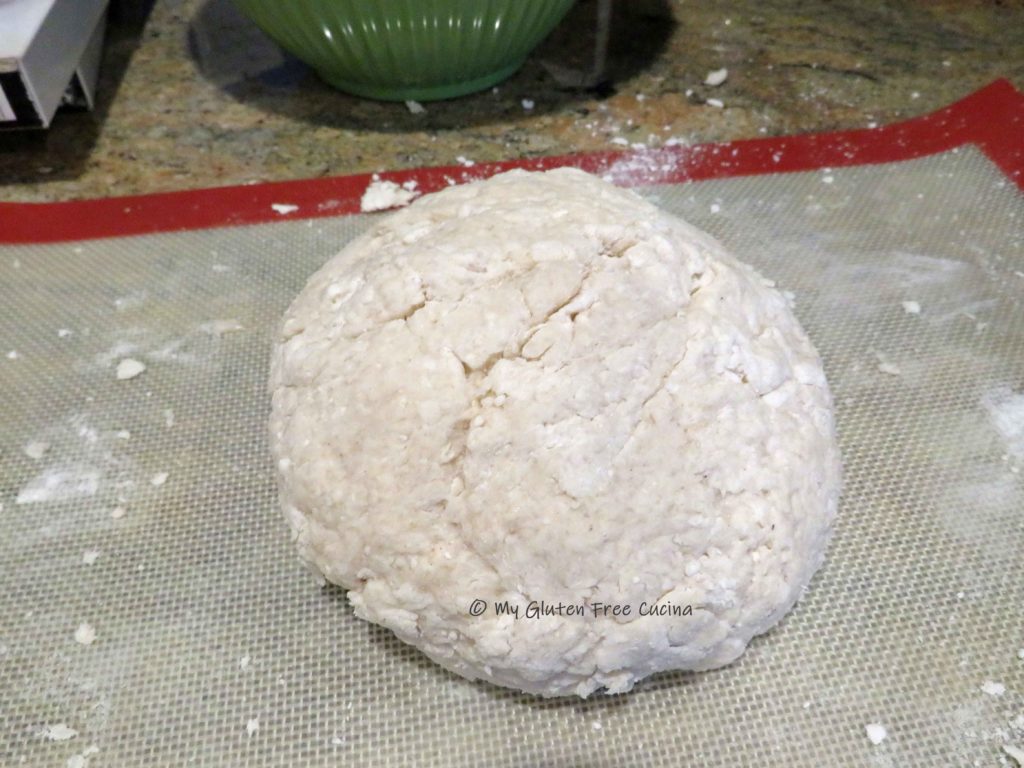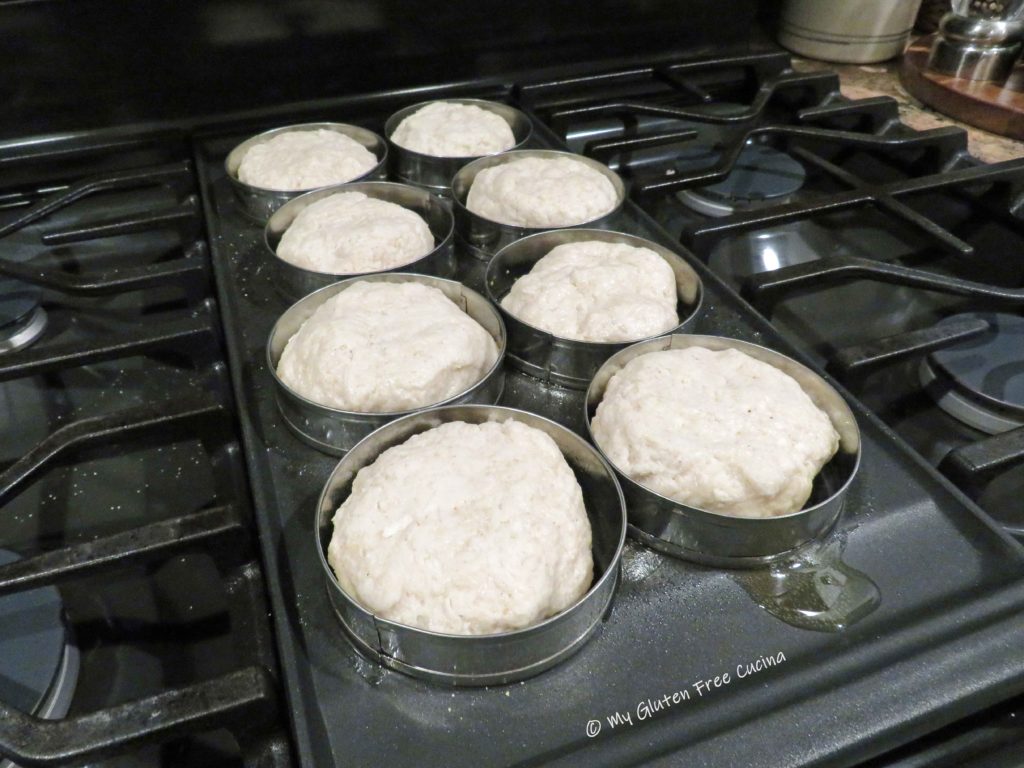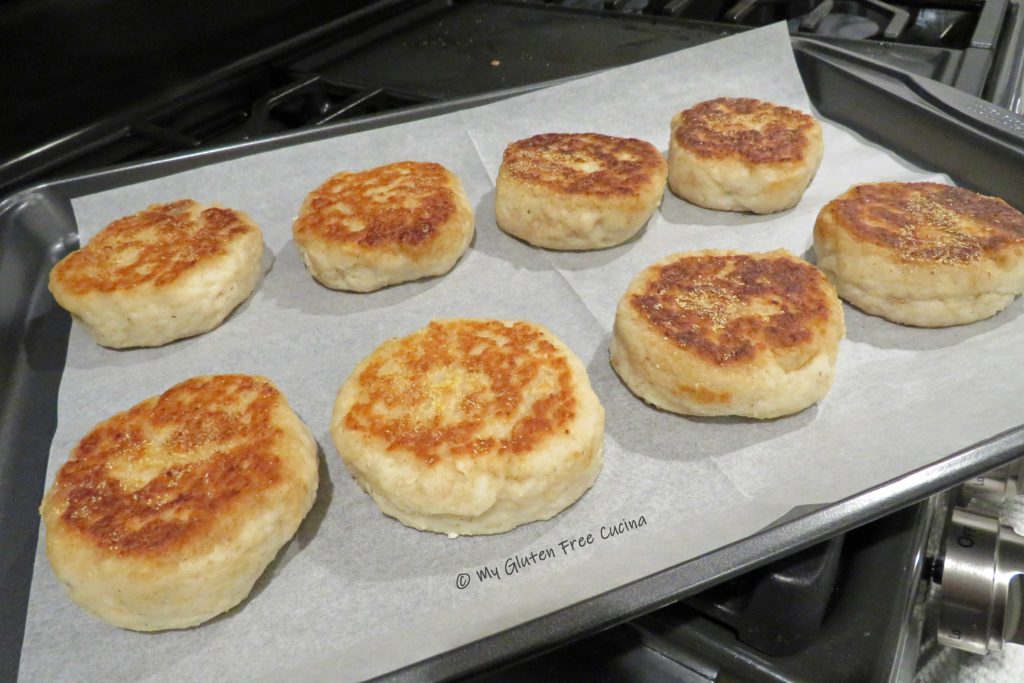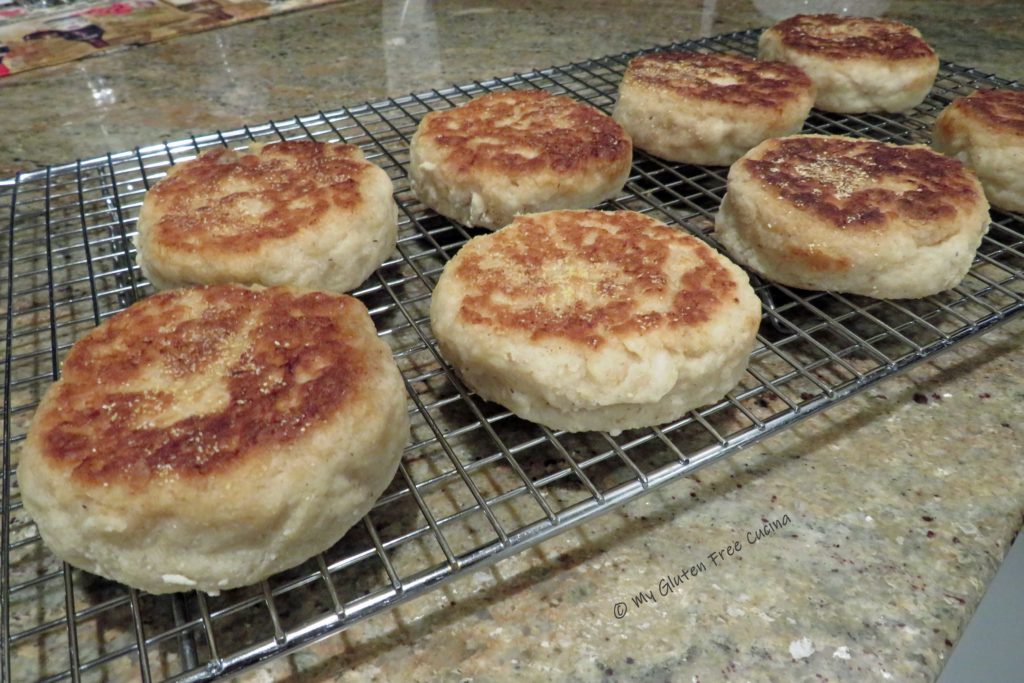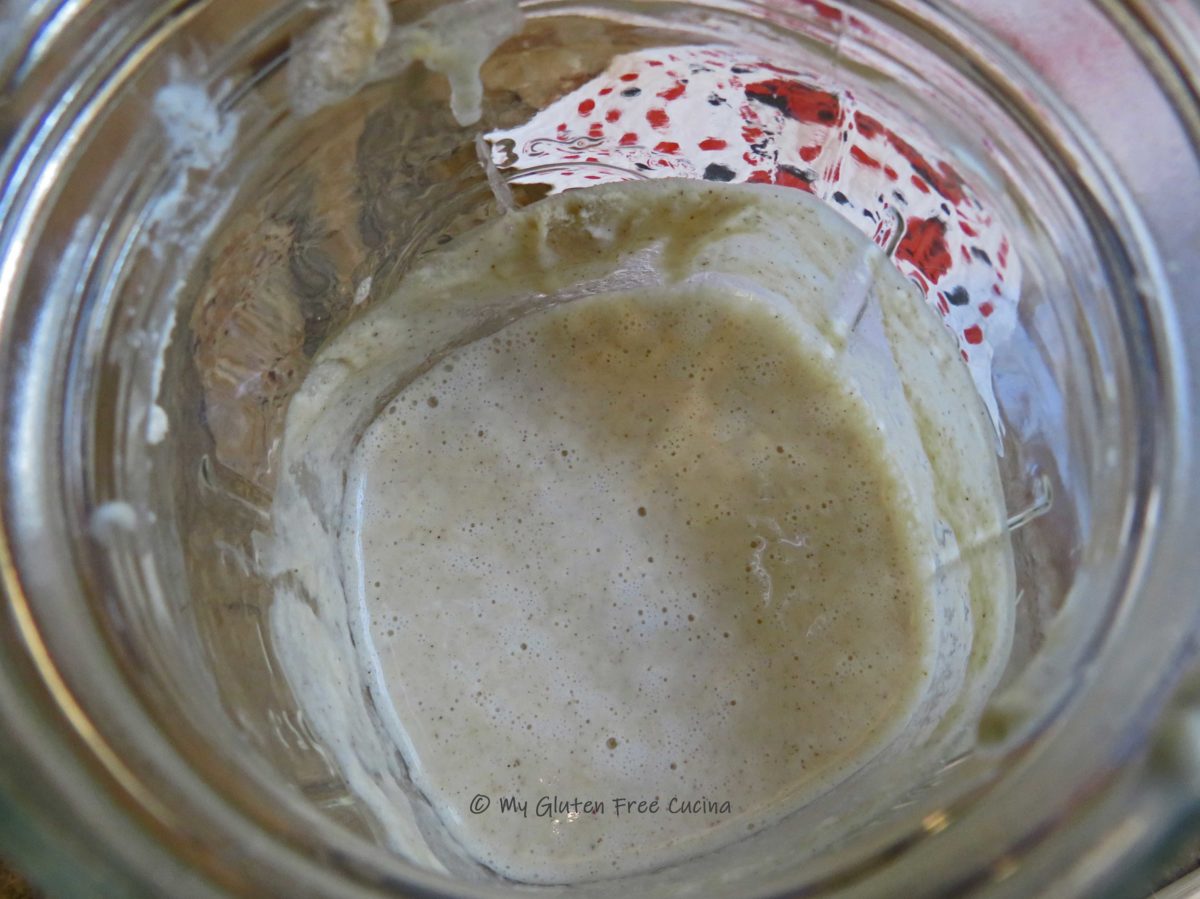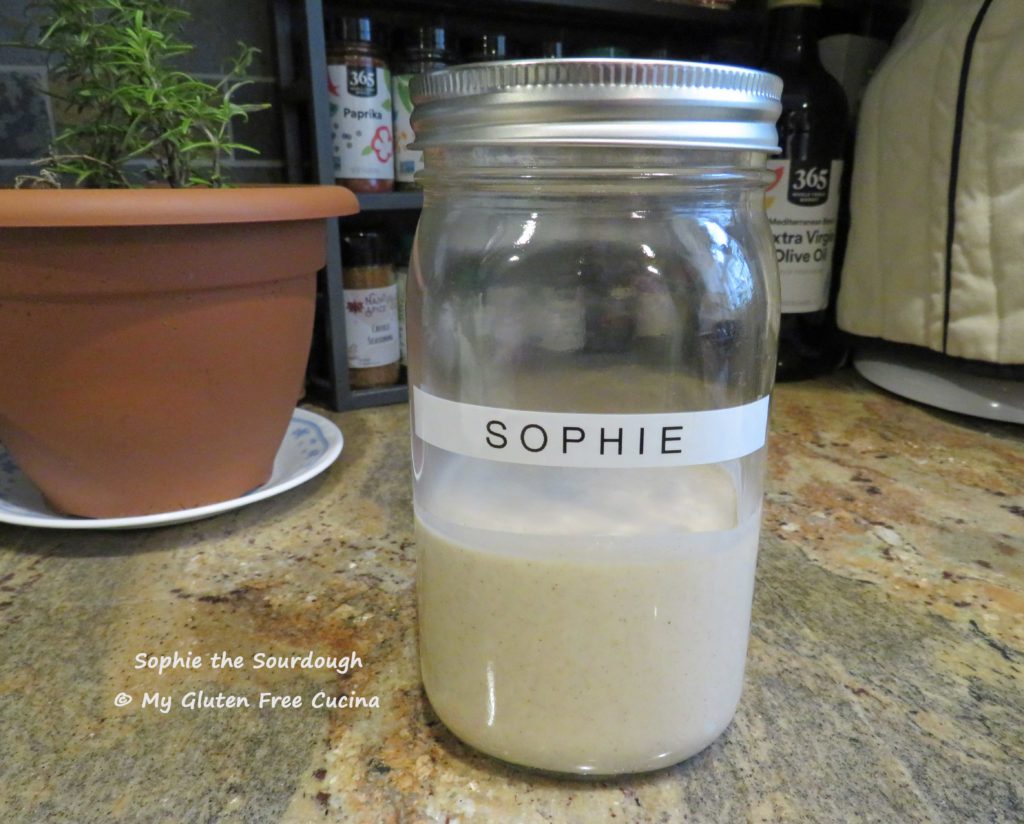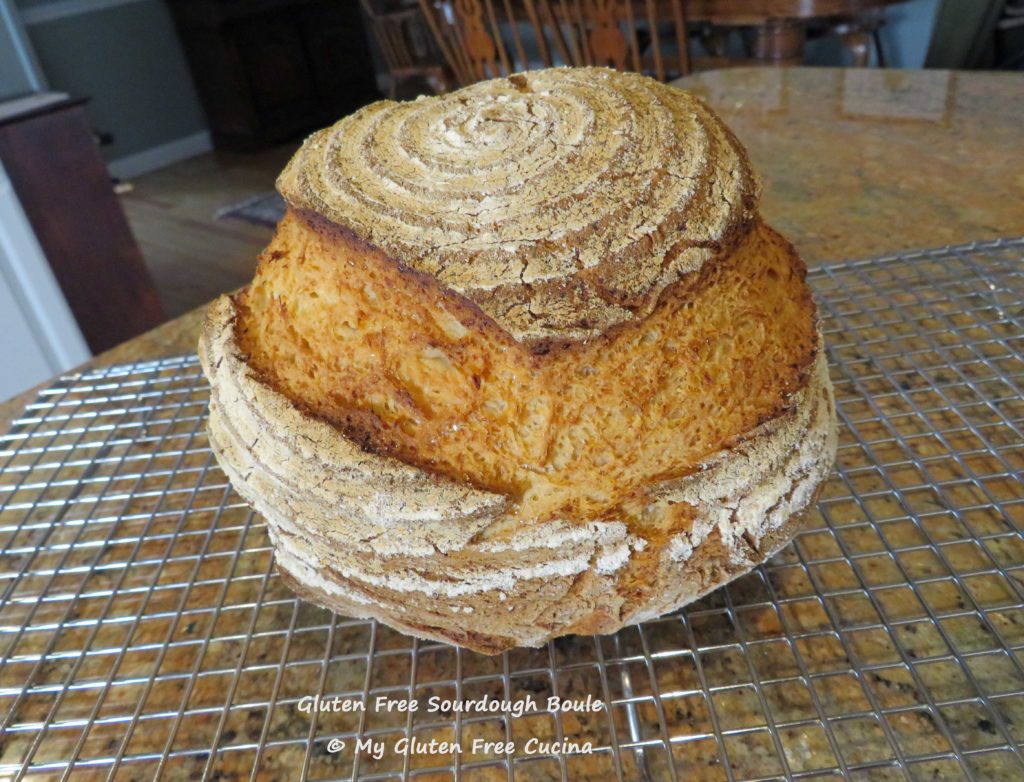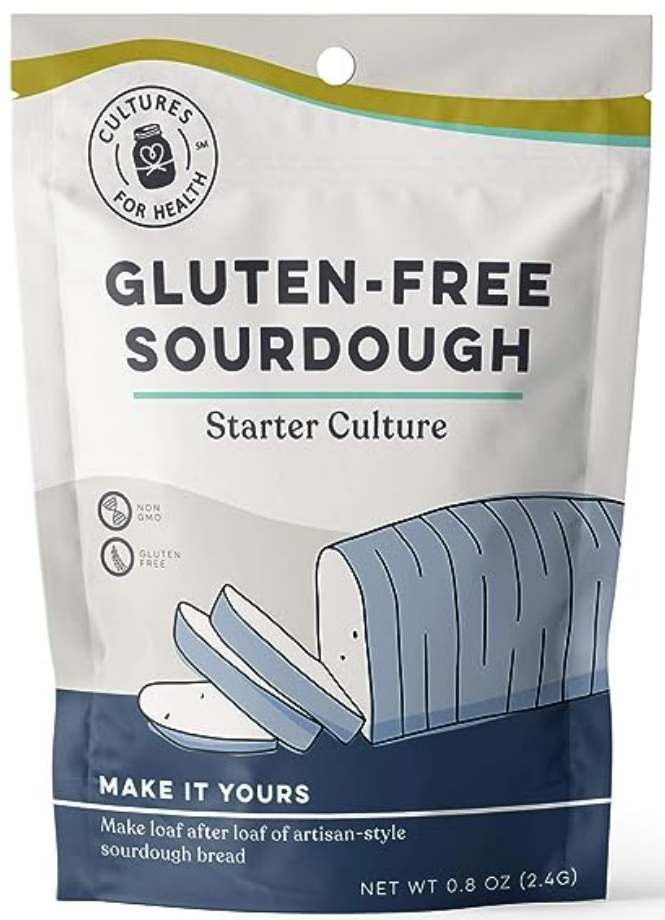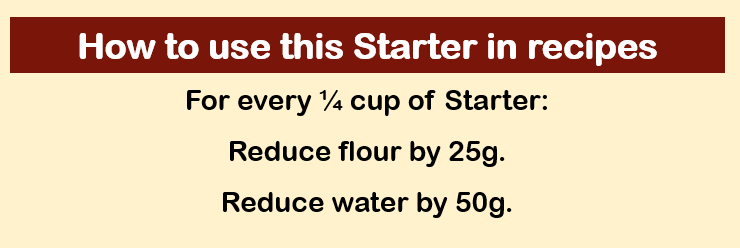Baking with sourdough has really upped my gluten free bread game. The long, slow rise really develops the flavor of the dough in a way that commercial yeast alone cannot accomplish. It makes such a difference in the taste and texture of the finished loaf or rolls.
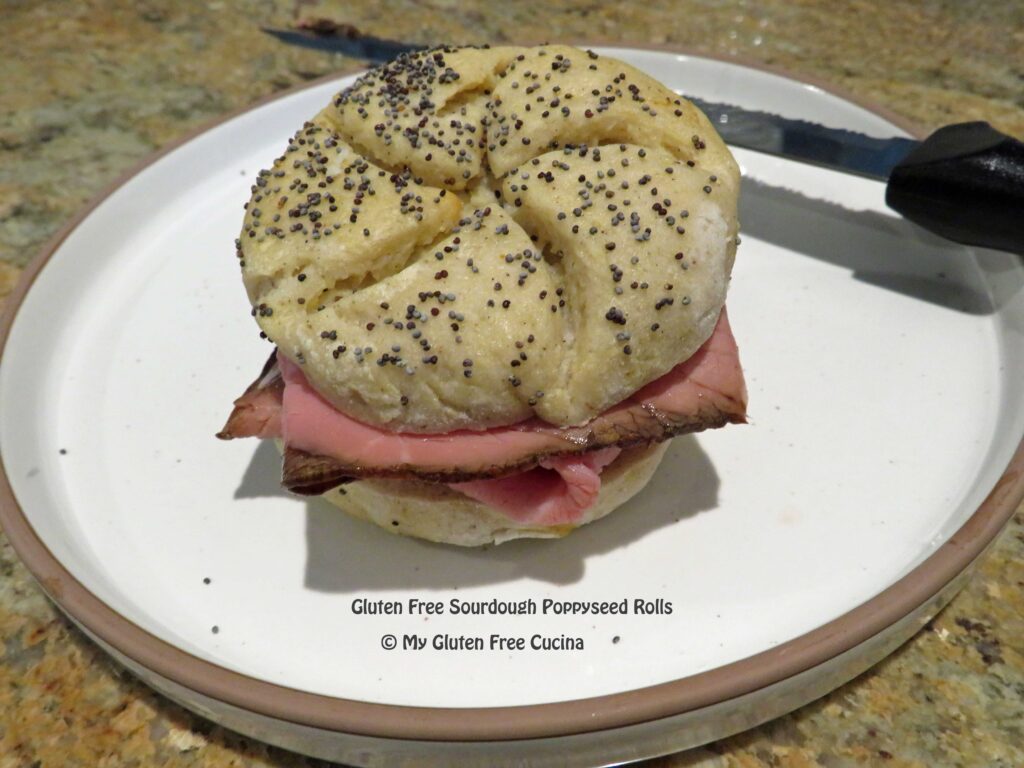
This post contains affiliate links.
Did you know that ever since Better Batter introduced their new Gluten Free Pizza Crust mix last year, devoted fans have been using it to make bread and rolls? It’s true, this is one versatile mix that comes in a convenient one-pound bag!
With a mix like this, my sourdough rolls come together easily and with minimal ingredients. No need to add salt or sugar- it’s all in the mix!
Ingredients:
- 250 g. fully active sourdough starter
- 300 g. warm water
- 30 g. canola oil
- 1 lb. bag, Better Batter Gluten Free Pizza Crust Mix
- 1/8 tsp. instant yeast
- 1 egg + 1 tbsp. water (optional, for egg wash)
- poppyseeds for topping
Preparation:
Note-> You will need a fully active sourdough starter for this recipe. You can read about my gluten free sourdough starter Sophie, in this post!
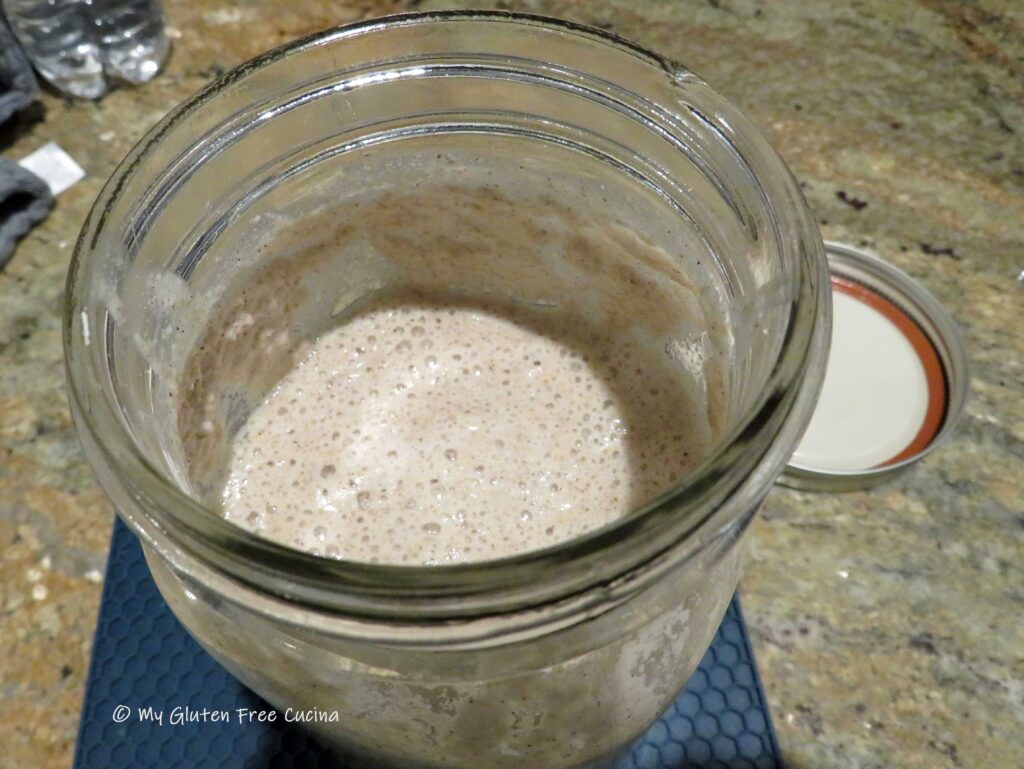 Combine the starter, water, oil, yeast and Pizza Crust Mix in the bowl of a stand mixer. Mix for 5 minutes with the paddle attachment to form a smooth dough.
Combine the starter, water, oil, yeast and Pizza Crust Mix in the bowl of a stand mixer. Mix for 5 minutes with the paddle attachment to form a smooth dough.

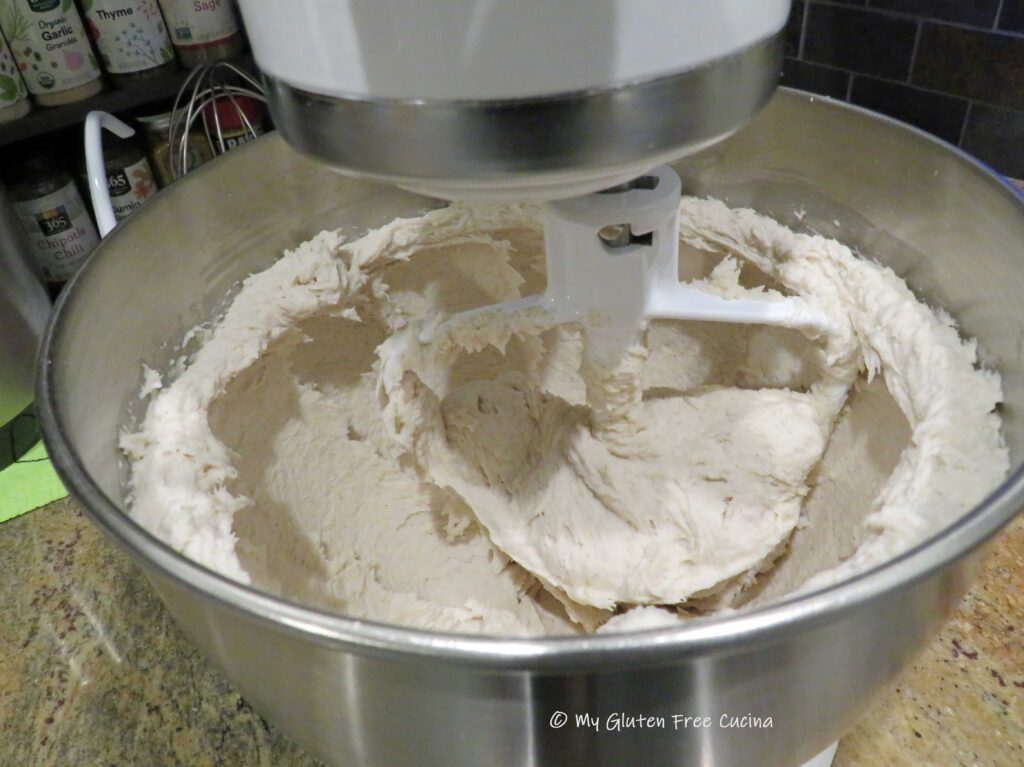
Gather the dough together in the mixer bowl, cover and let it rest for 20 minutes.

Scrape the dough into an oiled bowl and smooth the top with a wet spatula. Cover with plastic wrap and refrigerate overnight, up to 15 hours.
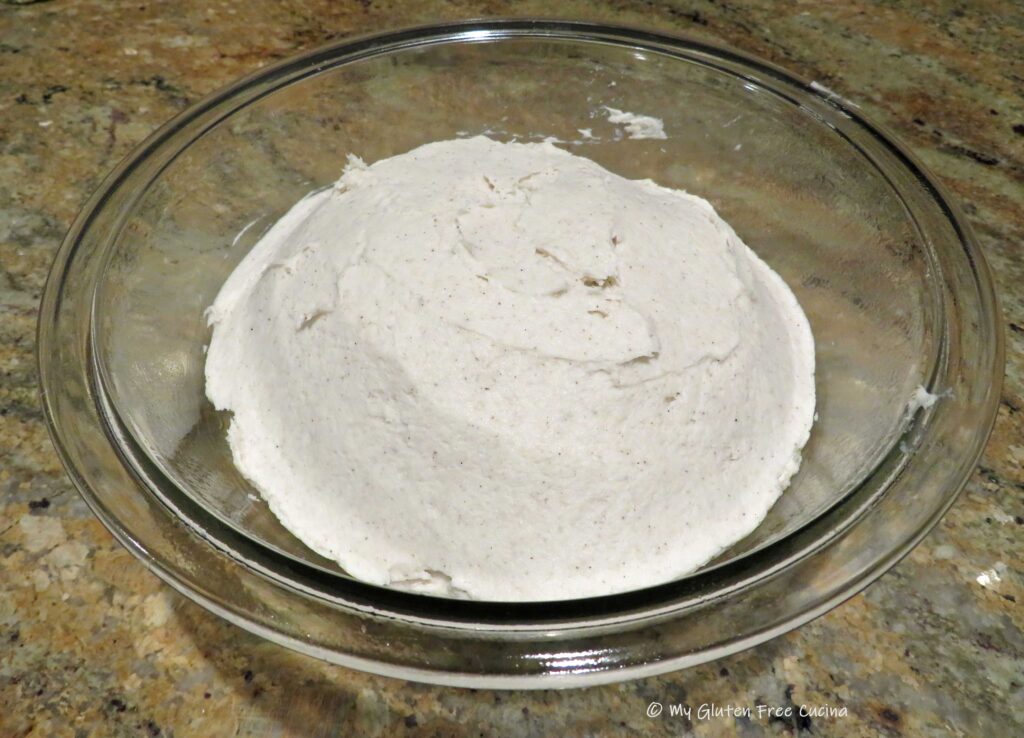
The next day, weigh the entire dough ball. You should have roughly 1020g. or 36 oz.
Why do I weigh it? It’s to give me an idea of how many rolls I want and what size they should be. I was thinking small rolls for my lunch sandwiches, so I divided my dough into 12 rolls that weighed about 85g. or 3 oz. each. You could do 2 oz. each for dinner rolls or sliders. For hamburger buns, 4 oz. is a good size.

After weighing and dividing your dough (you can eyeball it), sprinkle a cutting board with flour and working with one piece at a time, roll the dough into a round.
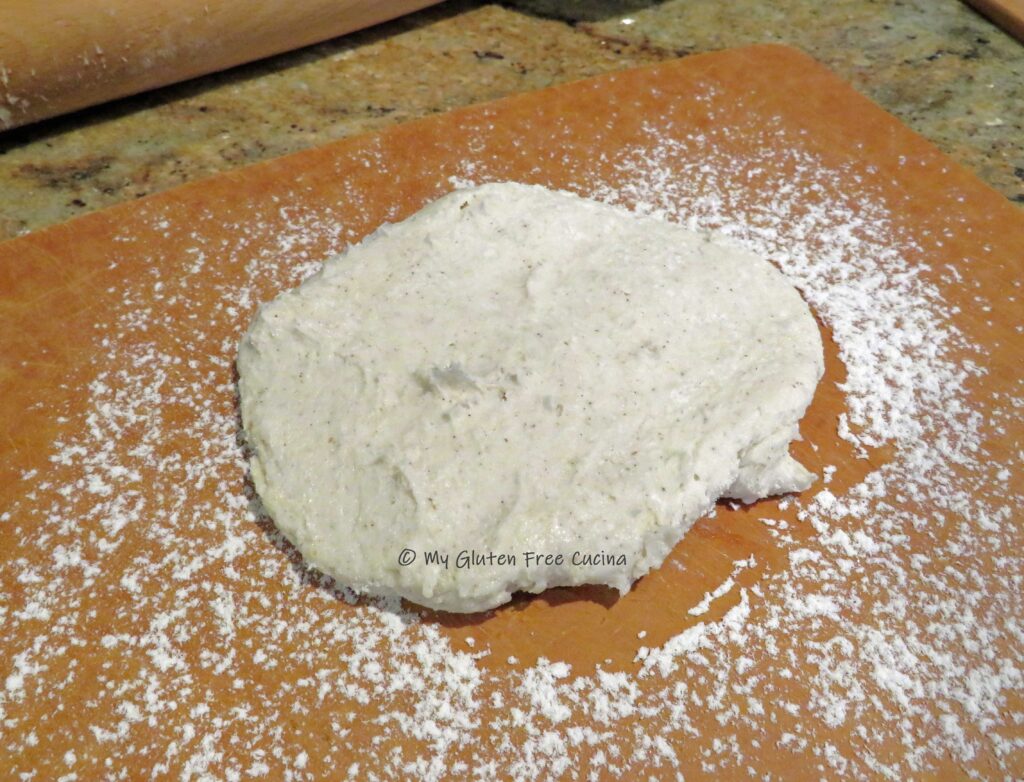
Bring the edges into the center, pinching together to seal like this.
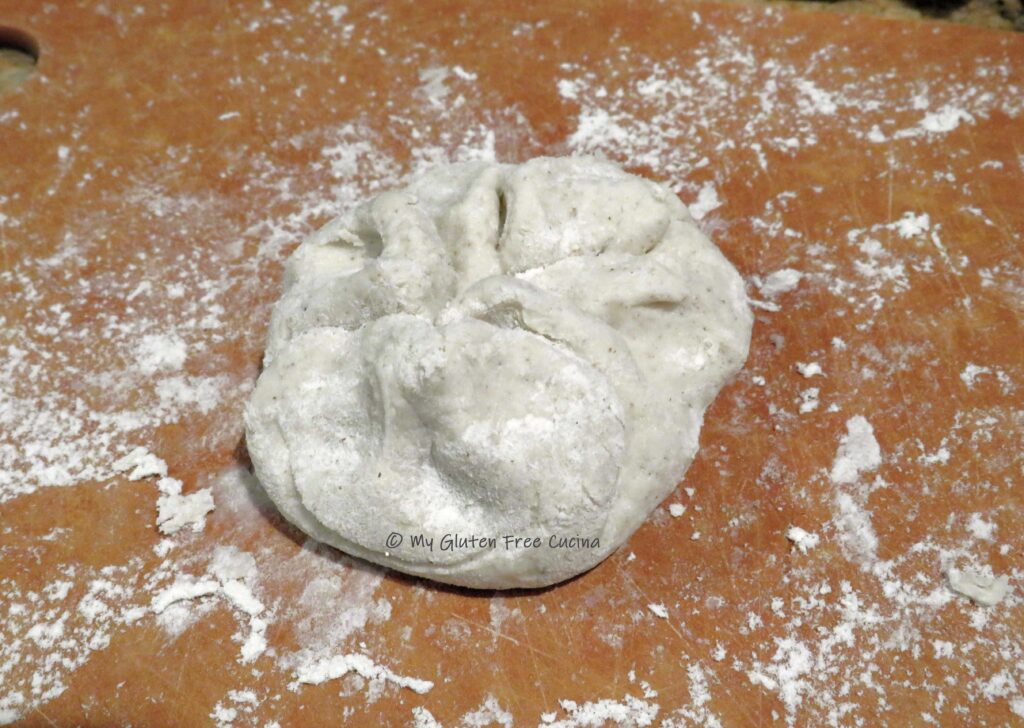
Turn the roll seam side down and rotate it in a circular motion to a smooth round shape.
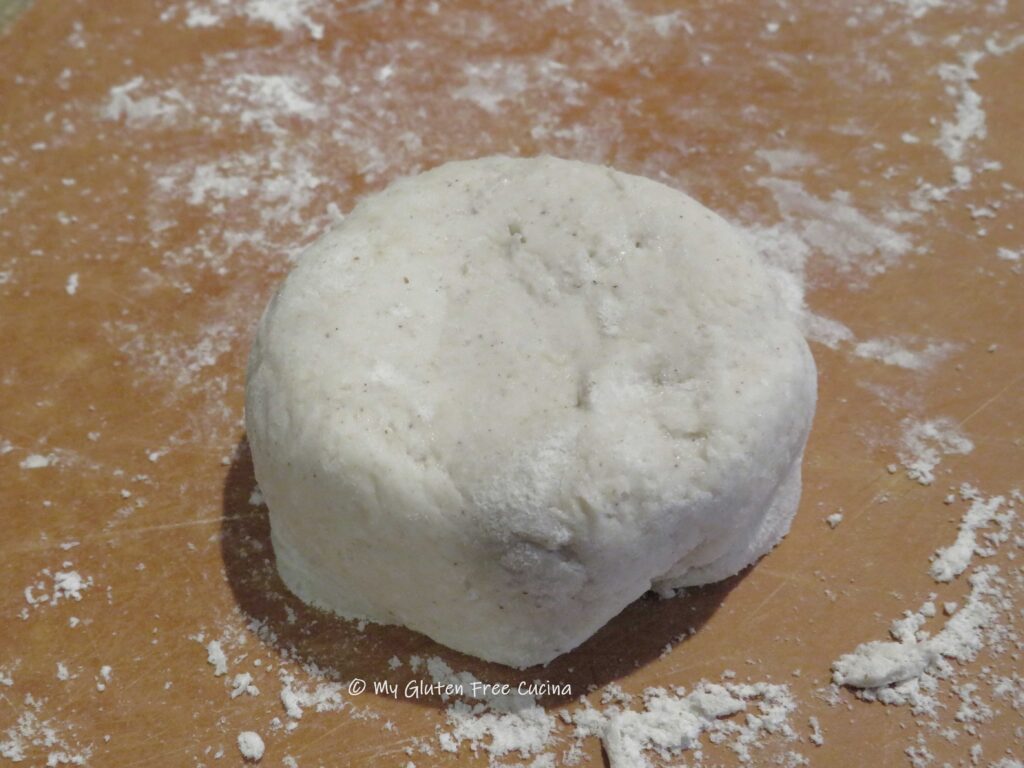
Finally, use your palm to flatten it to about 3/4″ thick.
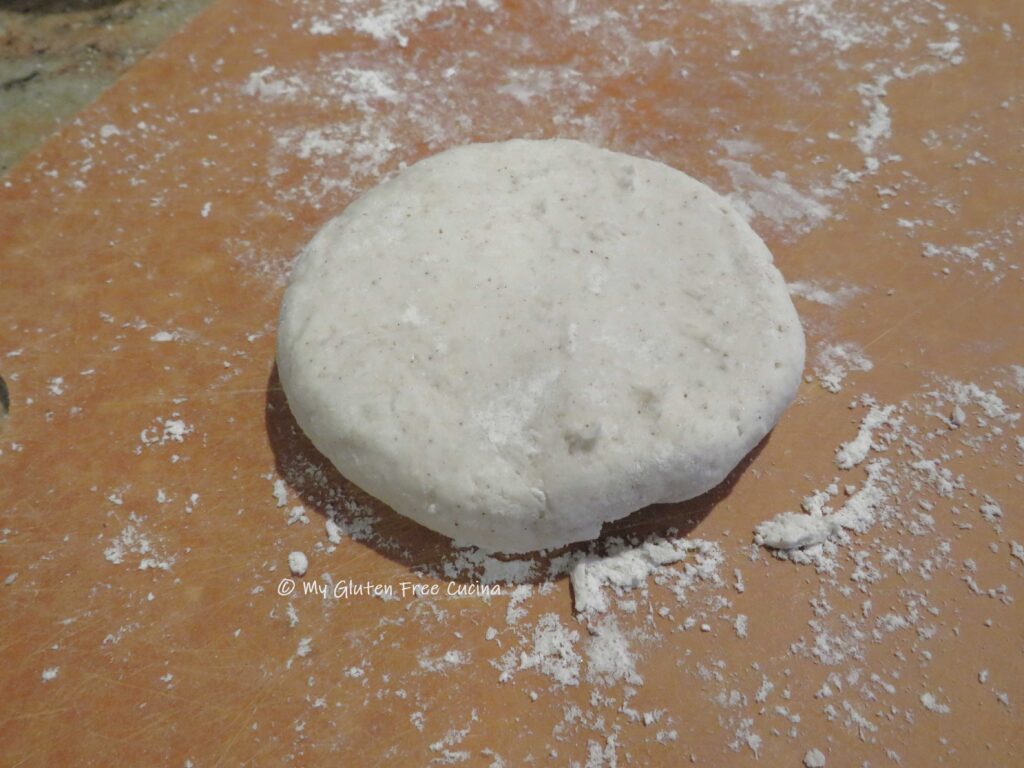
Continue with the rest of the dough, arranging your shaped rolls on a parchment lined baking sheet.
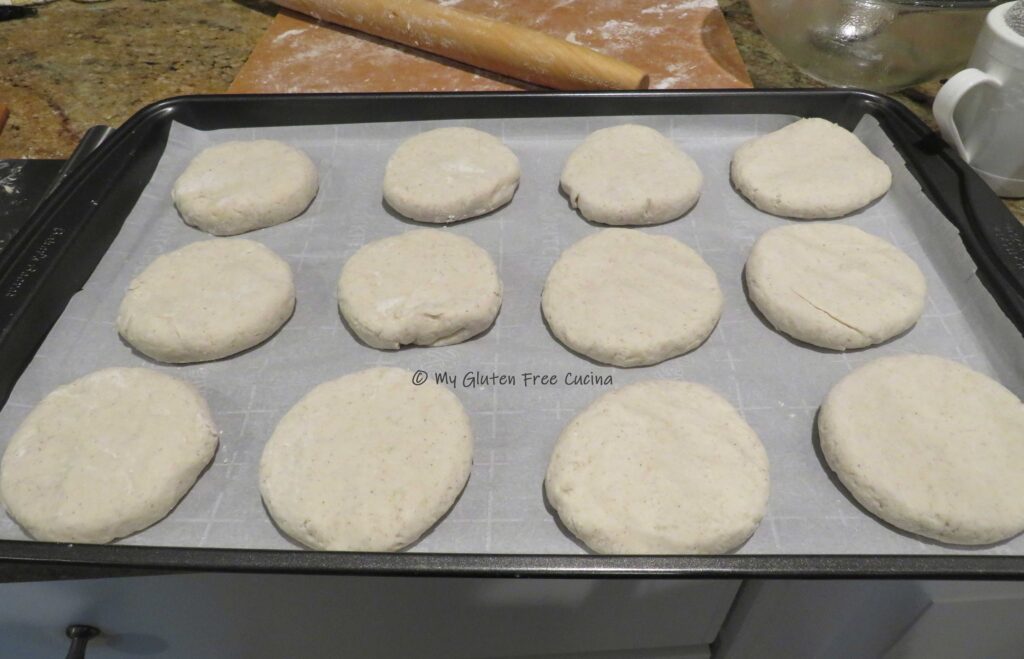
Cover the rolls and let them rest for 30 minutes while you preheat the oven to 475º. Score the top of each roll.
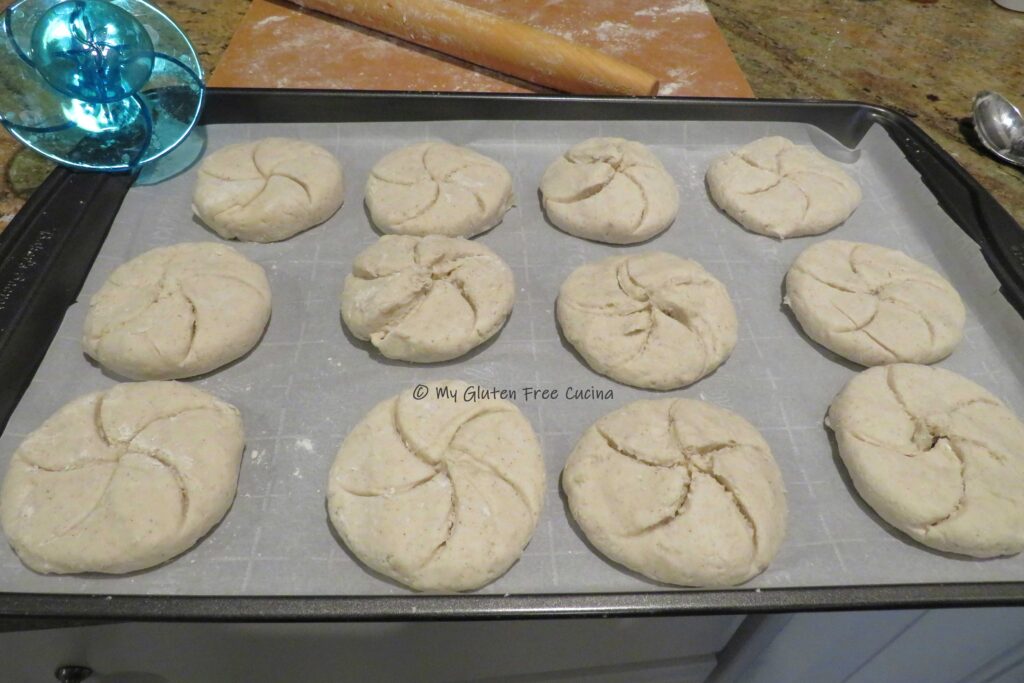
Check out this cute little Kaiser Cutter tool, from Ateco! My favorite Chef, Patrick Auger told me about it!
Just before baking, whisk the egg with 1 tbsp. water and brush the tops of the rolls. Sprinkle with poppyseeds. (If you don’t want to use an egg wash, you can spray the rolls with water.)
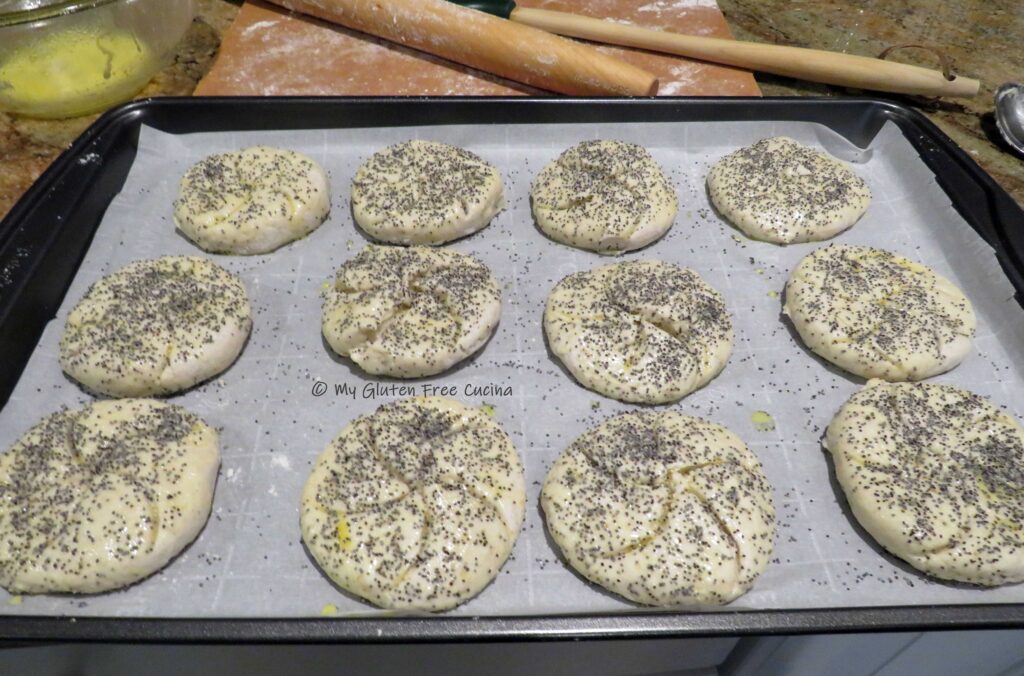
Place the pan on the center rack and throw a few ice cubes into the bottom of the oven. Bake for 5 minutes, then lower the oven temperature to 375º.
Continue baking 10-15 minutes longer, or until the internal temperature of the rolls reaches 210º (check with a thermometer).
Cool in the pan for 15 minutes then transfer to a rack. Allow the rolls to cool completely before slicing.
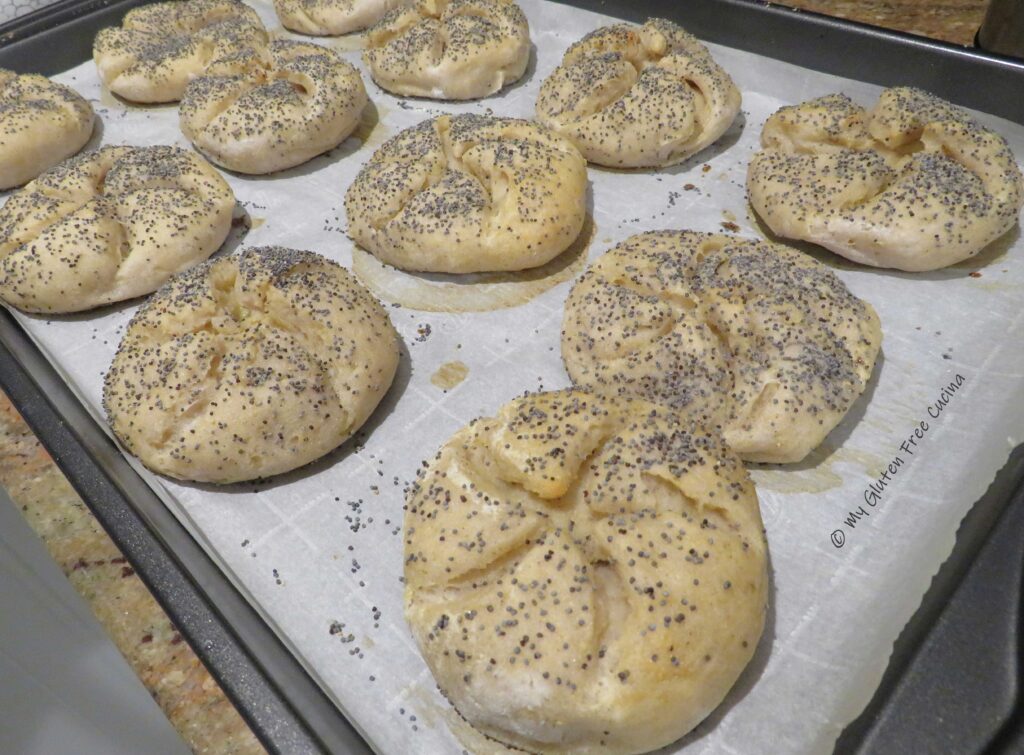 For best texture, I let mine cool to room temperature then store them on the counter in a plastic bag overnight. In the morning, I slice them and wrap each roll individually in plastic wrap. I left a few out for lunch and the rest went into a freezer safe bag. Freezing is recommended if you are not going to eat them immediately.
For best texture, I let mine cool to room temperature then store them on the counter in a plastic bag overnight. In the morning, I slice them and wrap each roll individually in plastic wrap. I left a few out for lunch and the rest went into a freezer safe bag. Freezing is recommended if you are not going to eat them immediately.
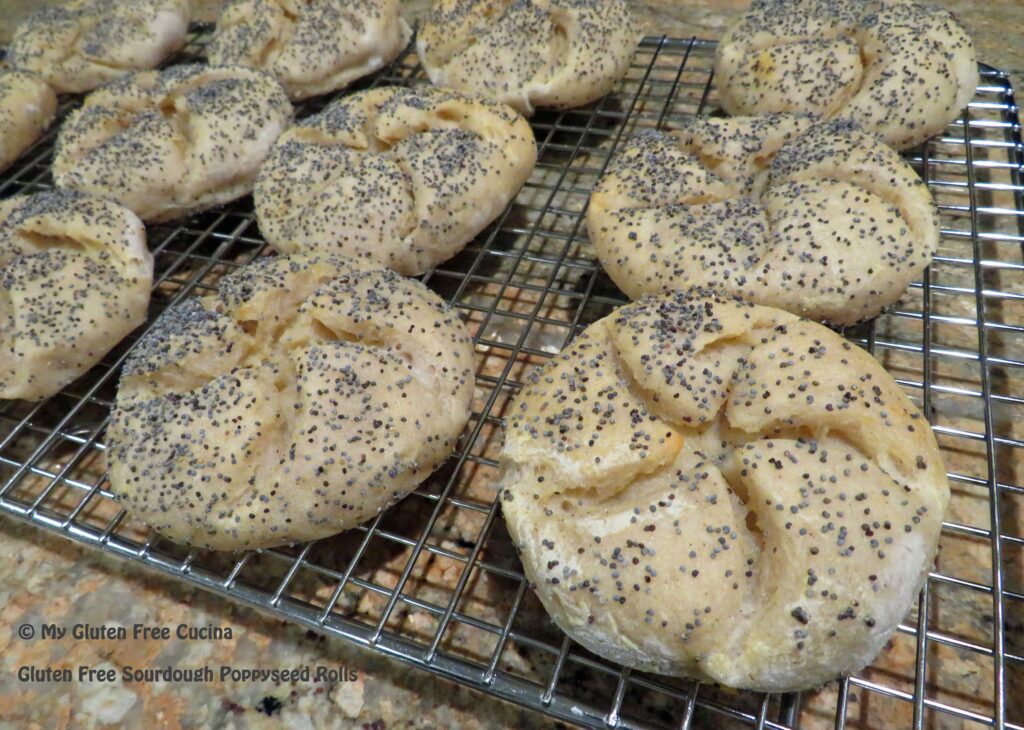
Here’s the crumb shot. The rolls don’t need to be toasted, but they are great either way. Just the right size for me.
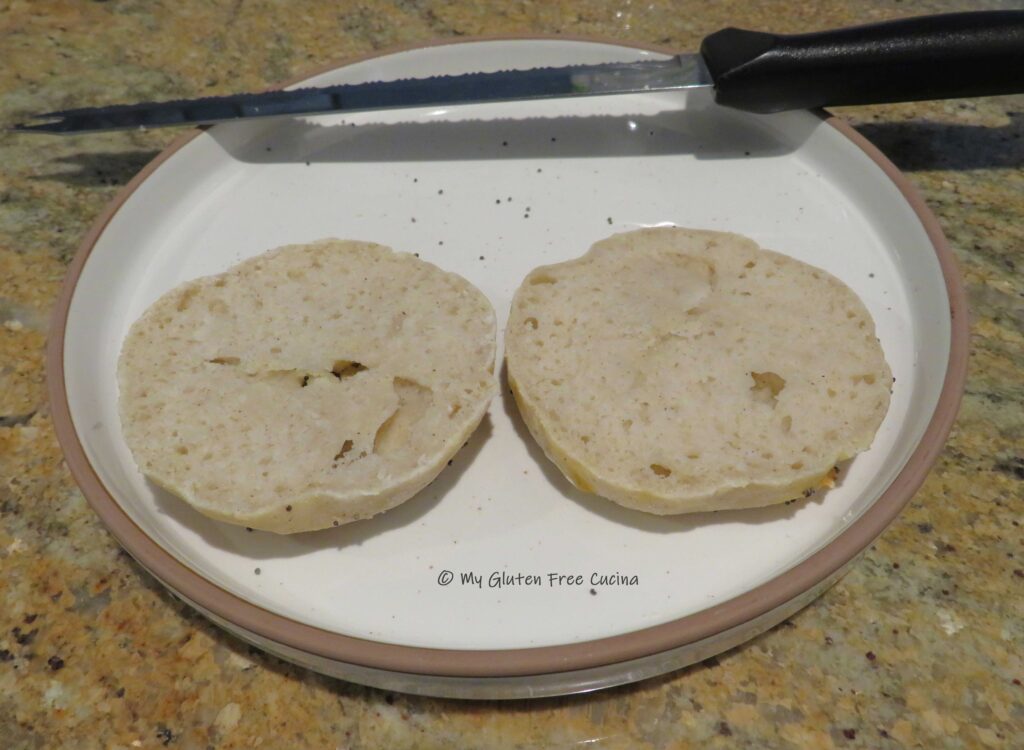
Notes ♪ Baking times given are for 3 oz. rolls. If you make yours smaller or larger you will need to adjust accordingly. Remember, the internal temperature should reach 210º, check- don’t guess, use a thermometer!
Notes ♫ For instructions on how to make a gluten free sourdough starter, read this post and meet my sourdough starter Sophie!

Notes ♪♫ It’s true! The flour that I call “my little miracle in a bag” now has a gluten free pizza mix! Better Batter fans have been anxiously awaiting this new product to come to market and it’s finally here. Of course, I made pizza, but why stop there?



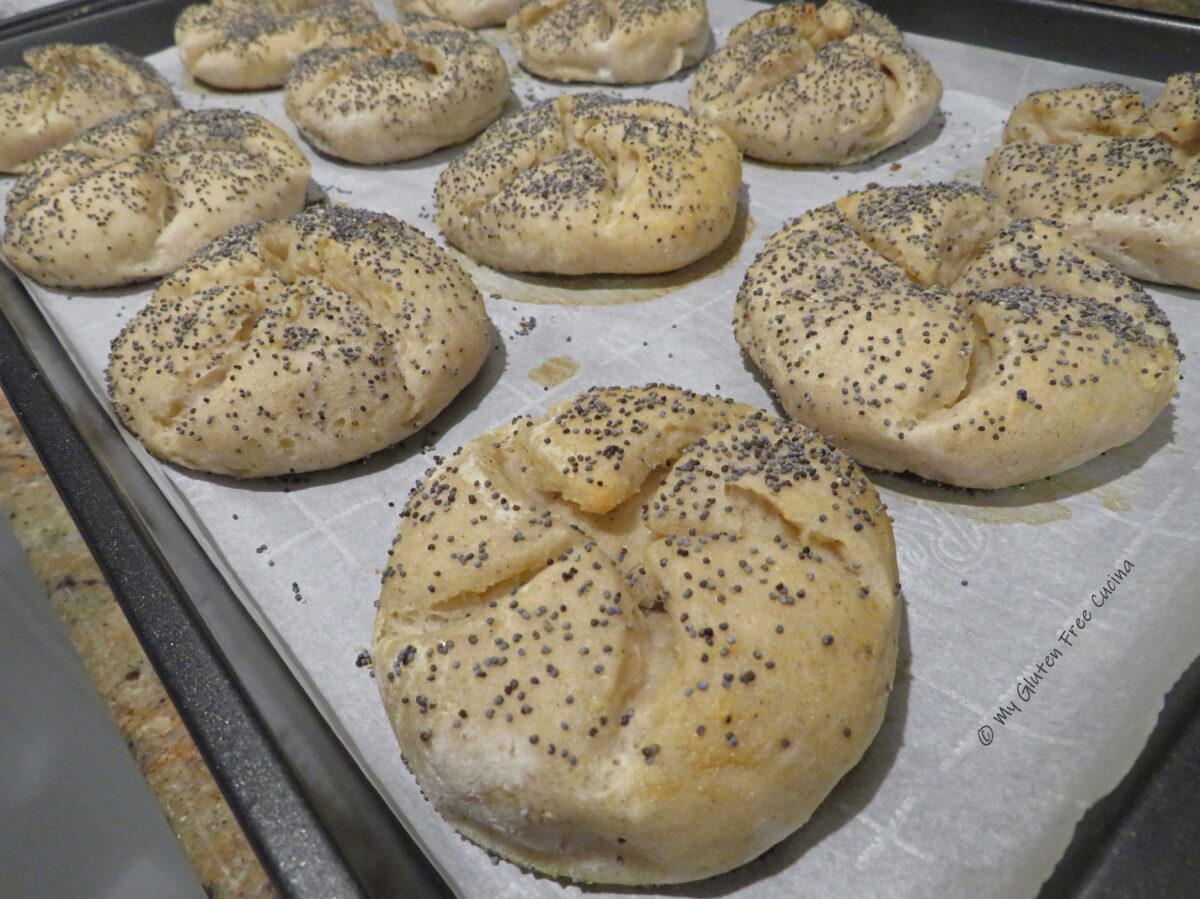
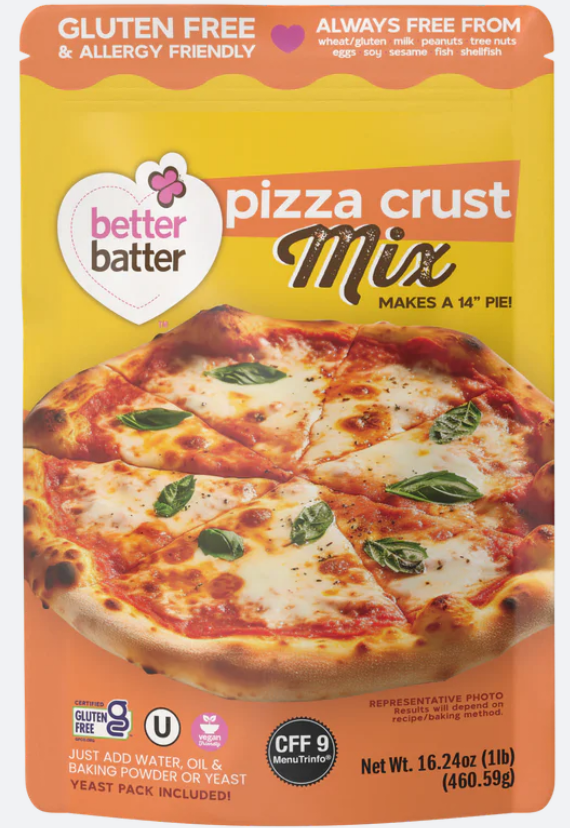


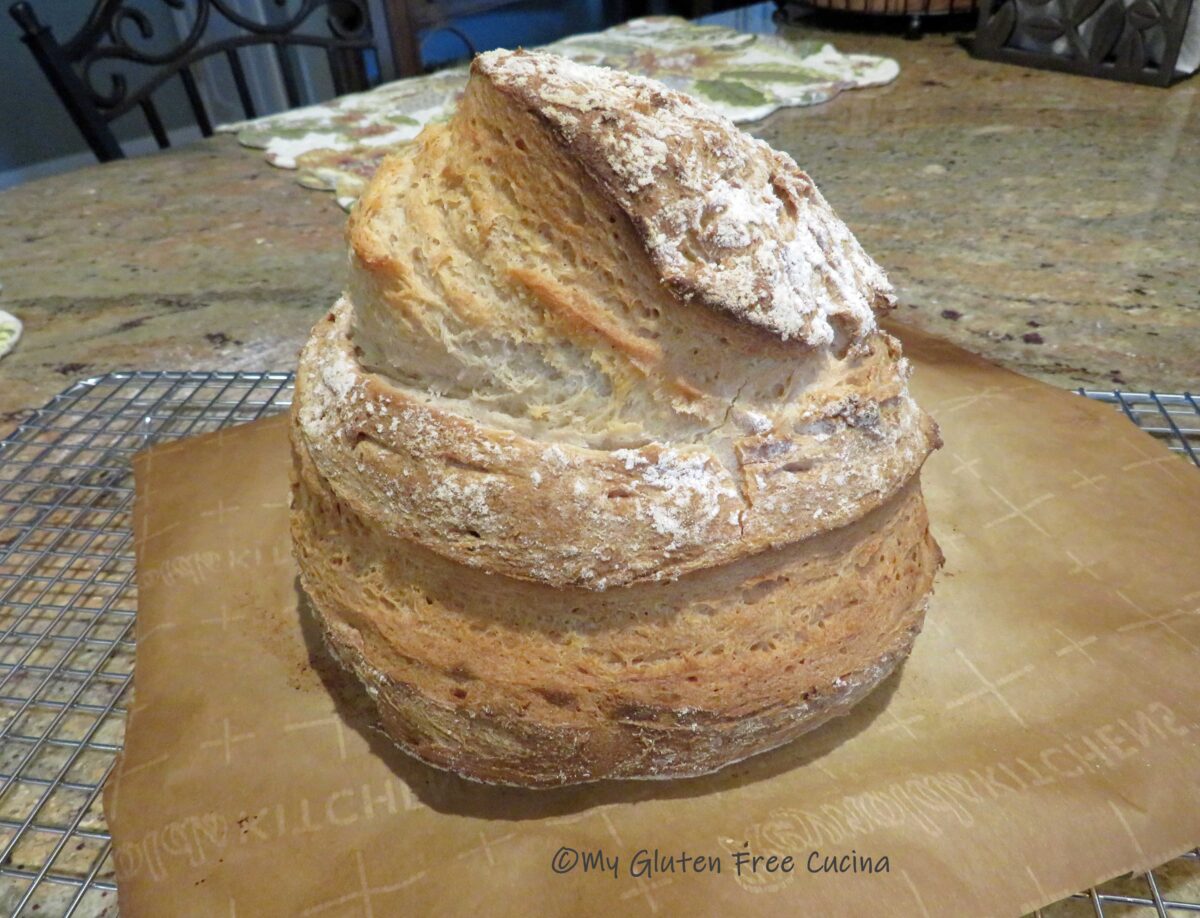
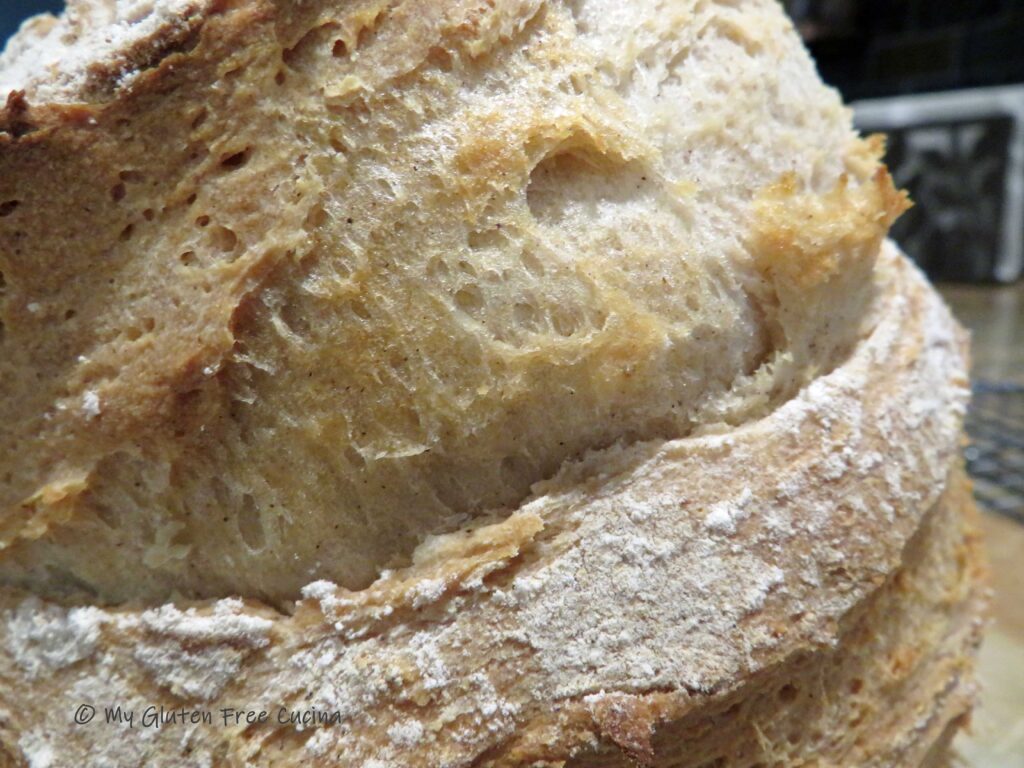
 Have you ordered the new Bread Flour from Better Batter yet?
Have you ordered the new Bread Flour from Better Batter yet?
 Preparation:
Preparation: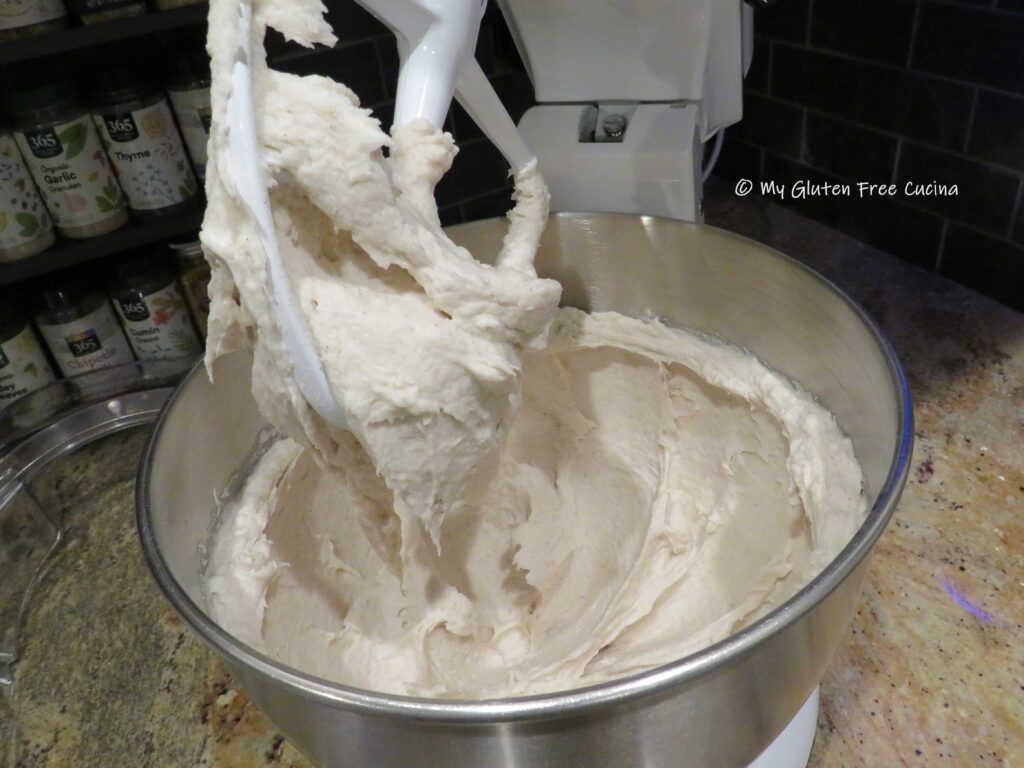


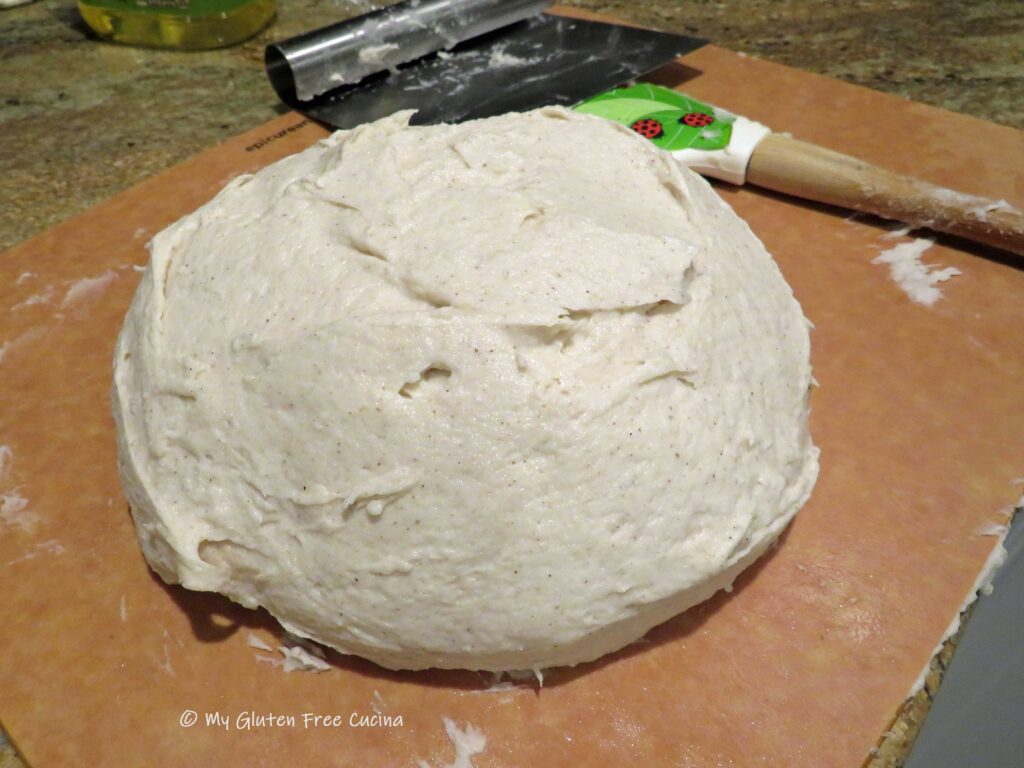 Place the dough ball in an oiled bowl, cover with plastic wrap and refrigerate overnight for 12 hours.
Place the dough ball in an oiled bowl, cover with plastic wrap and refrigerate overnight for 12 hours.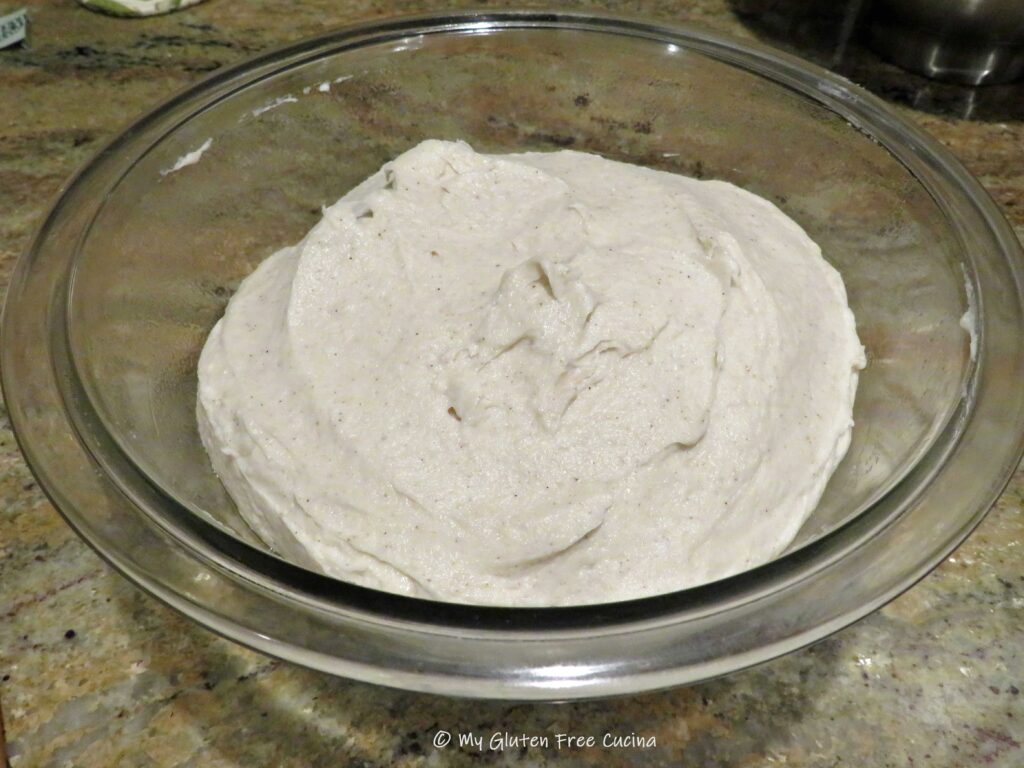 In the morning, preheat the oven to 475º with
In the morning, preheat the oven to 475º with  Use a spatula to smooth it into a round shape.
Use a spatula to smooth it into a round shape.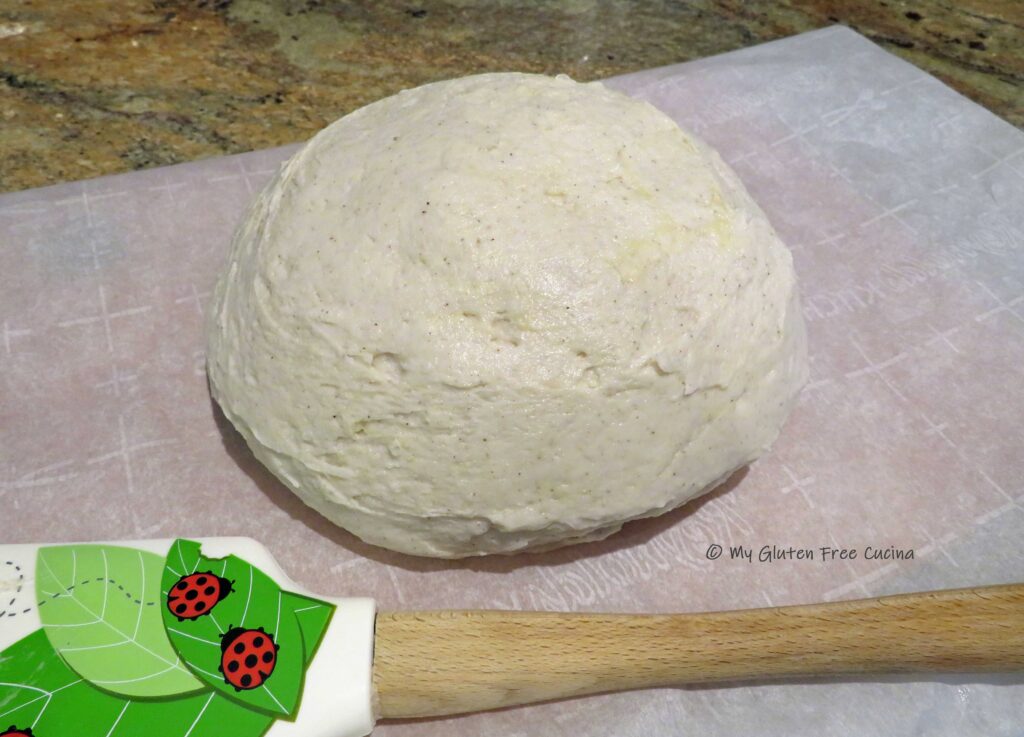 Use a
Use a 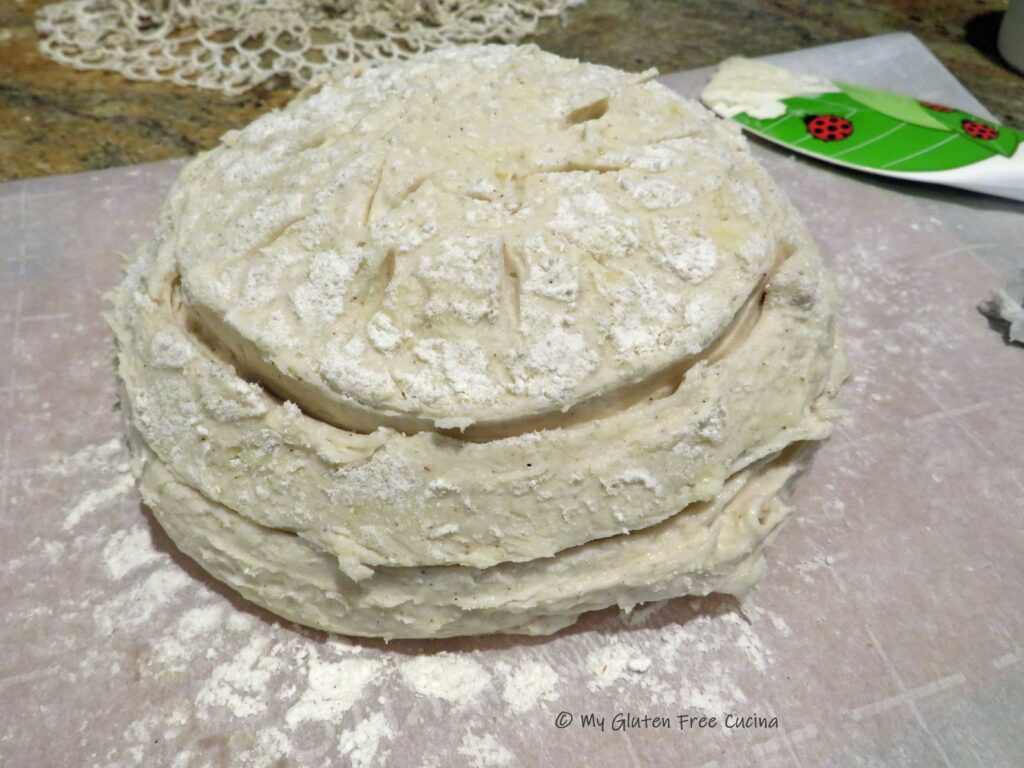 Transfer the dough, with parchment to the oven. Throw a few ice cubes onto the bottom of the oven and quickly shut the door. After the first 5 minutes throw in a few more ice cubes.
Transfer the dough, with parchment to the oven. Throw a few ice cubes onto the bottom of the oven and quickly shut the door. After the first 5 minutes throw in a few more ice cubes.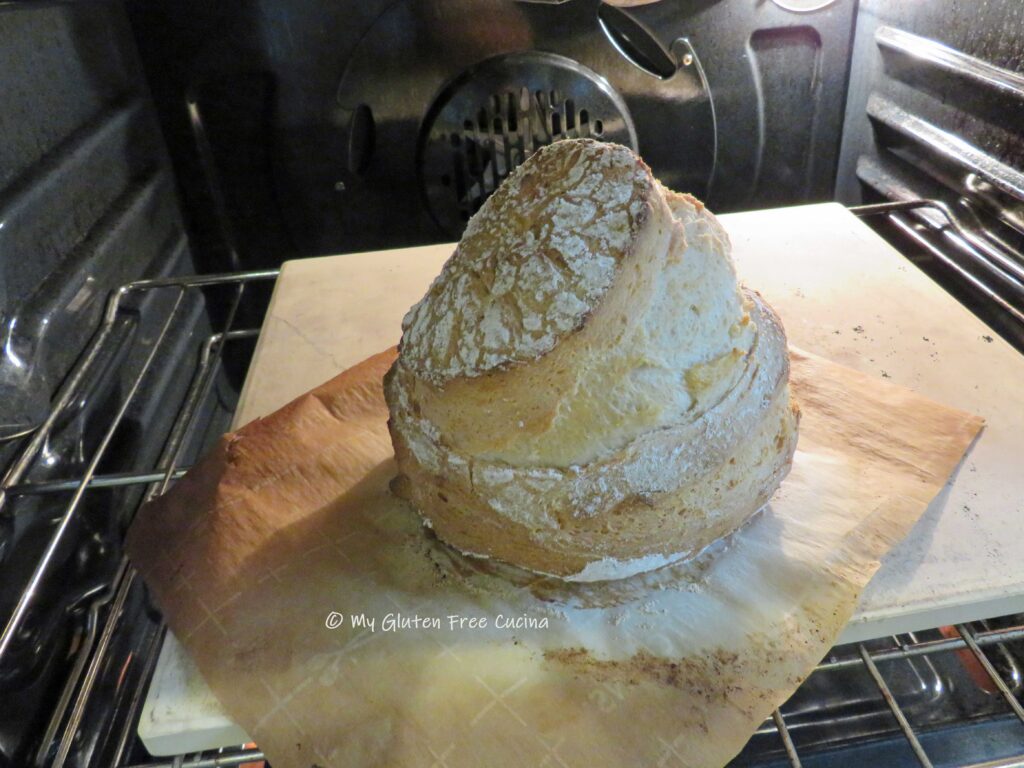 Cool completely on a rack then store in a plastic bag at room temperature. Wait 24 hours to slice.
Cool completely on a rack then store in a plastic bag at room temperature. Wait 24 hours to slice.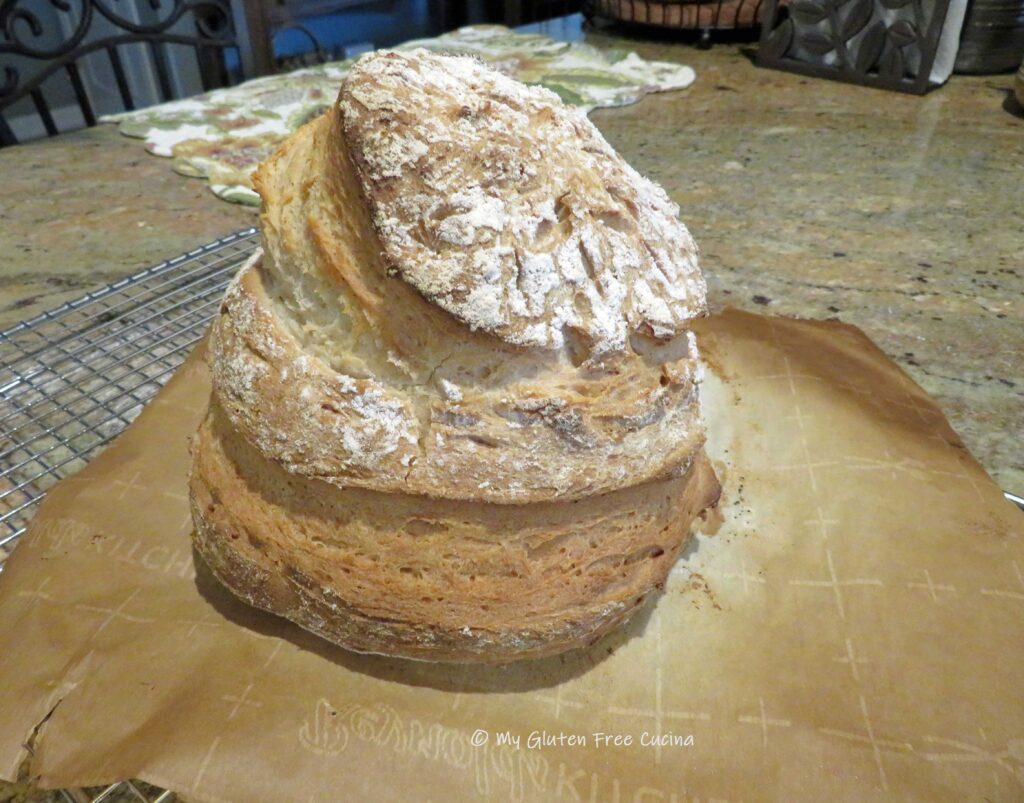
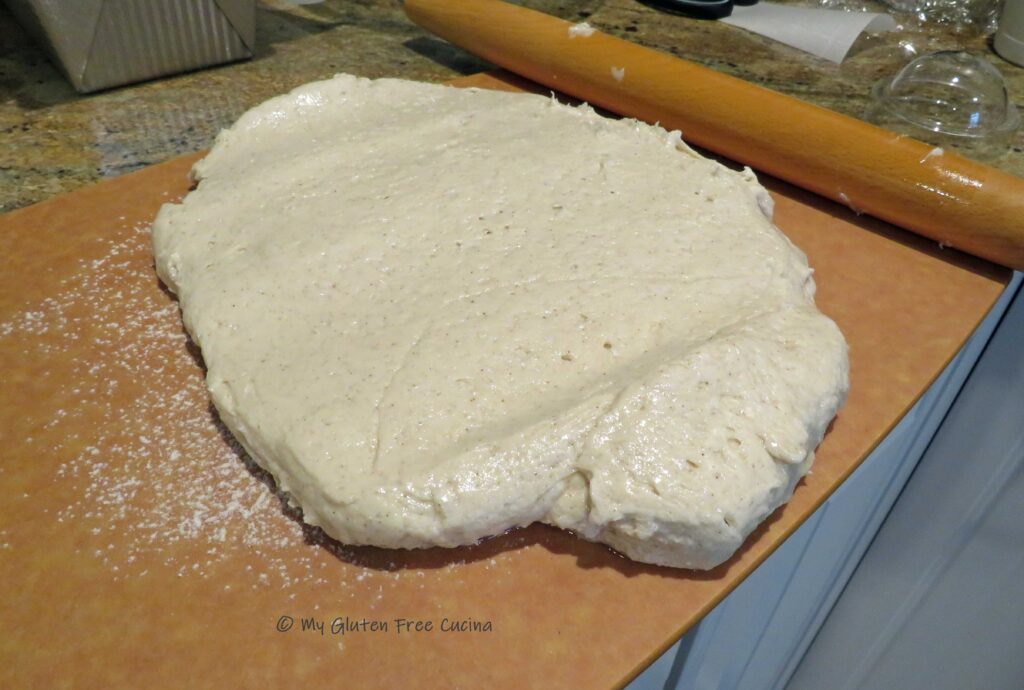


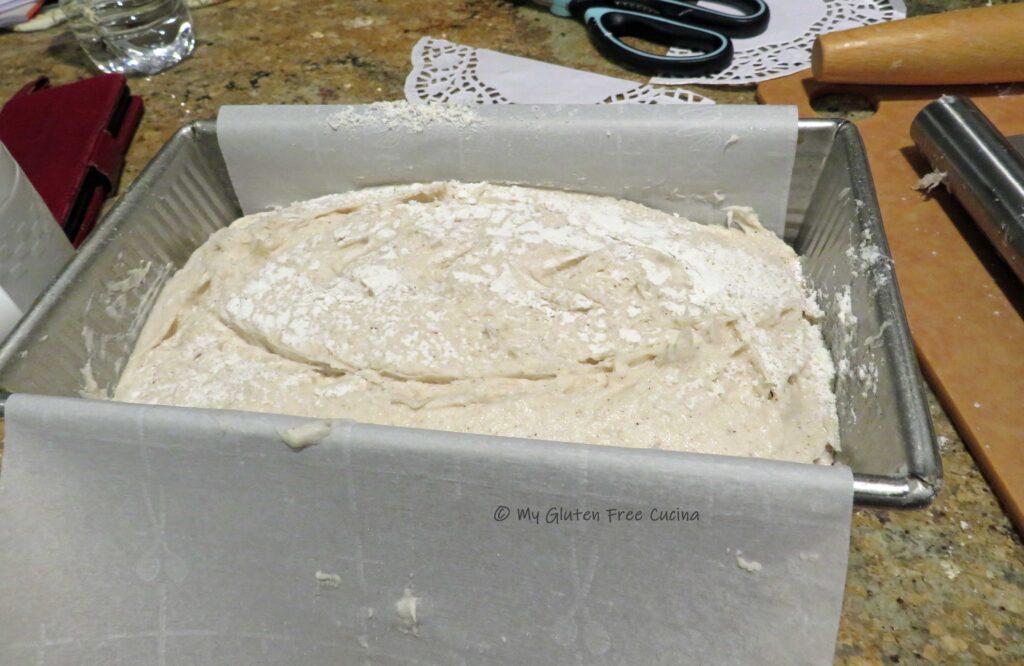
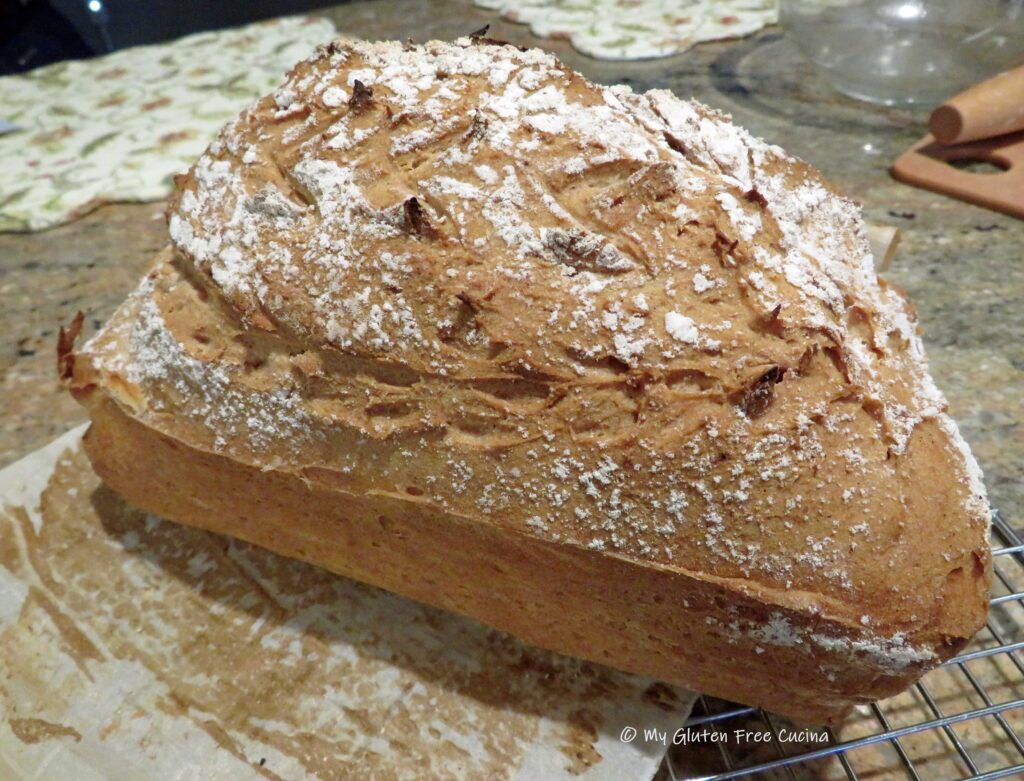


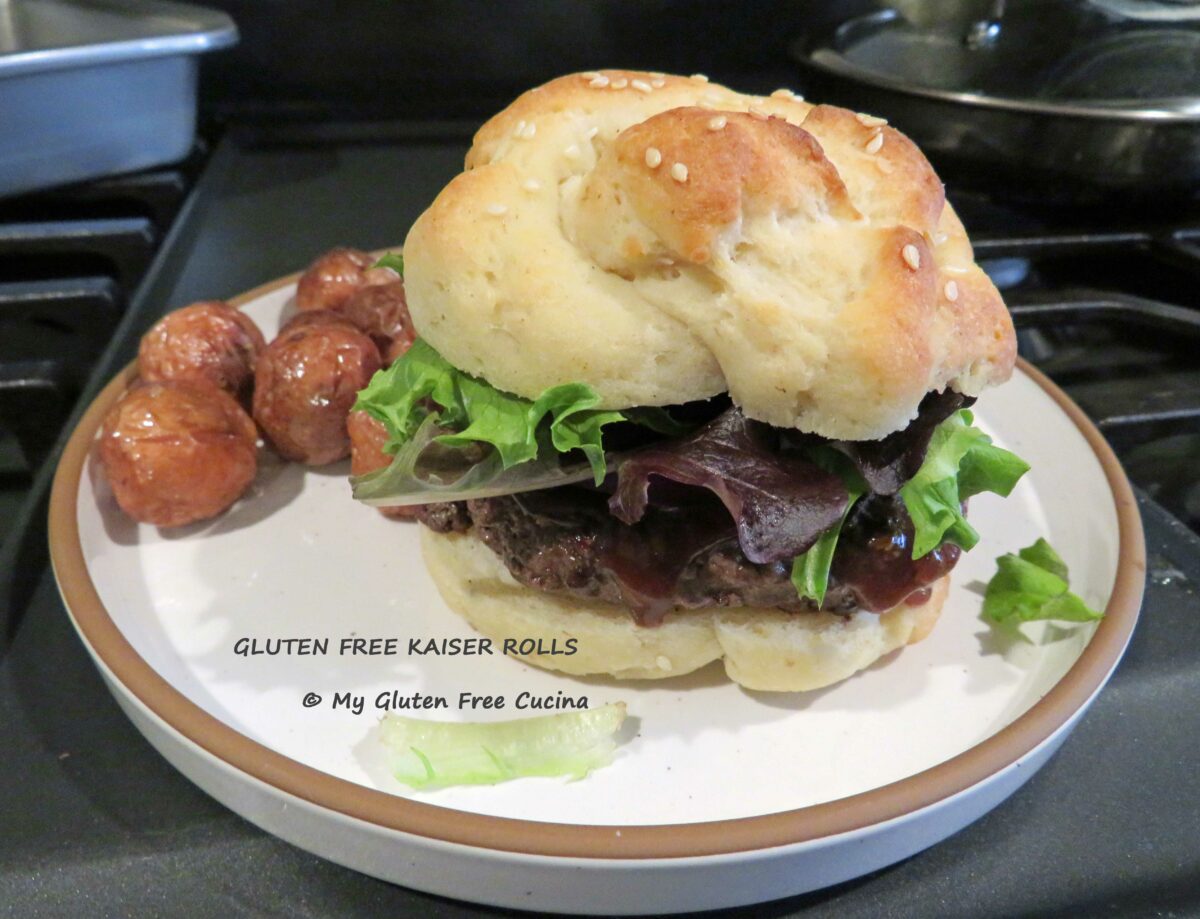
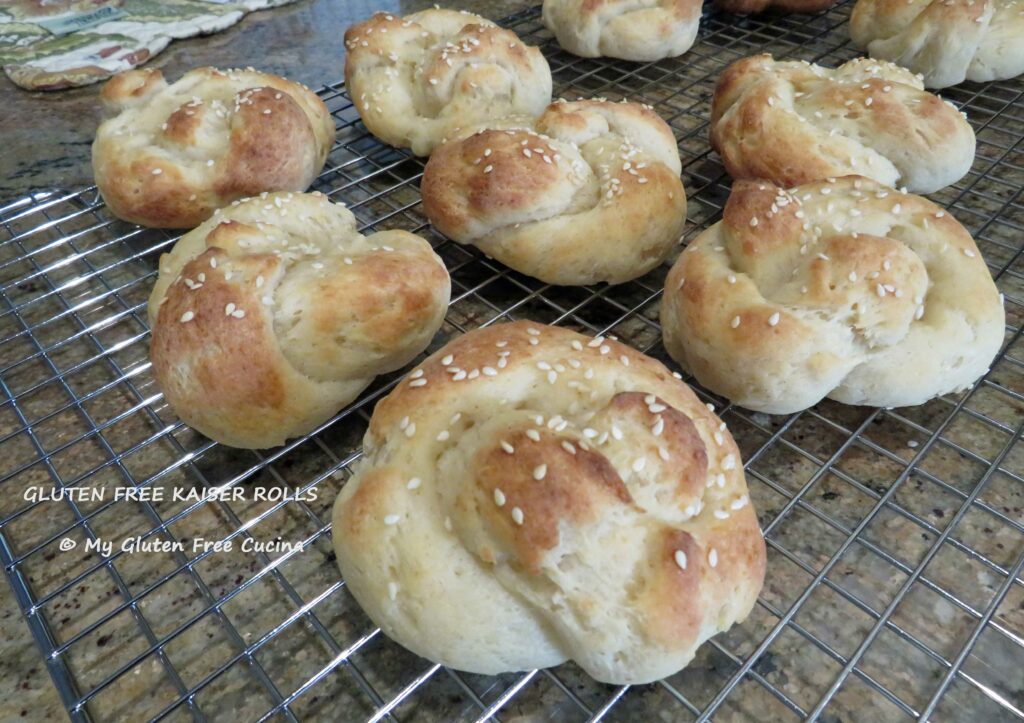
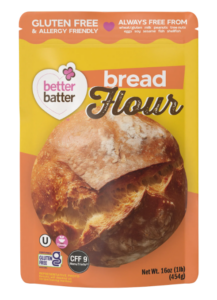
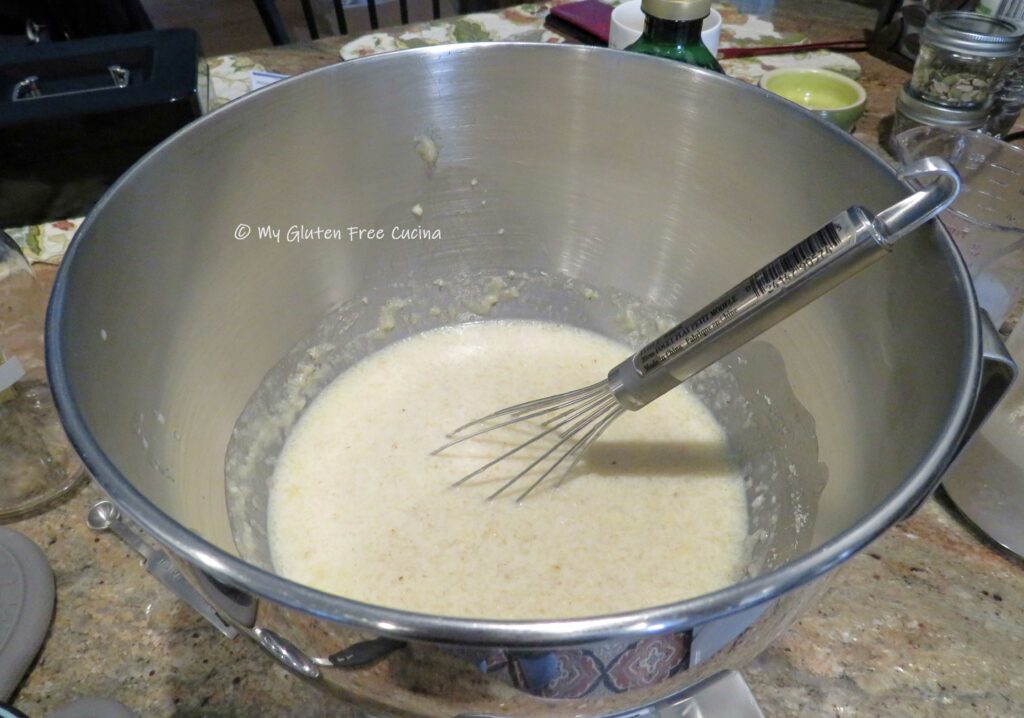
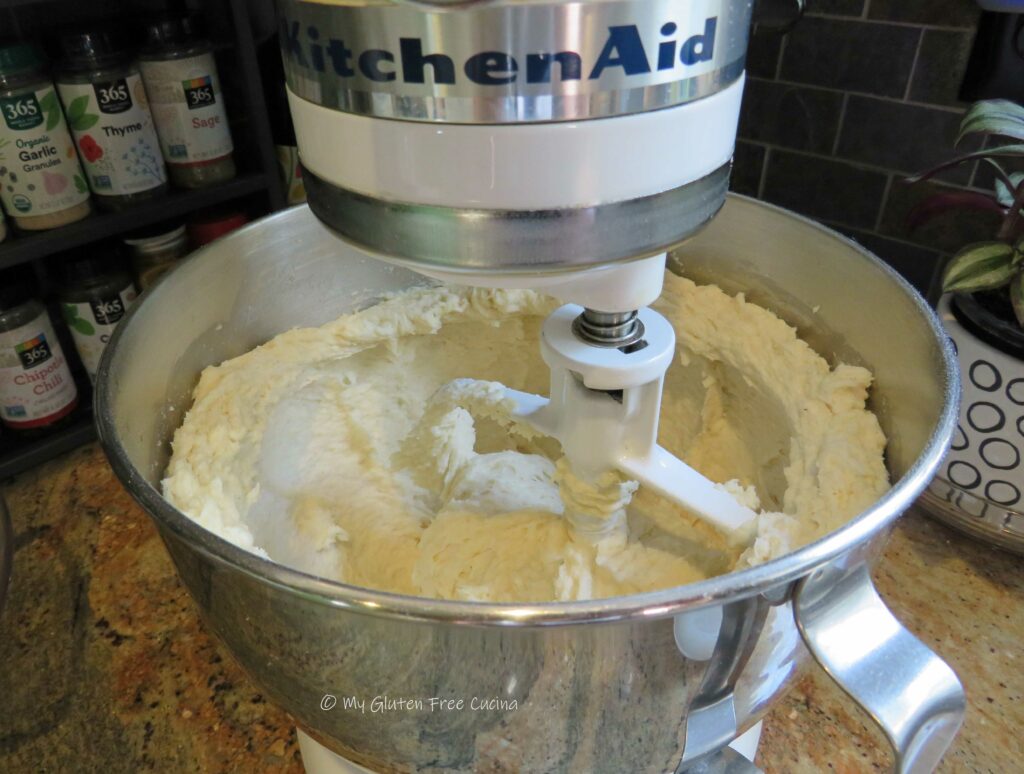

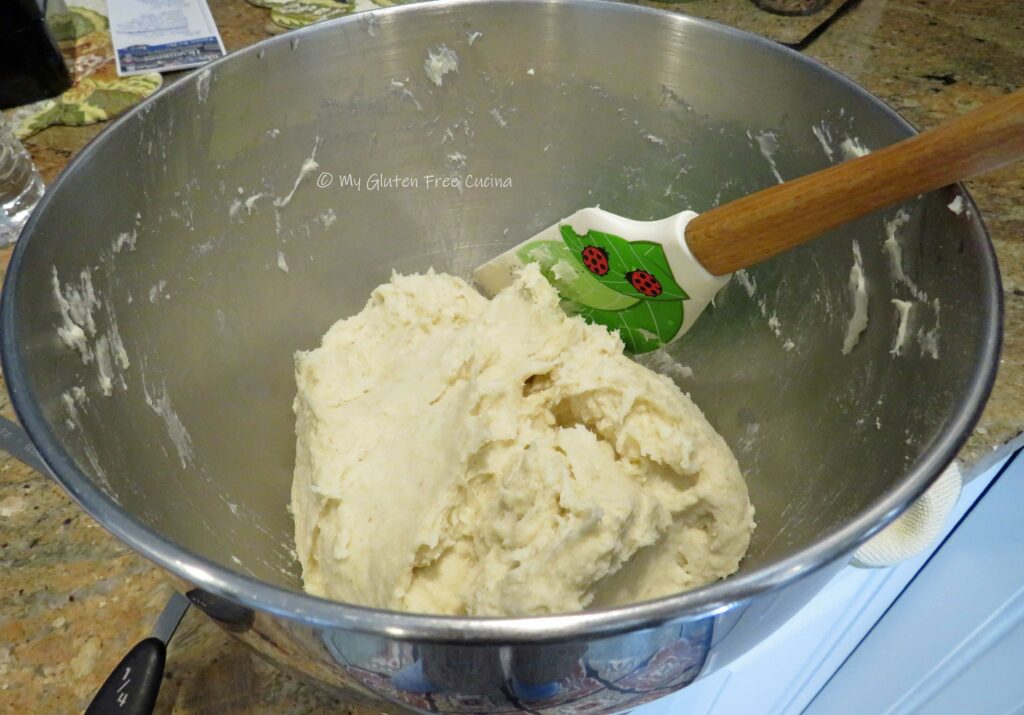
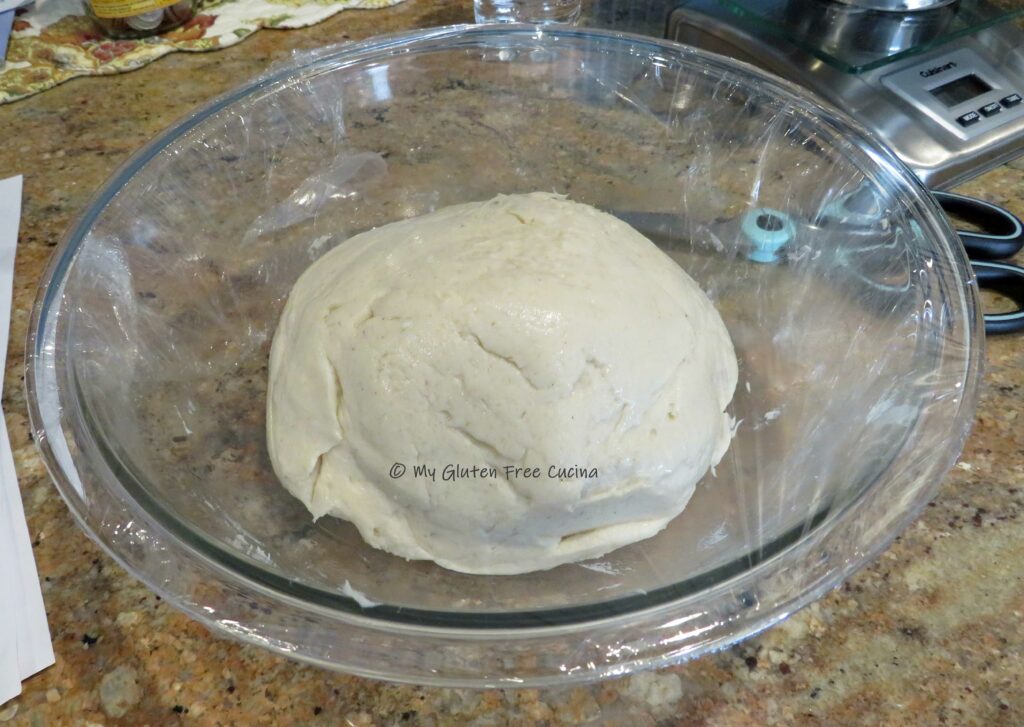
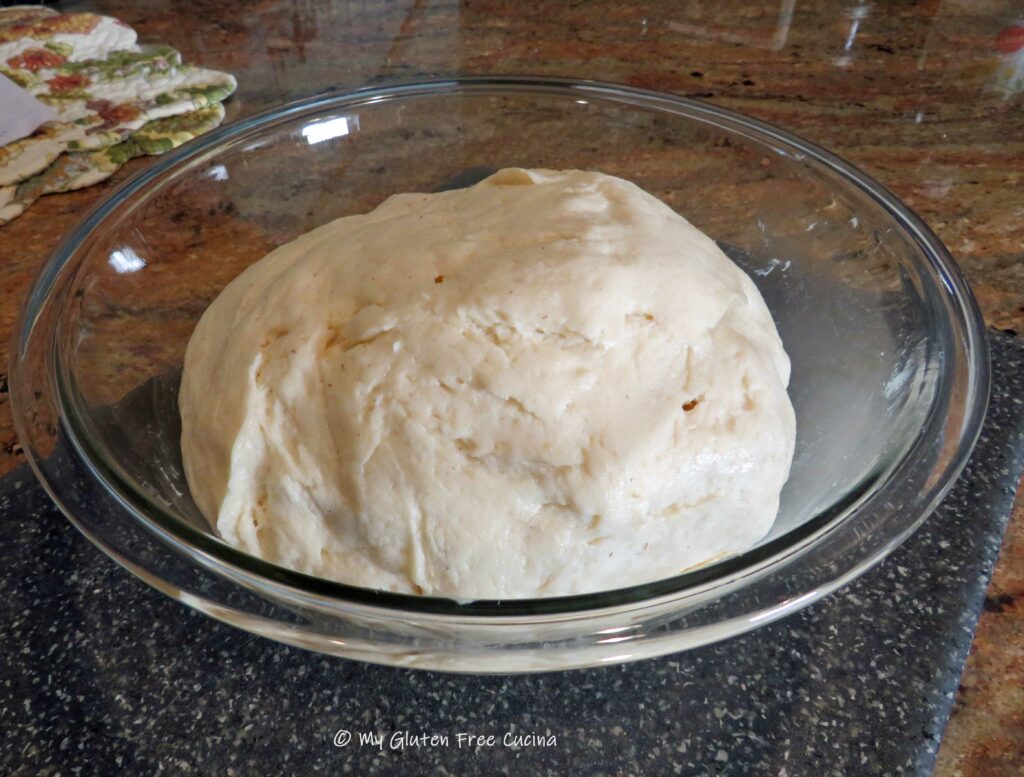
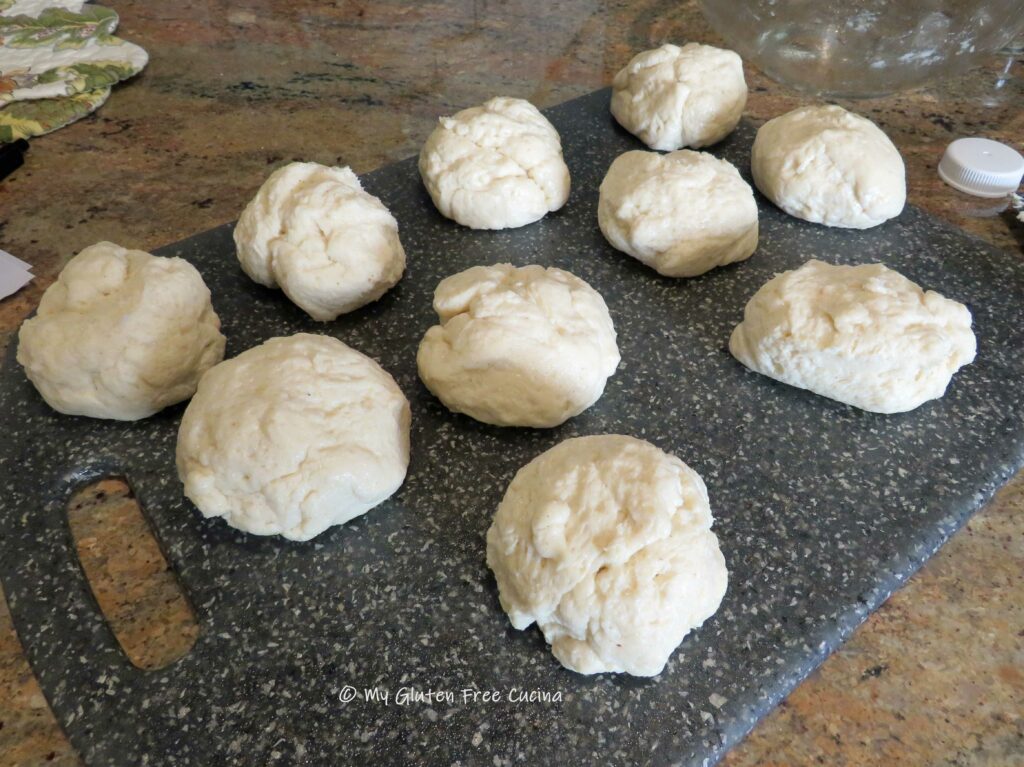
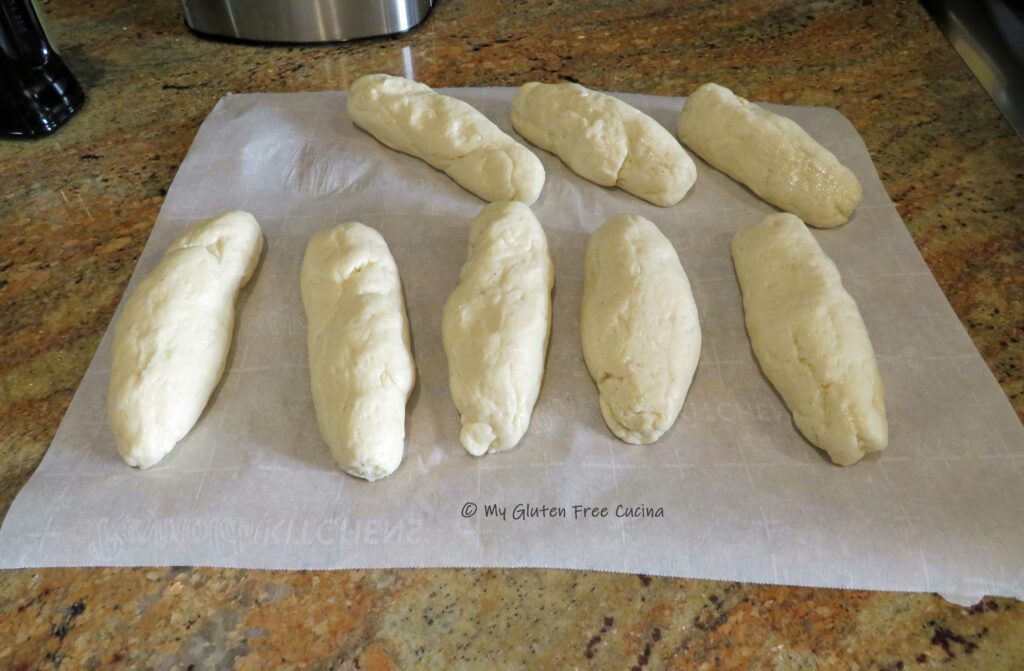
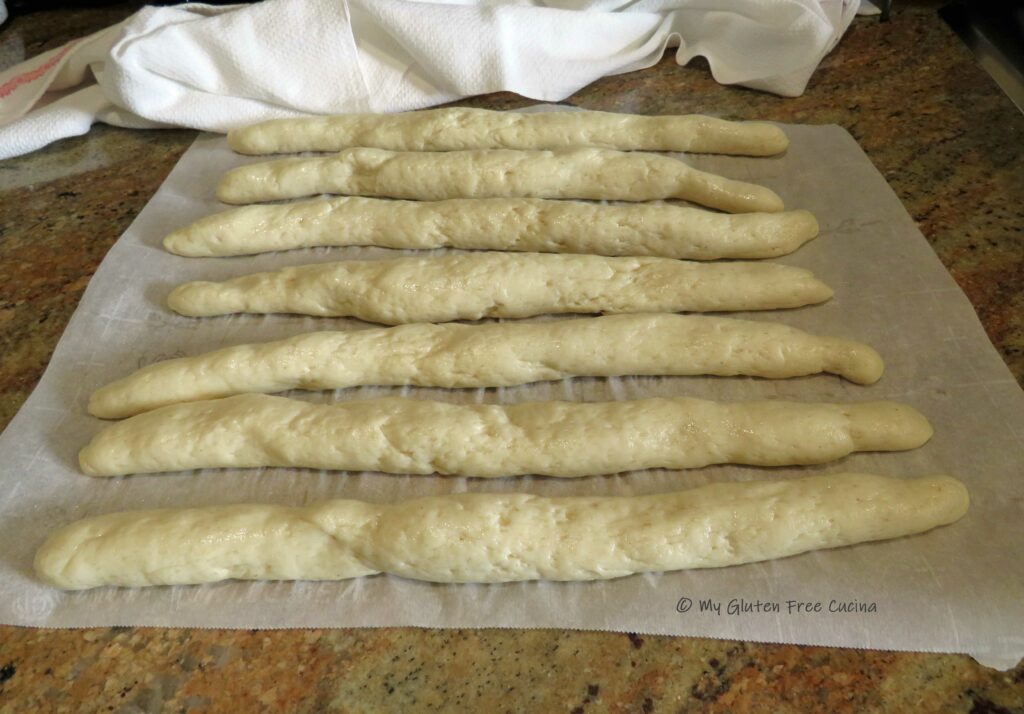
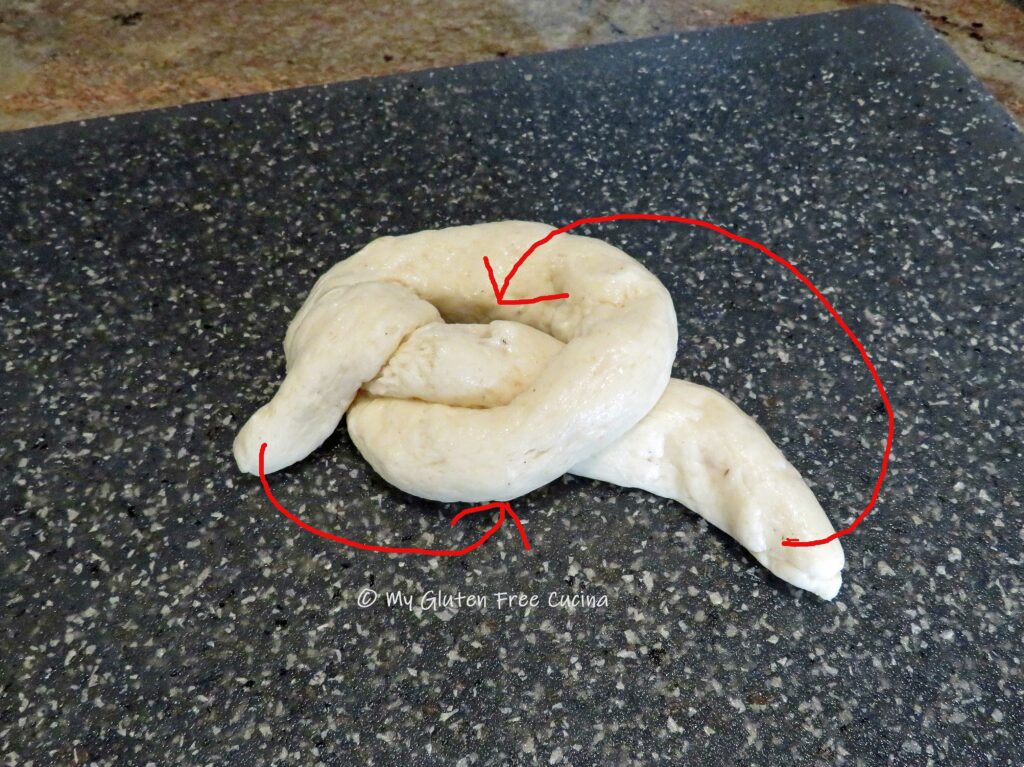
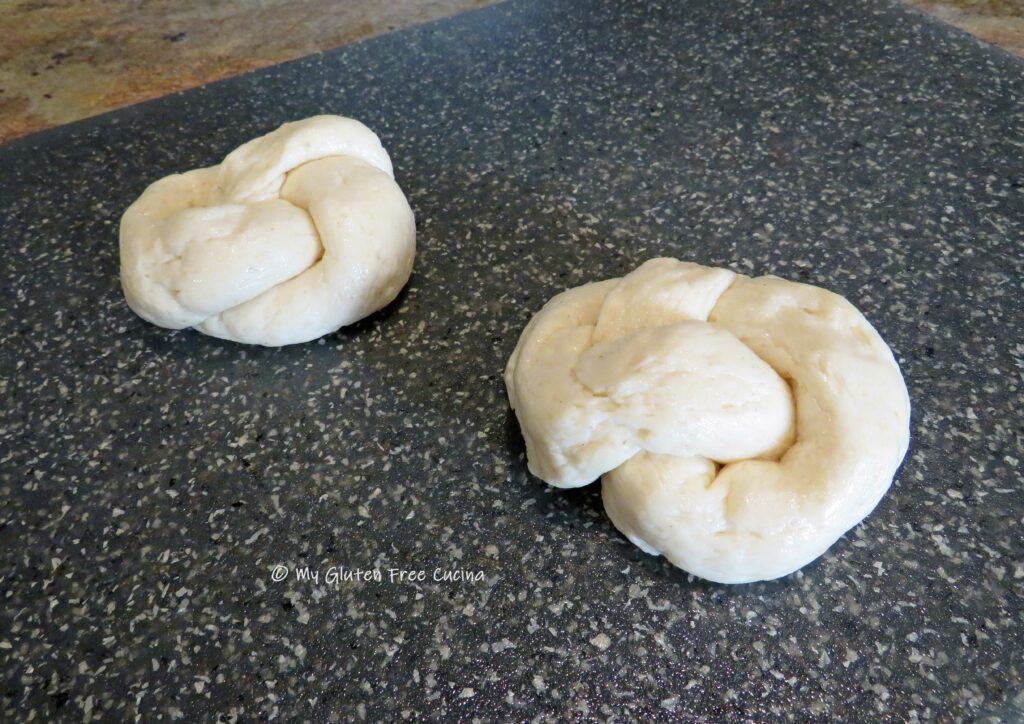
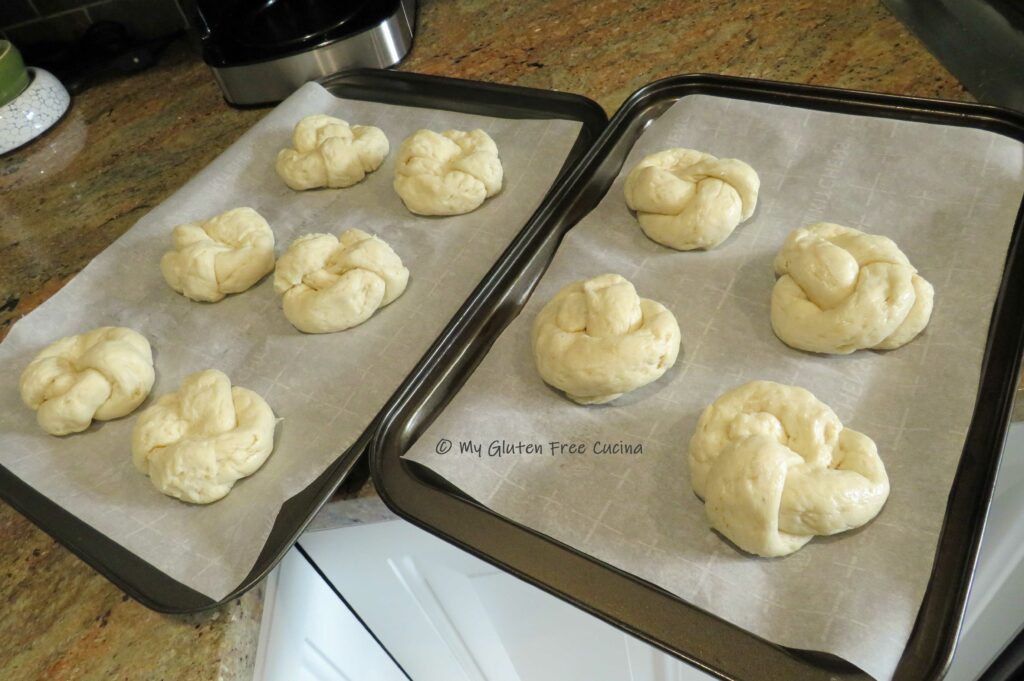
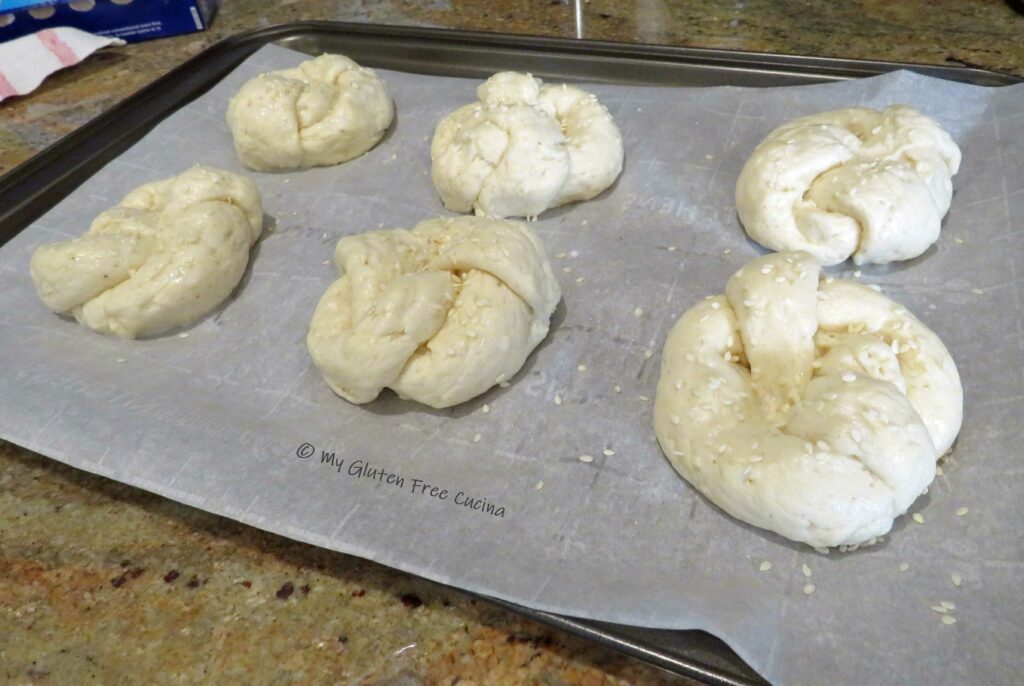
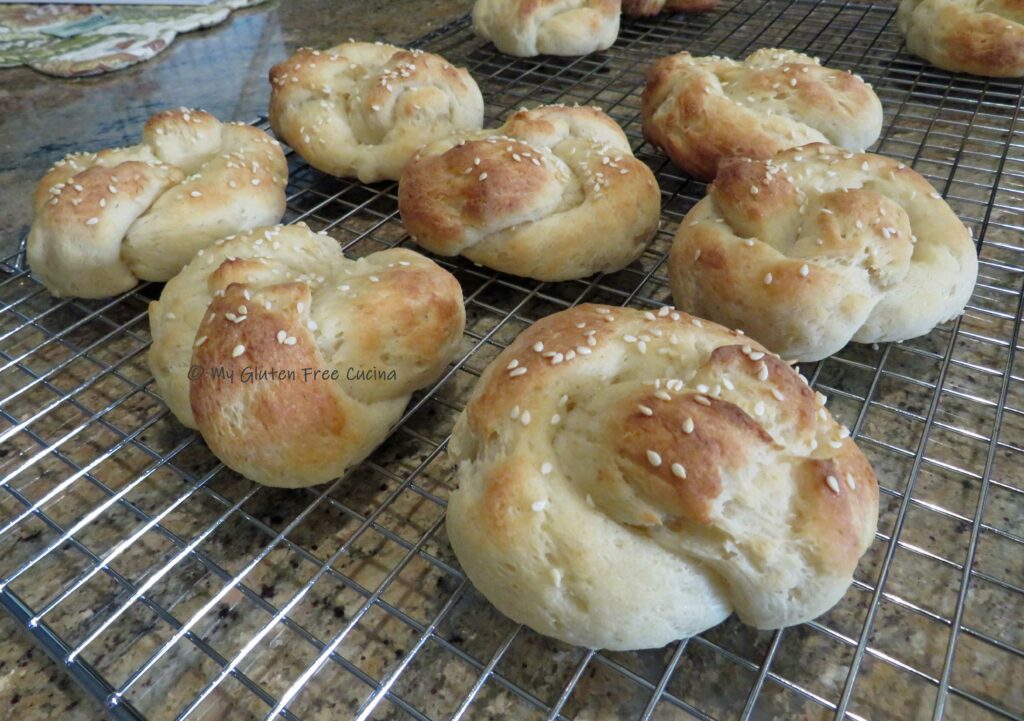
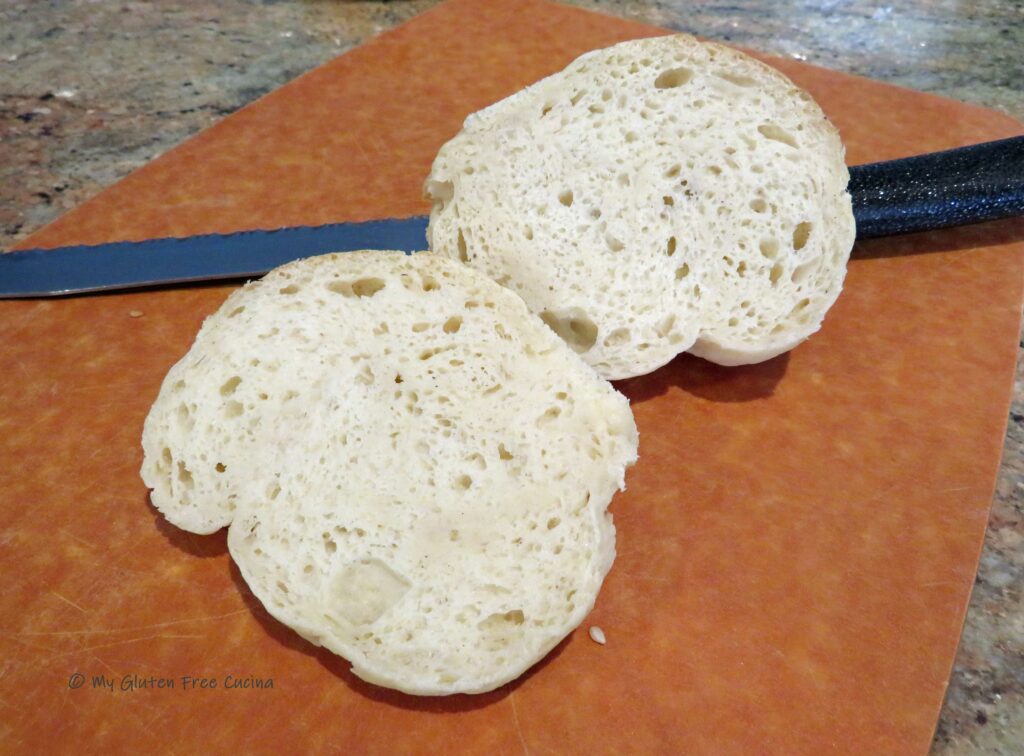
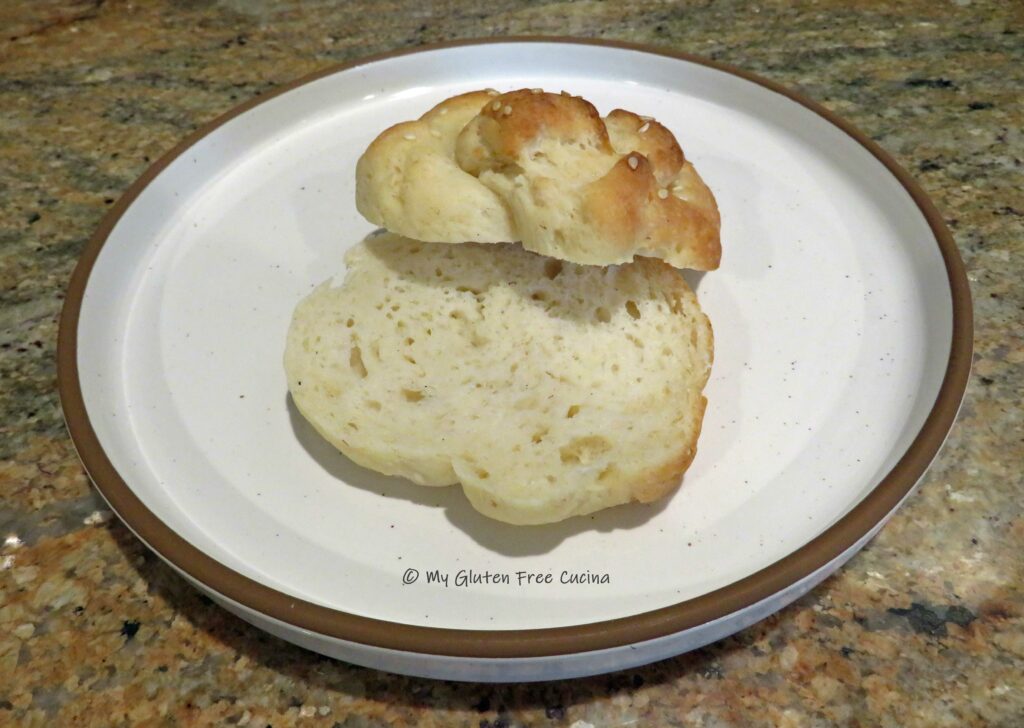
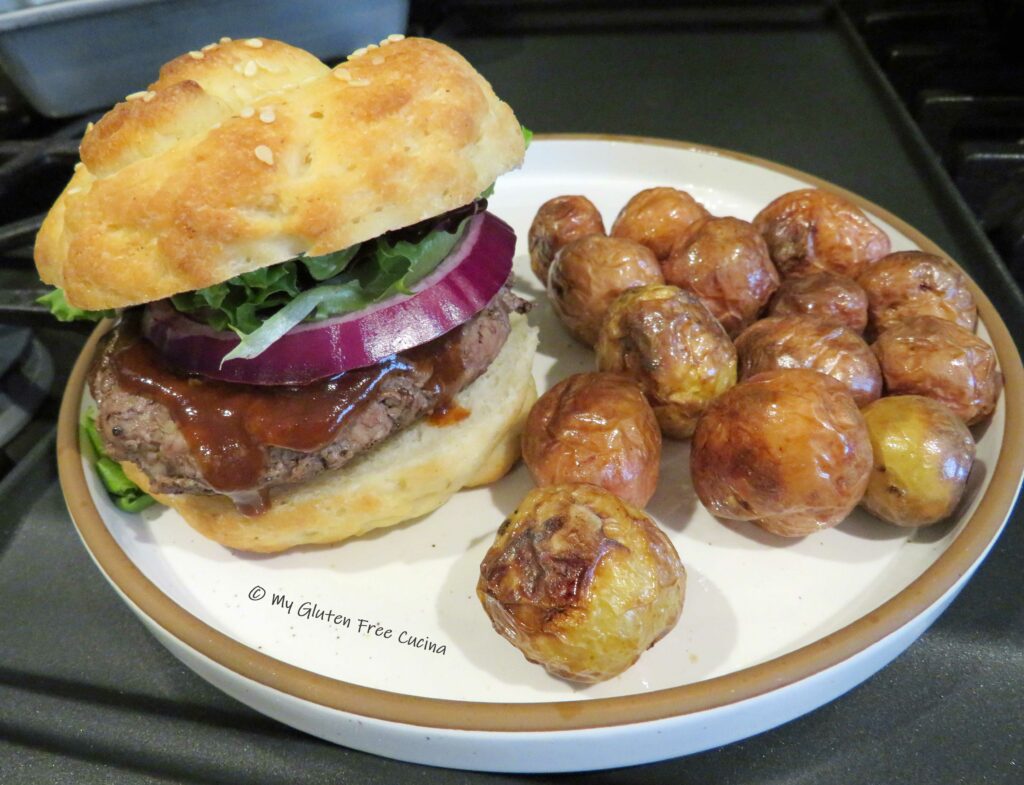
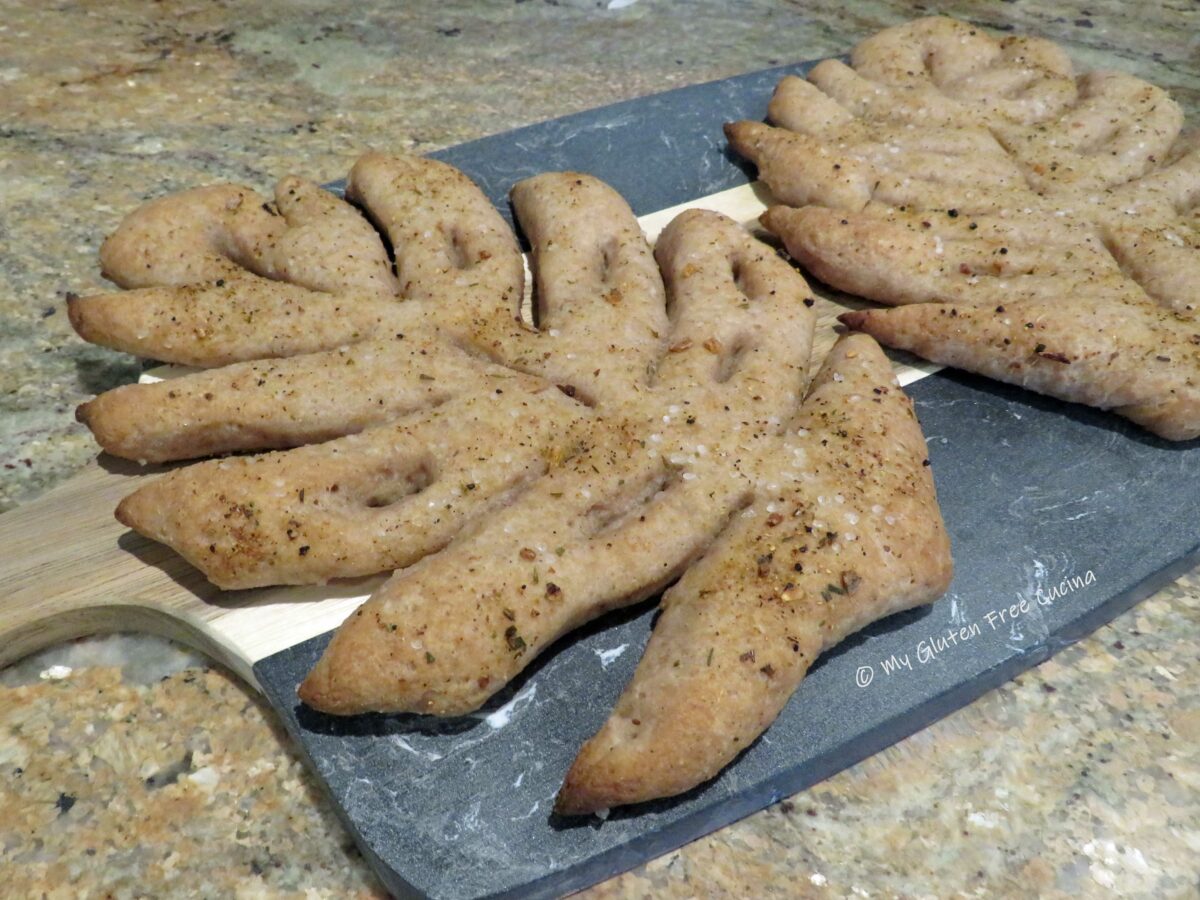
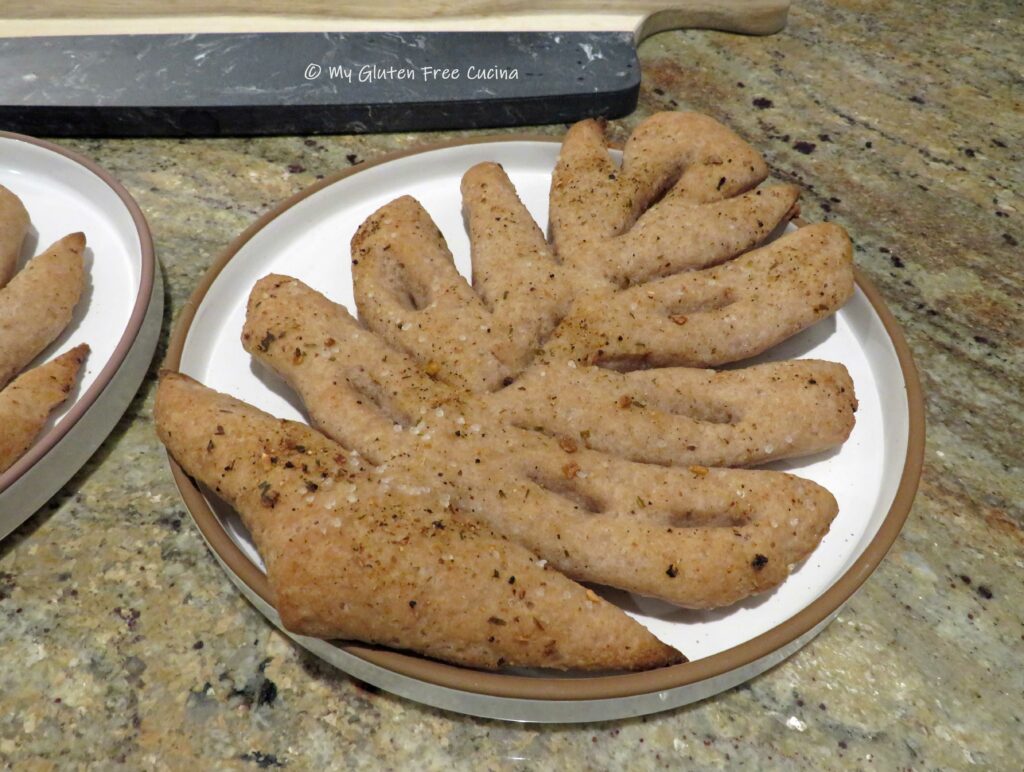

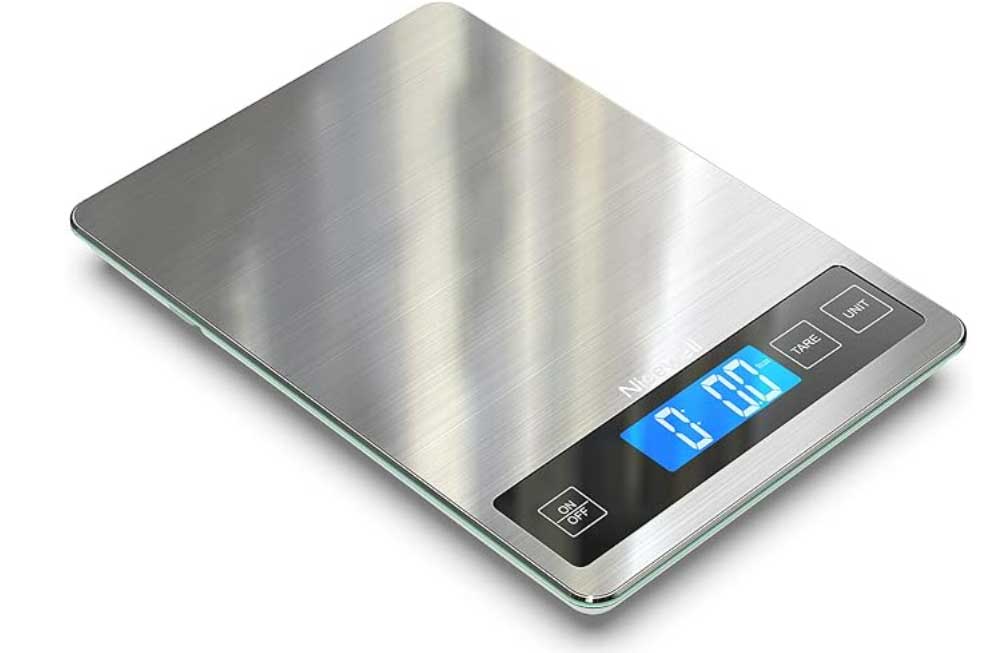
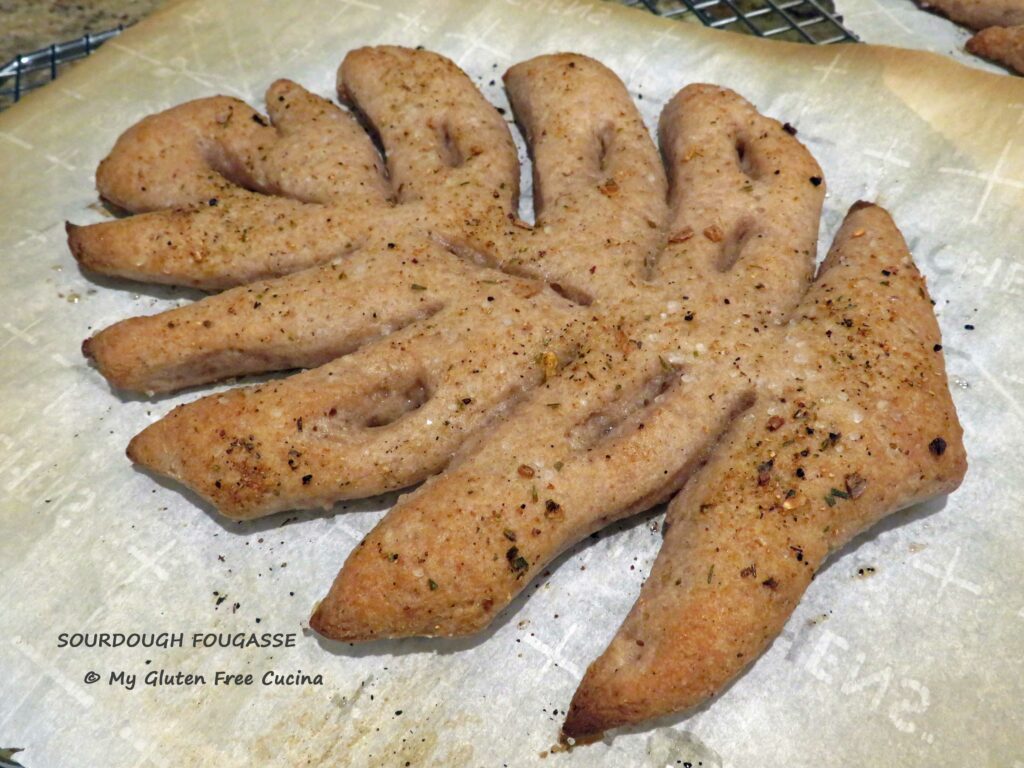
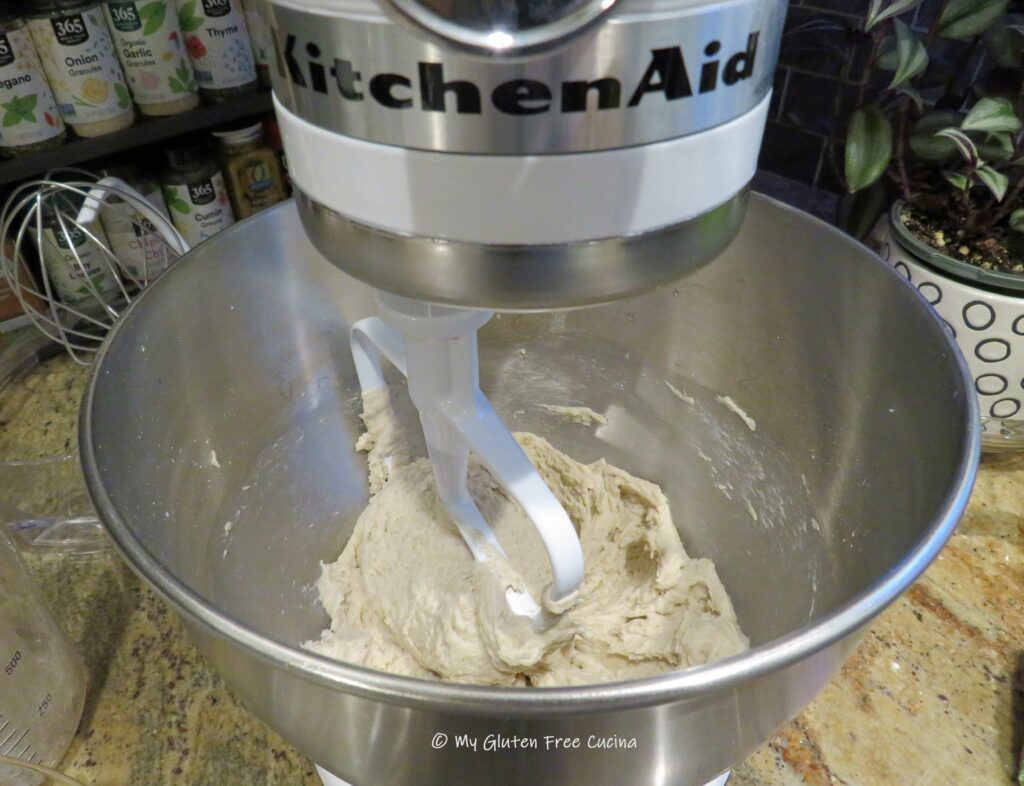
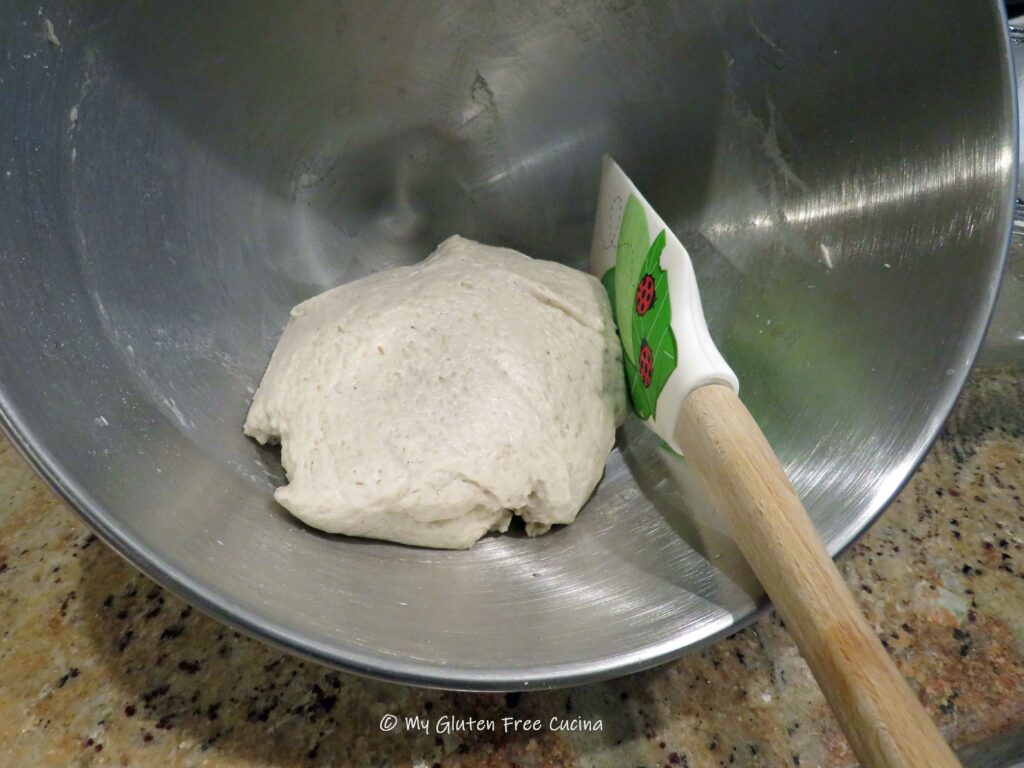
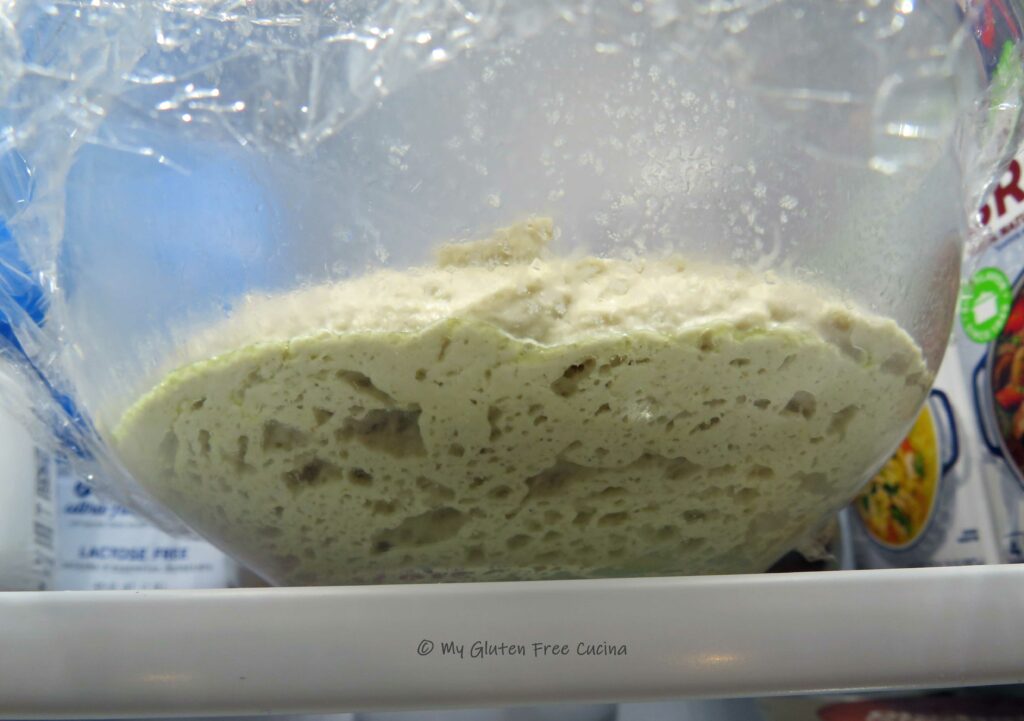
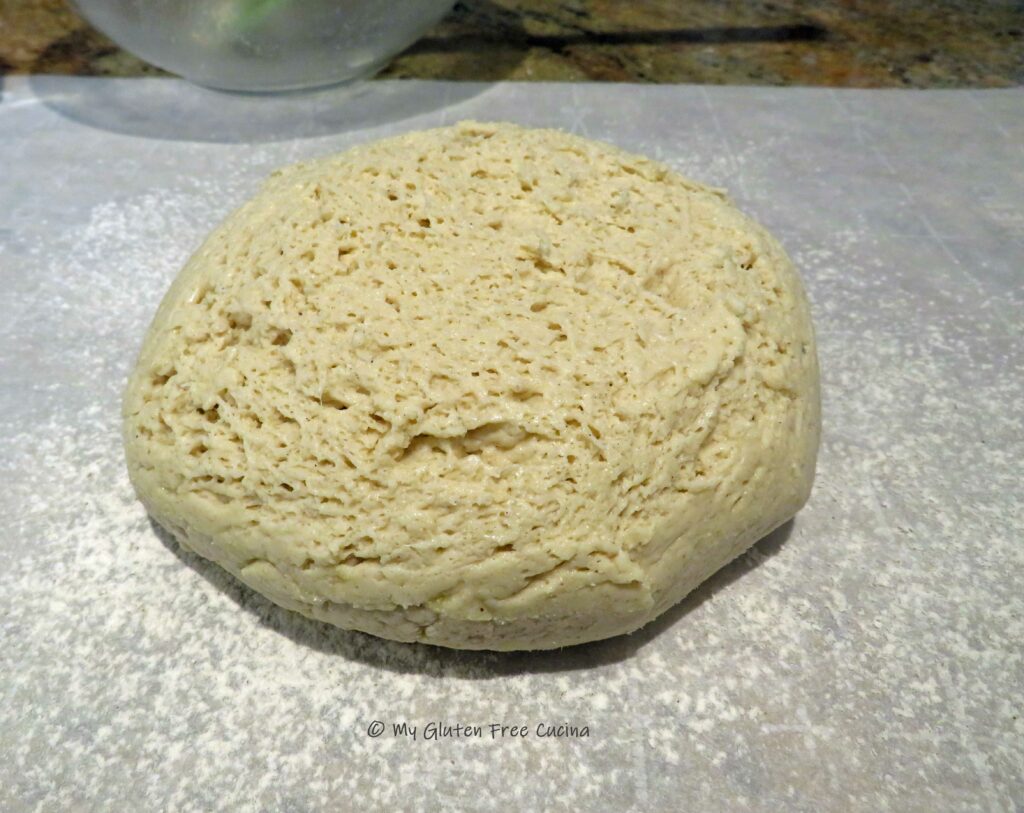
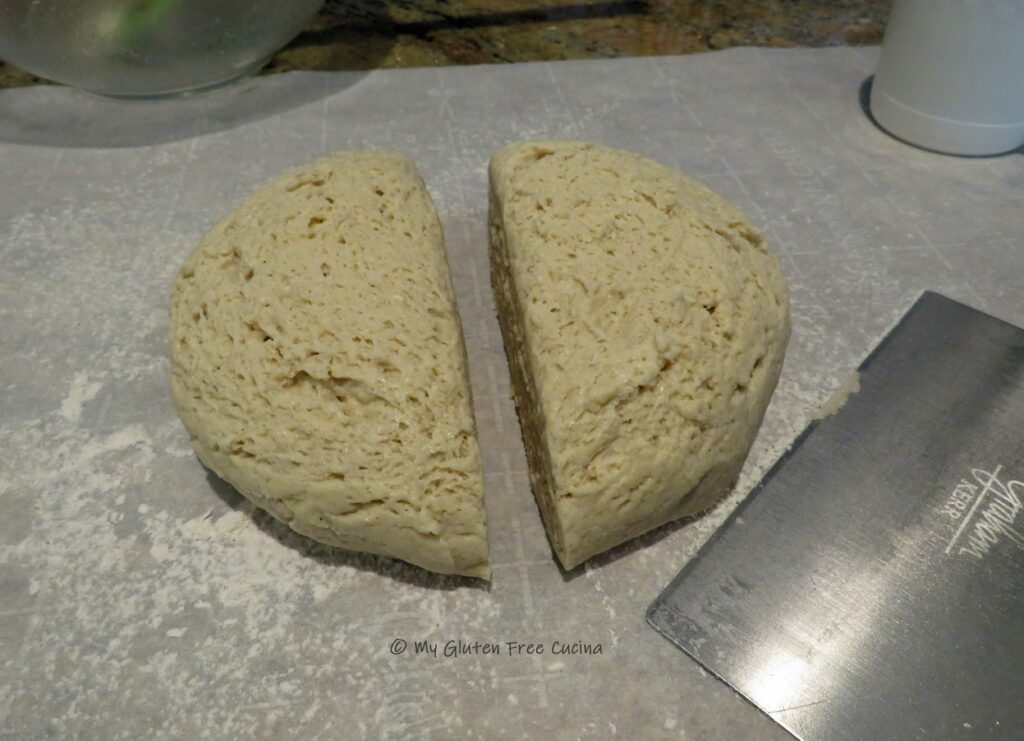
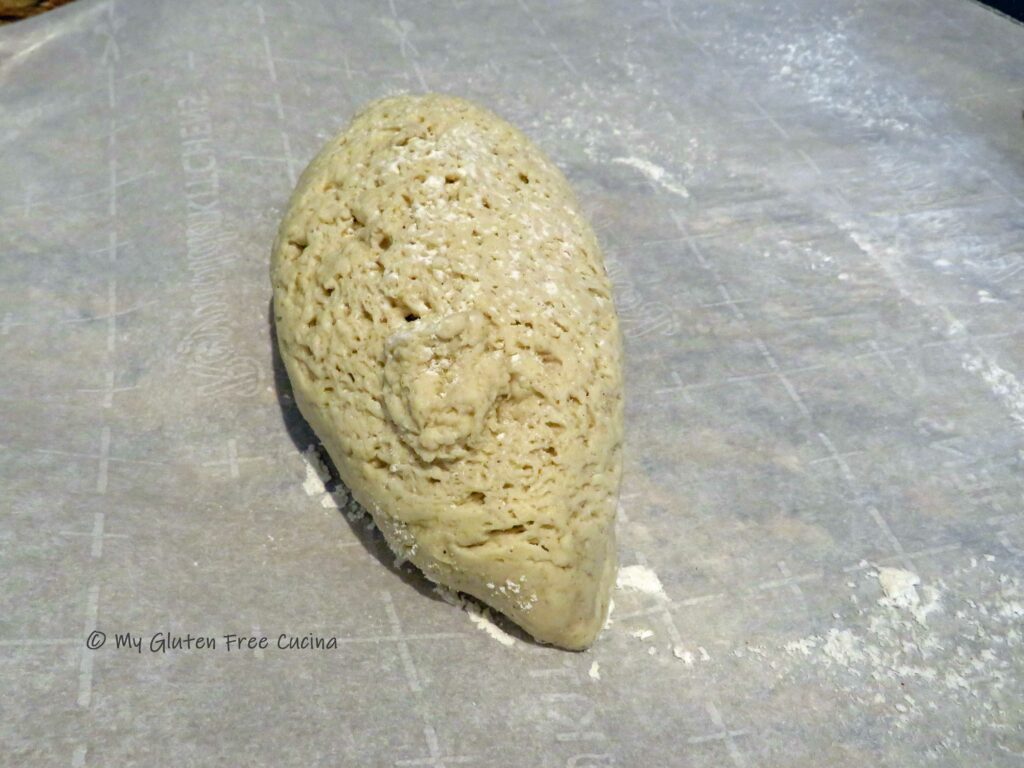
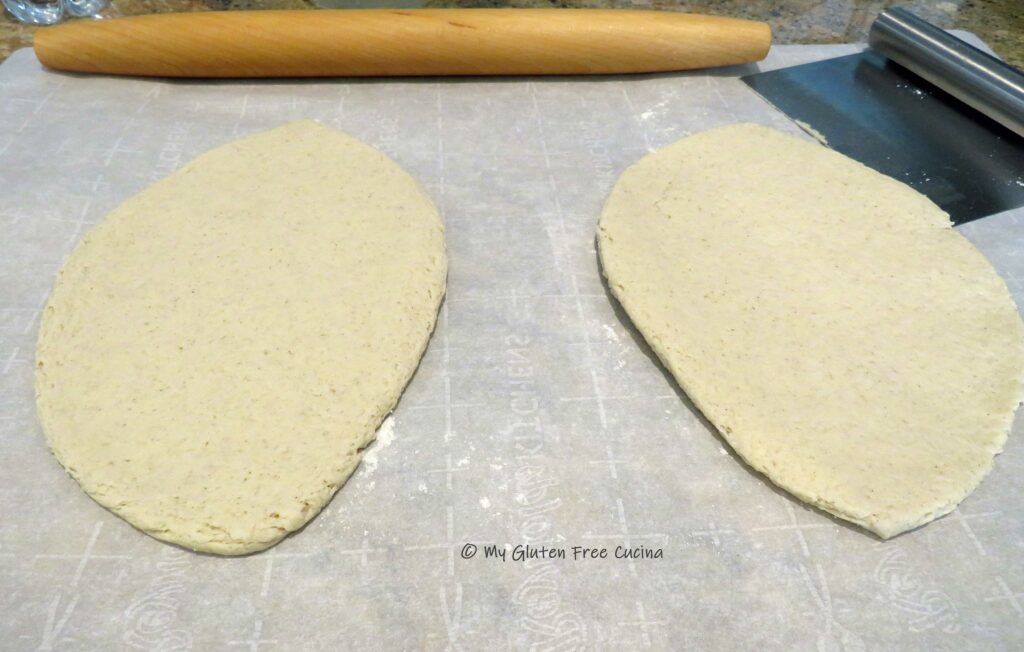
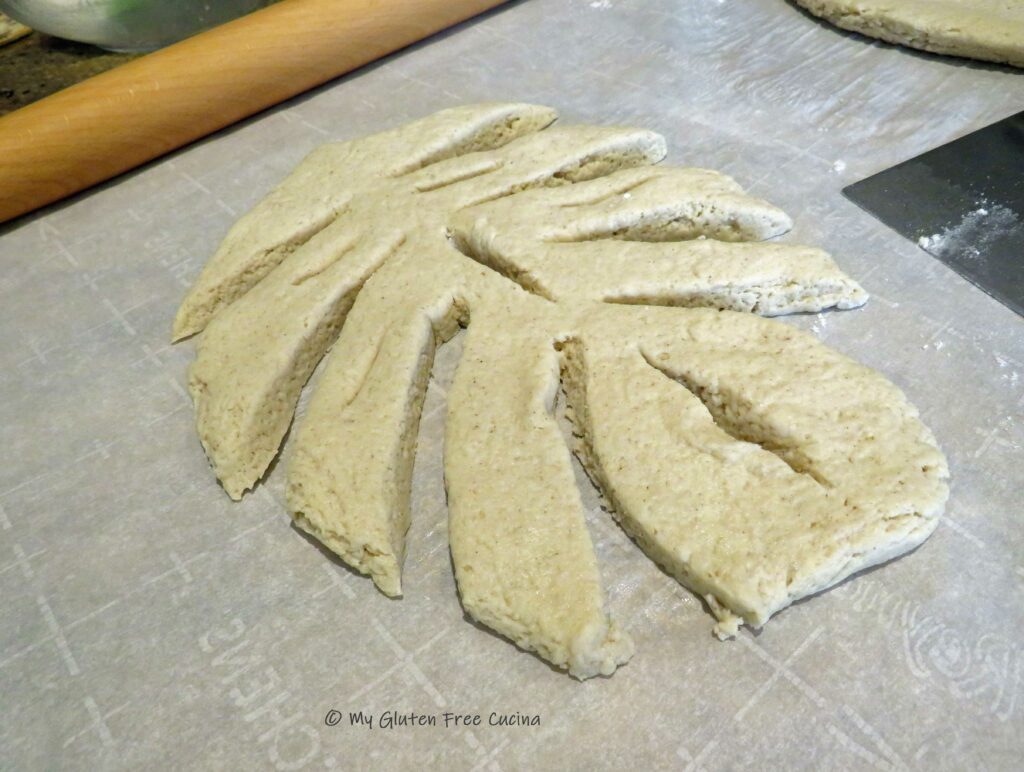

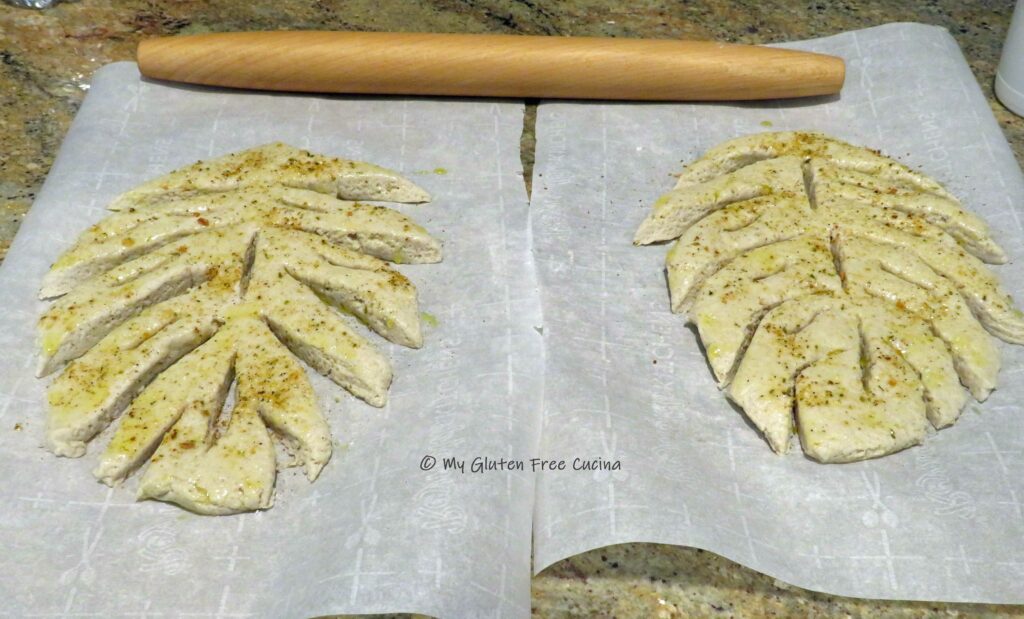
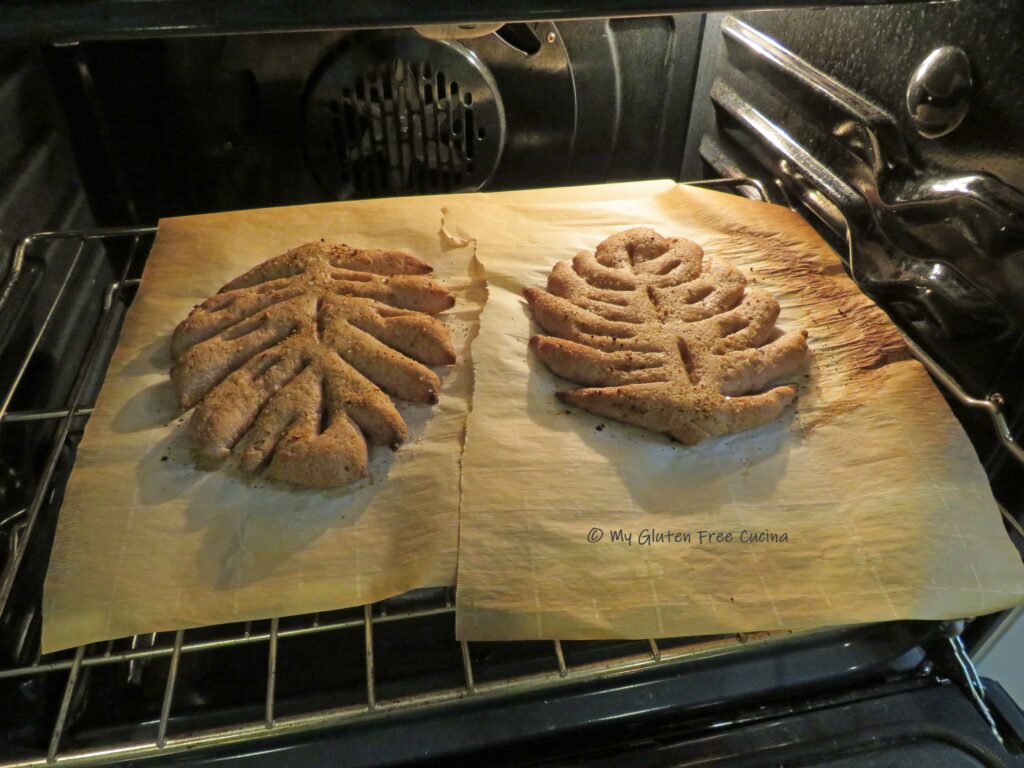
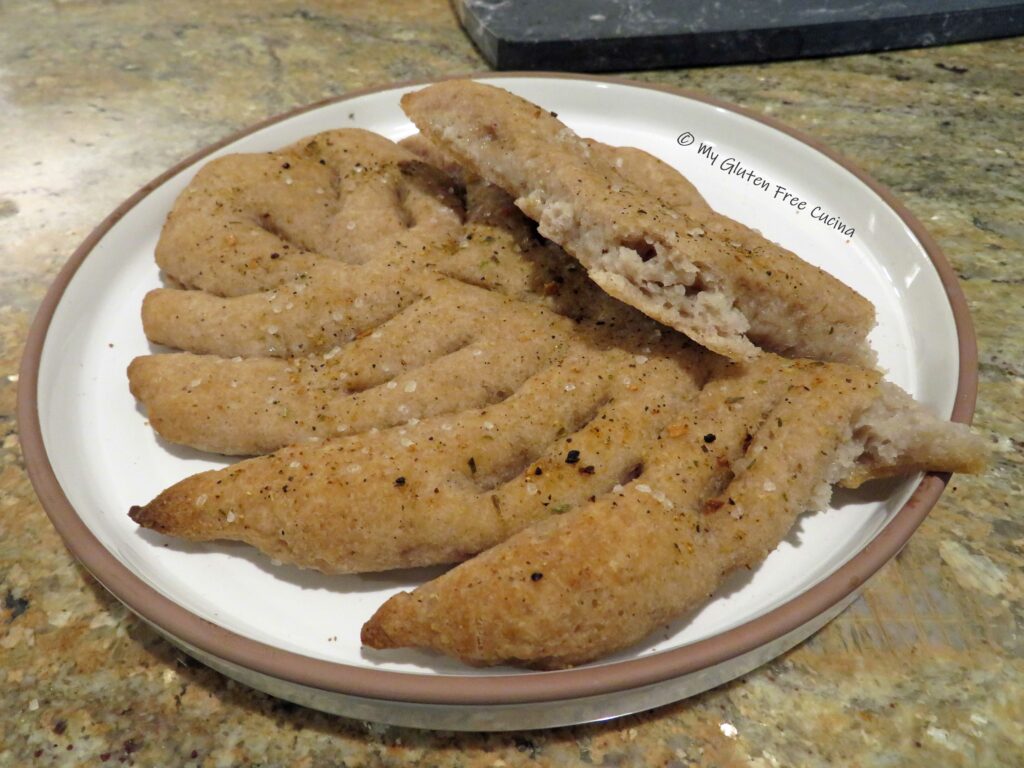
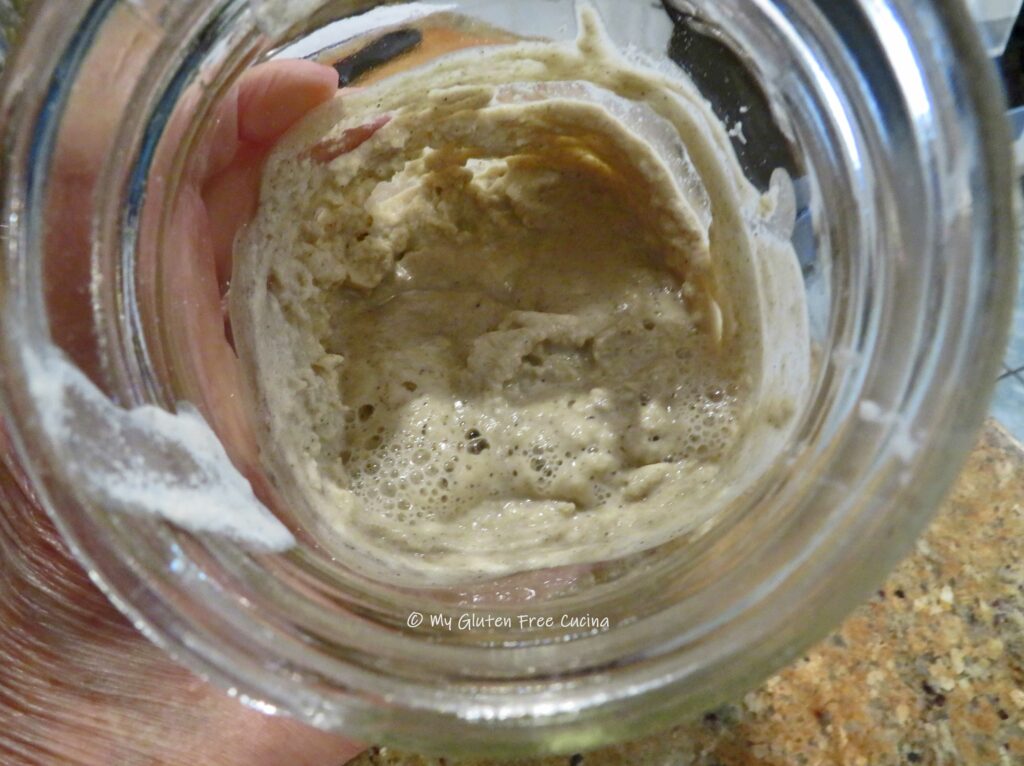
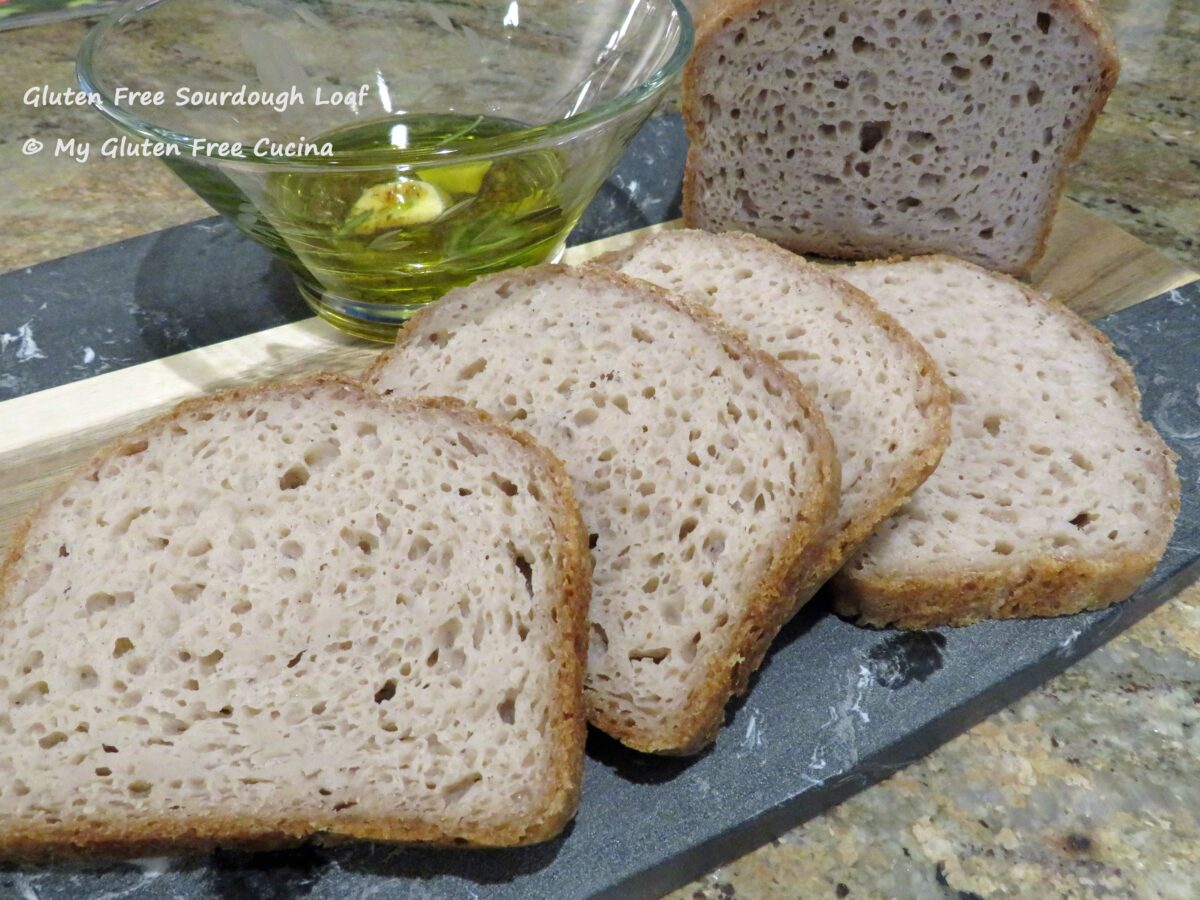
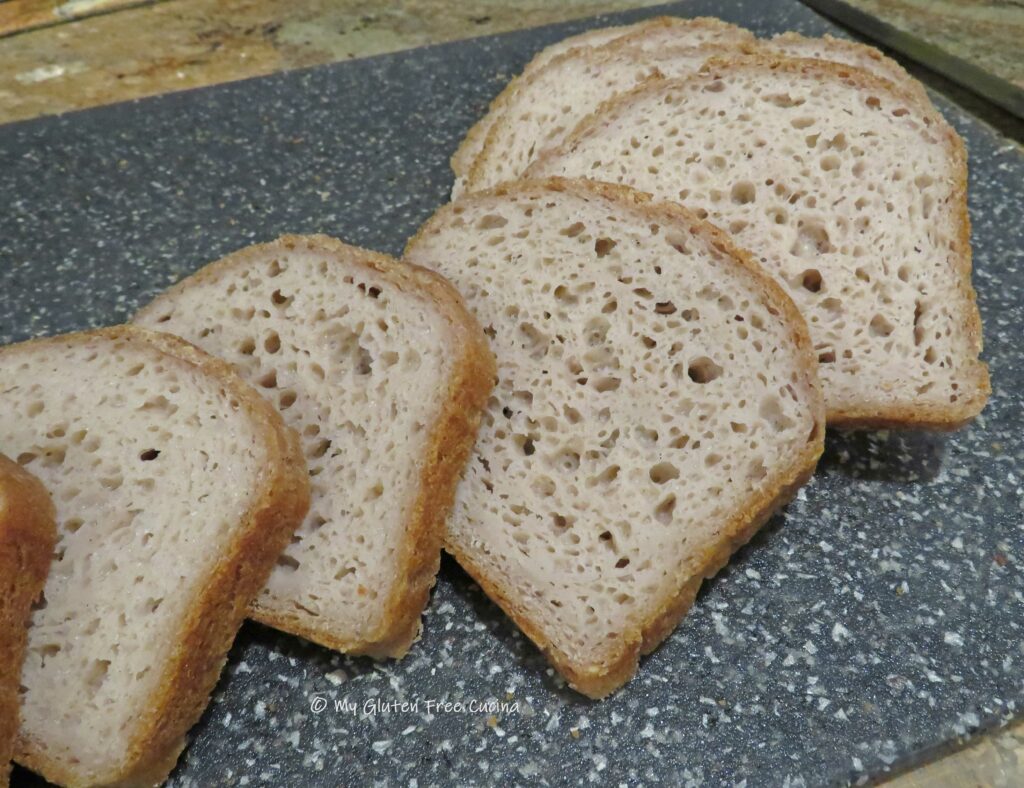

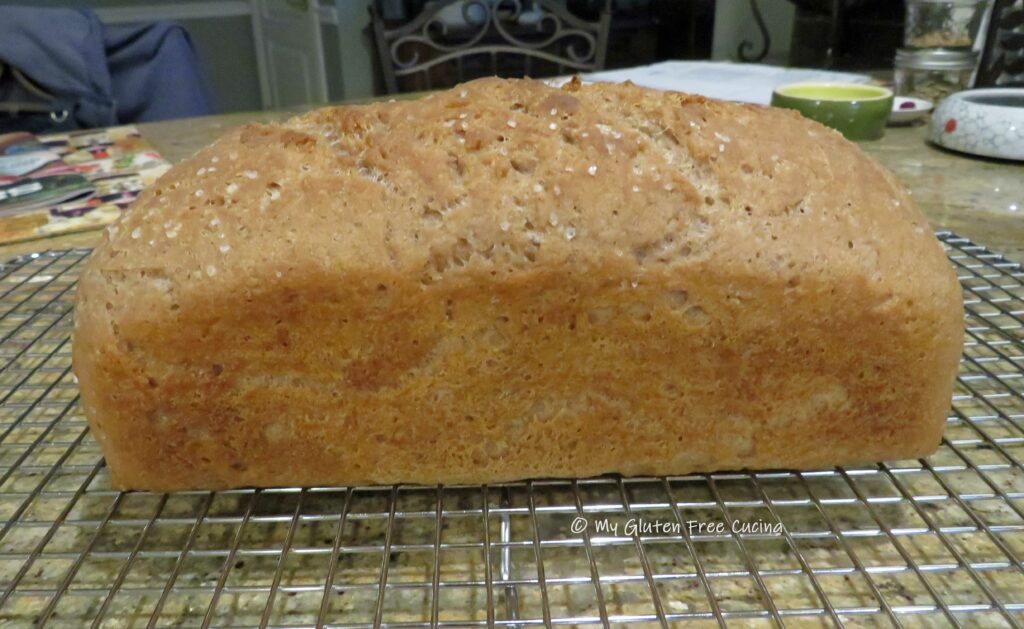
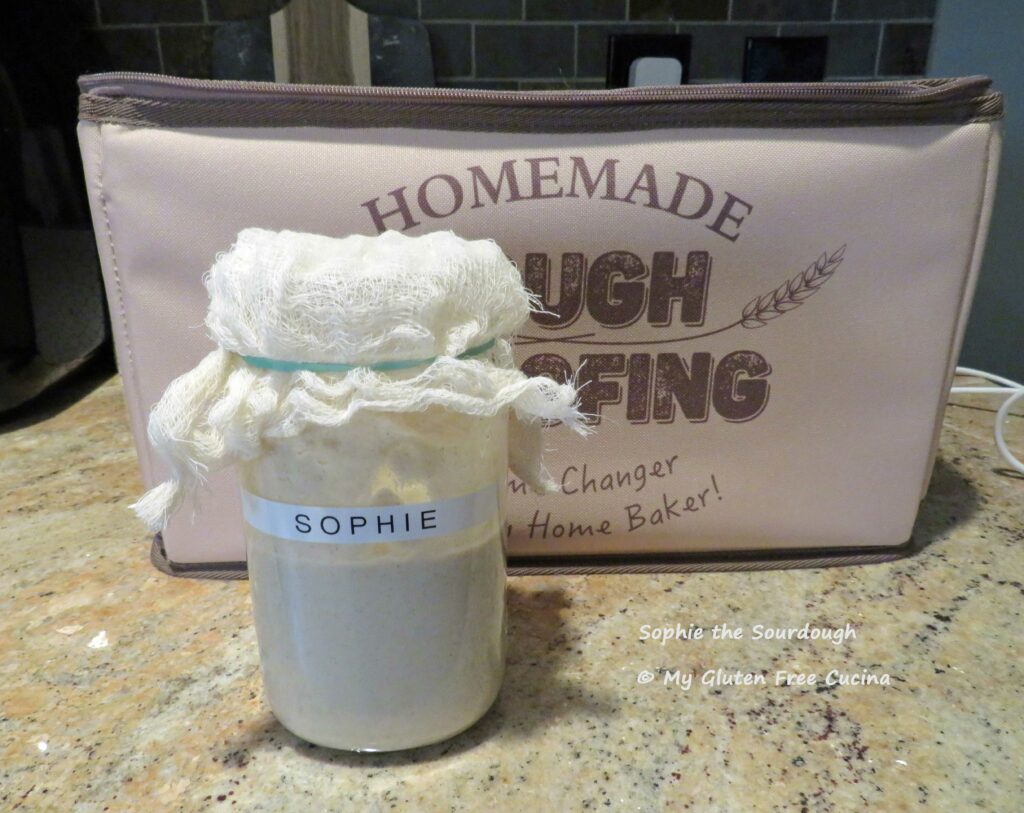
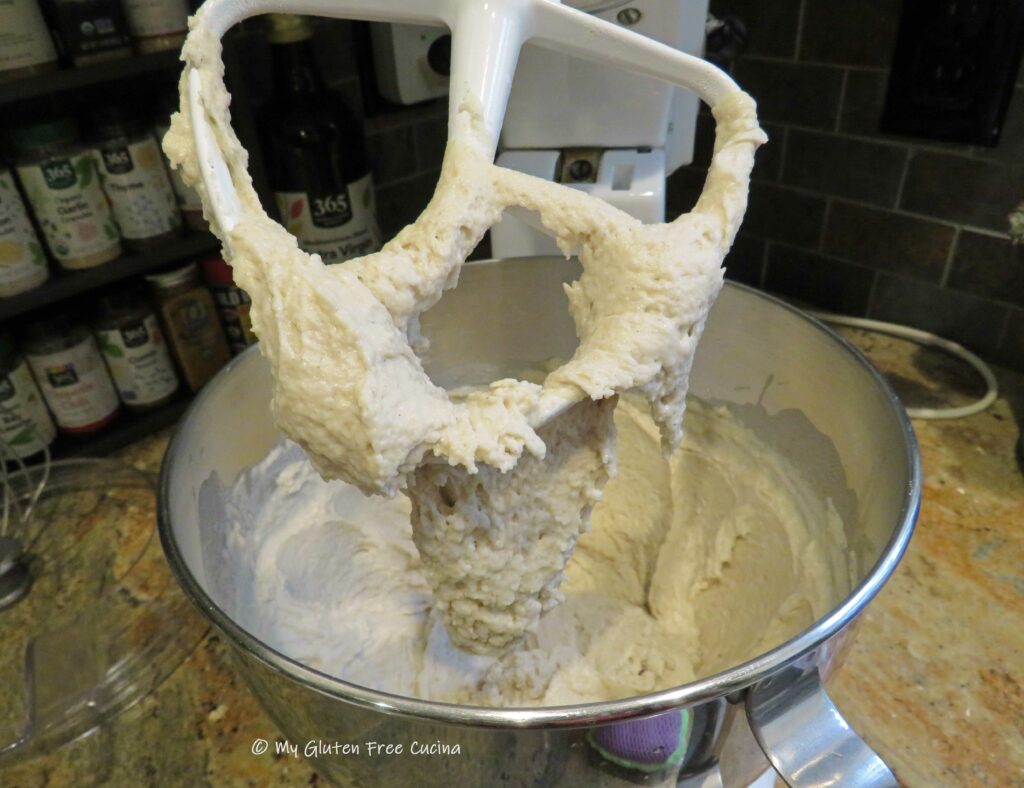
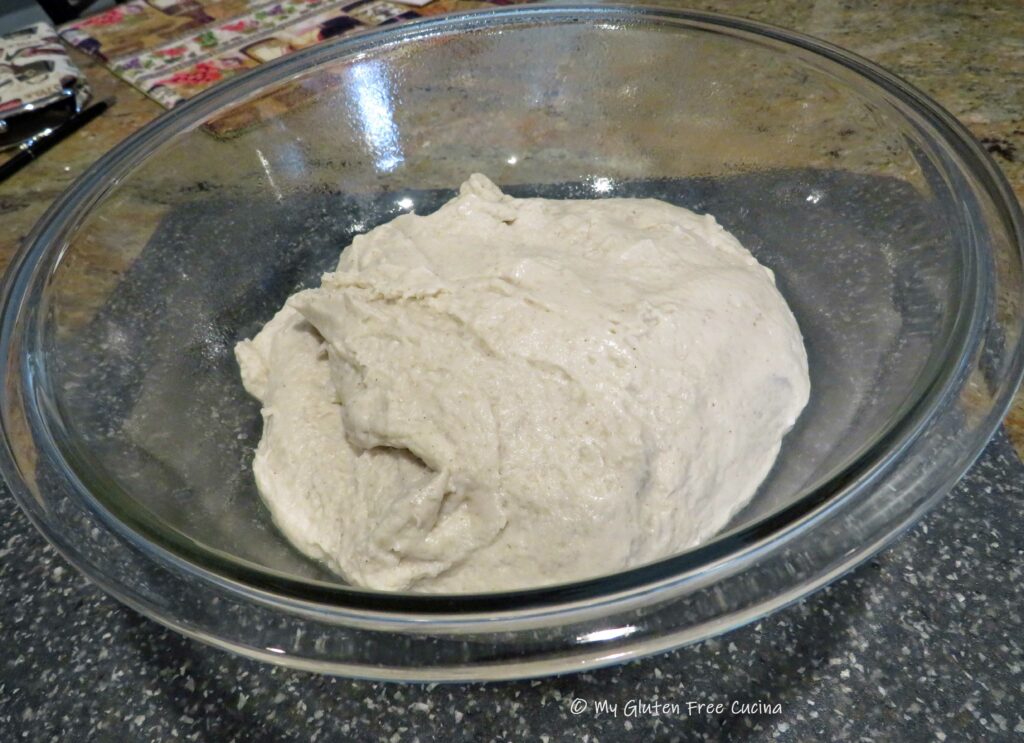

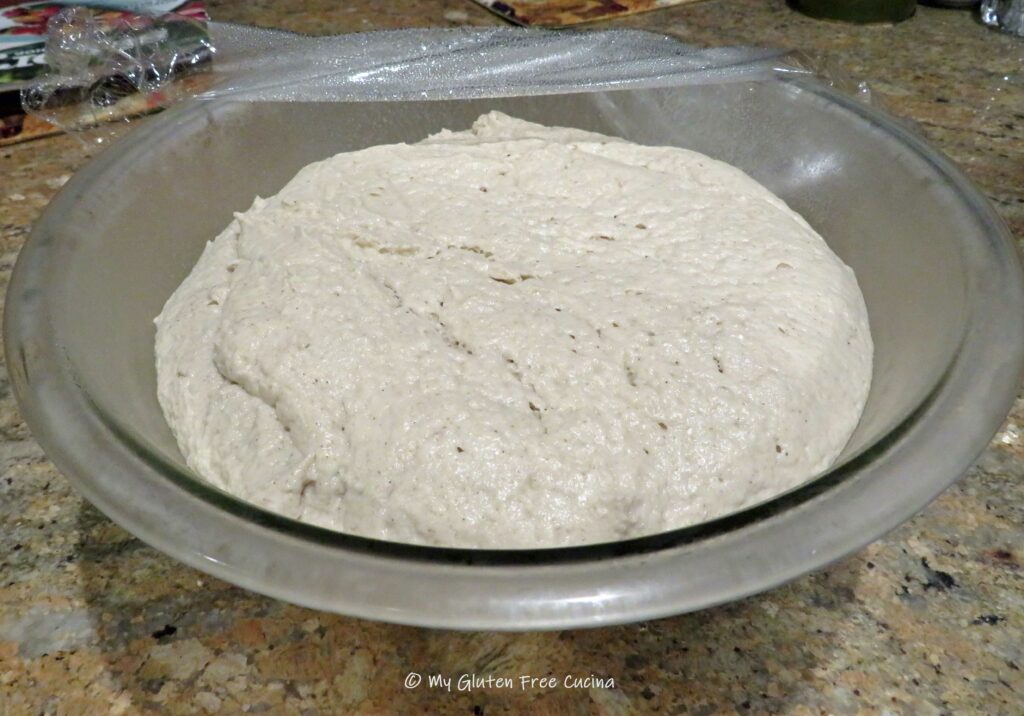
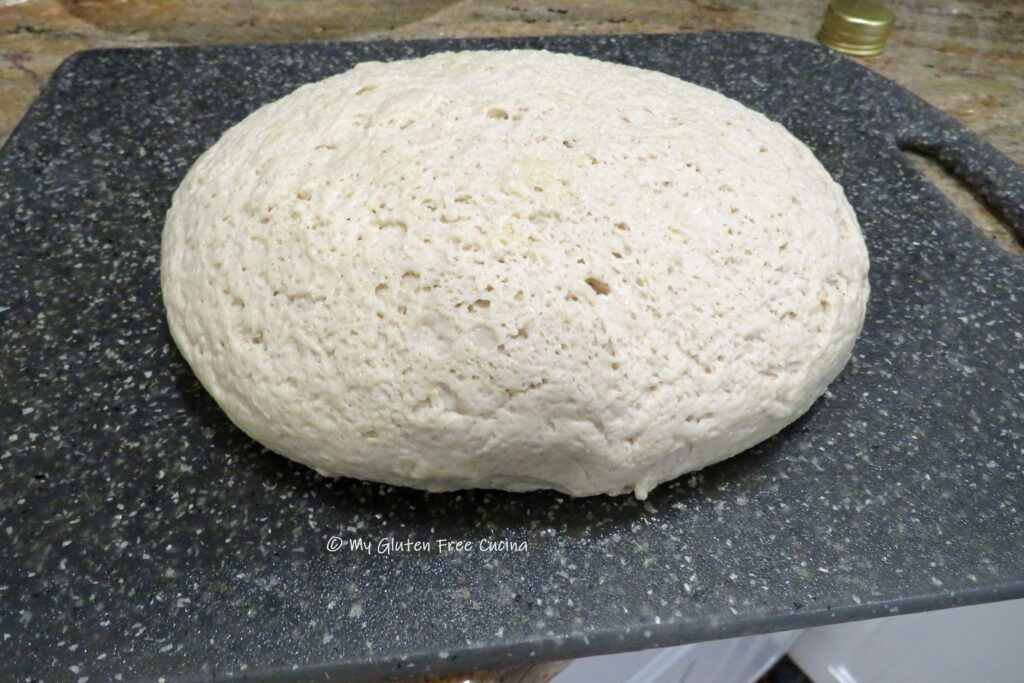 Gently pat the dough into a rectangle, don’t press hard and do not use a rolling pin – you want to keep the air bubbles intact as much as possible.
Gently pat the dough into a rectangle, don’t press hard and do not use a rolling pin – you want to keep the air bubbles intact as much as possible.
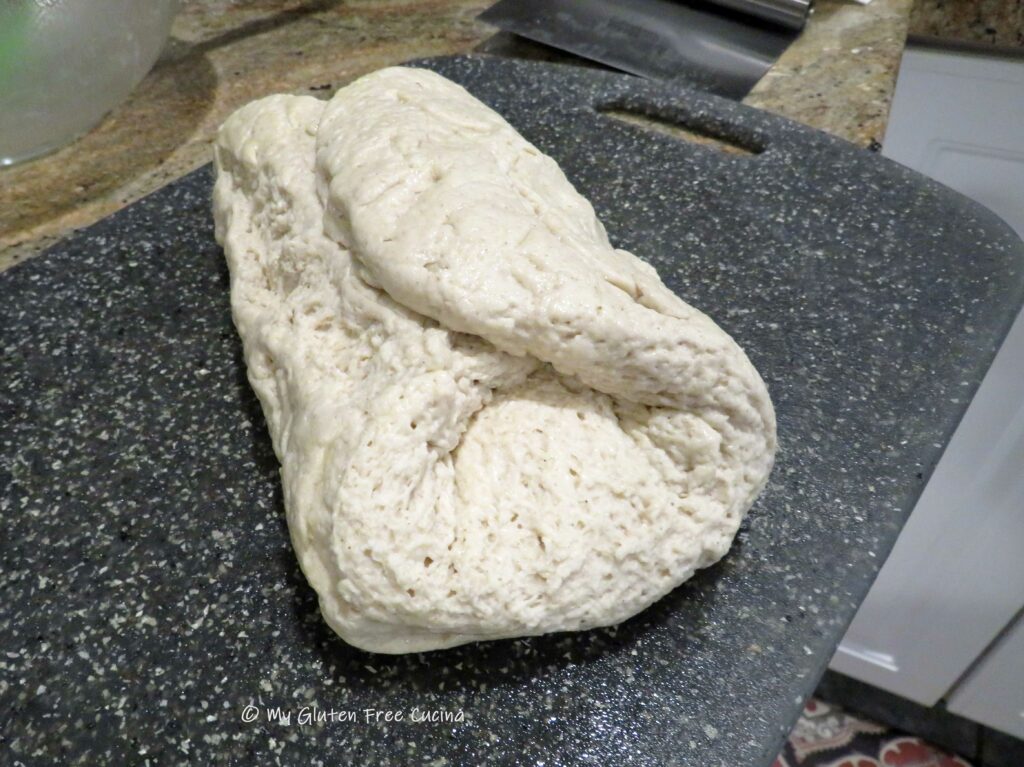

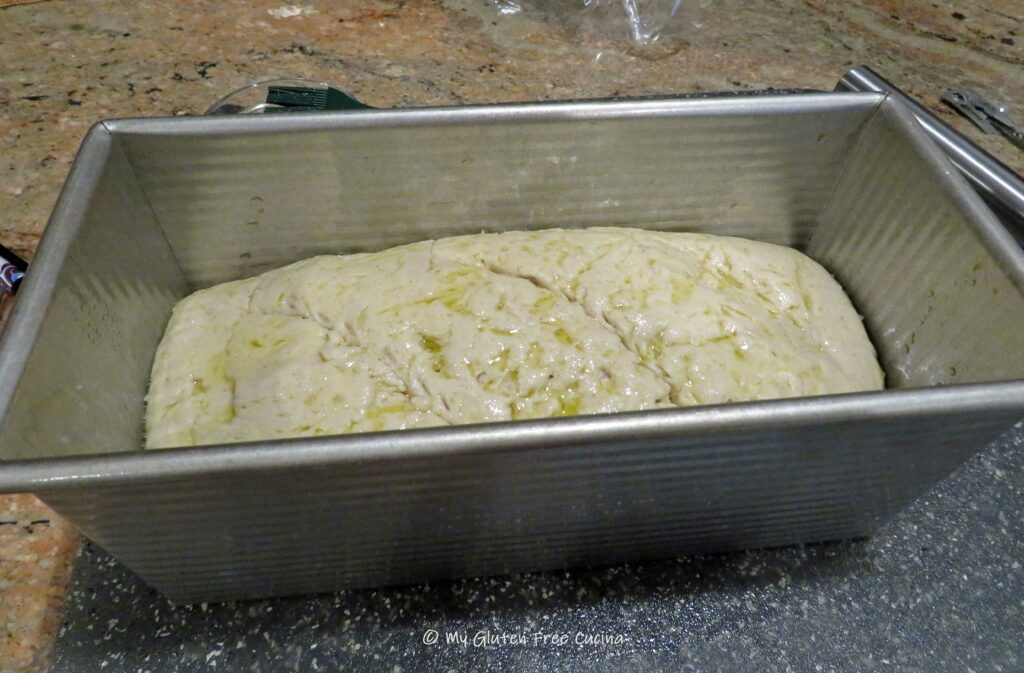

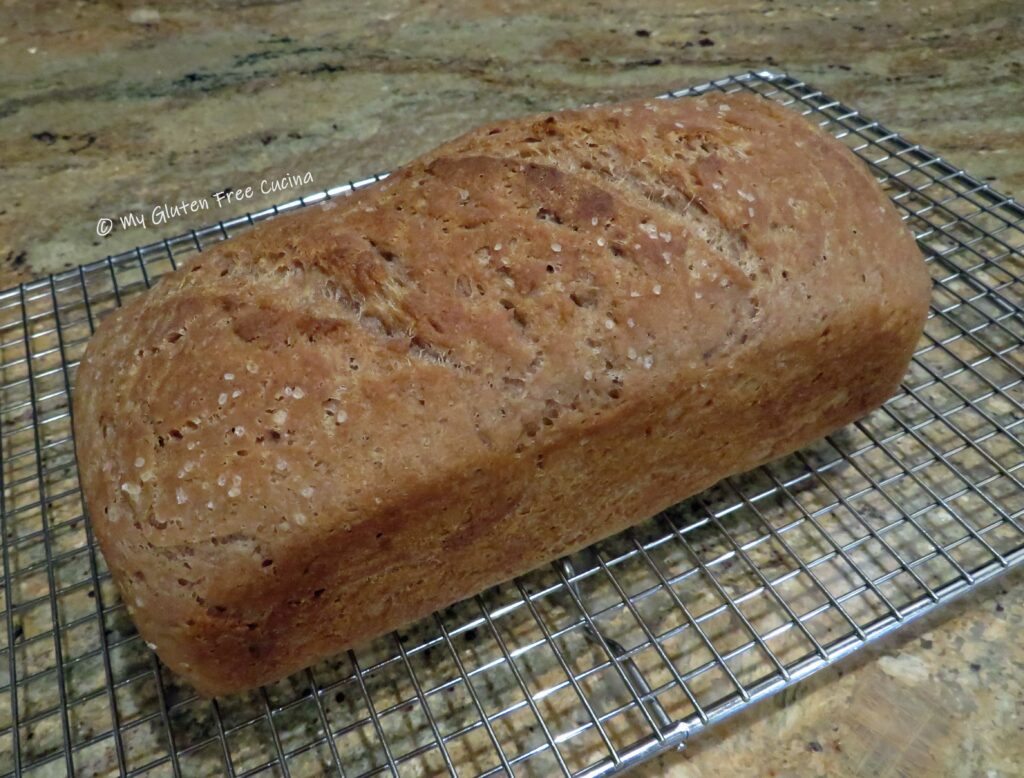
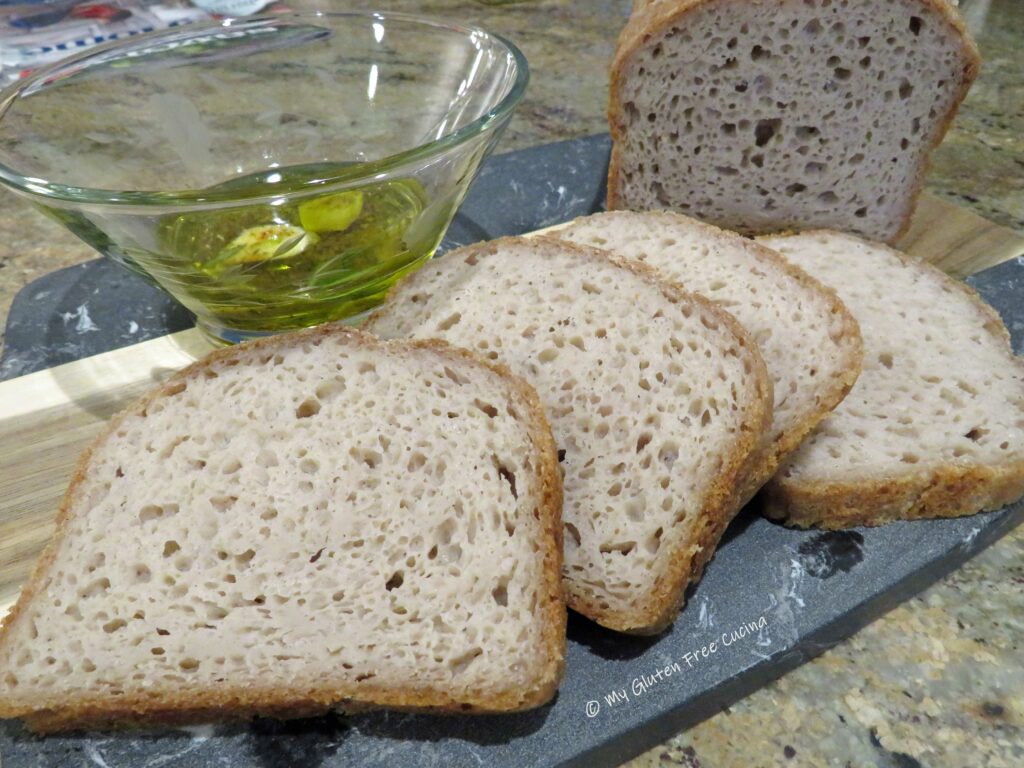
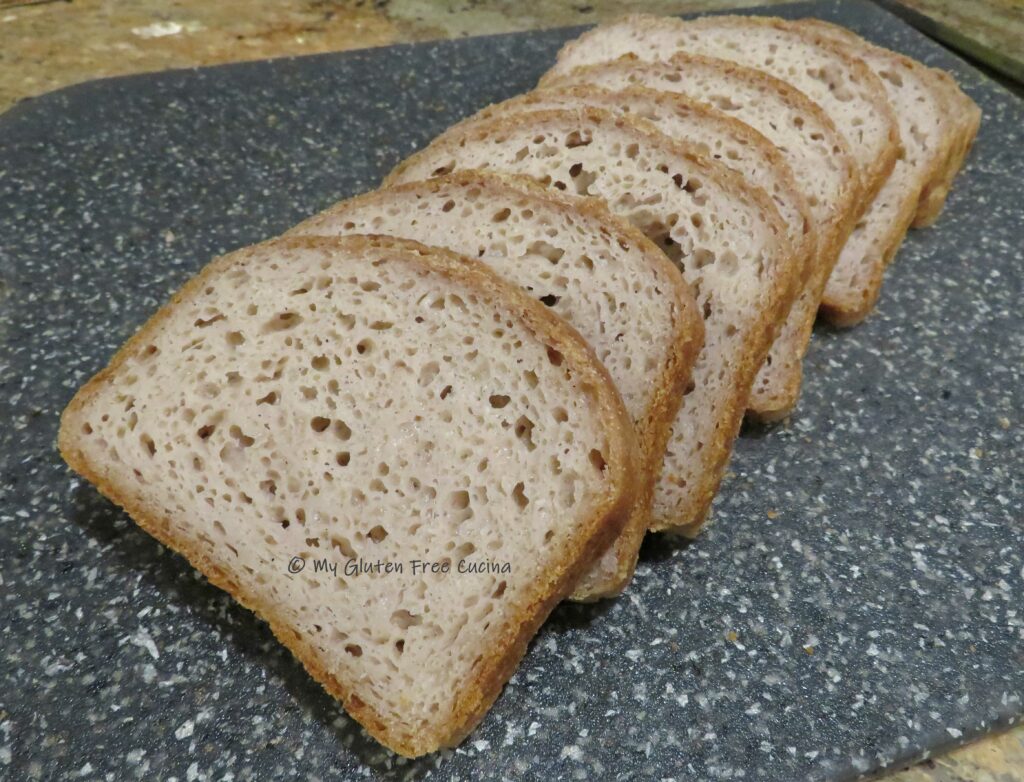
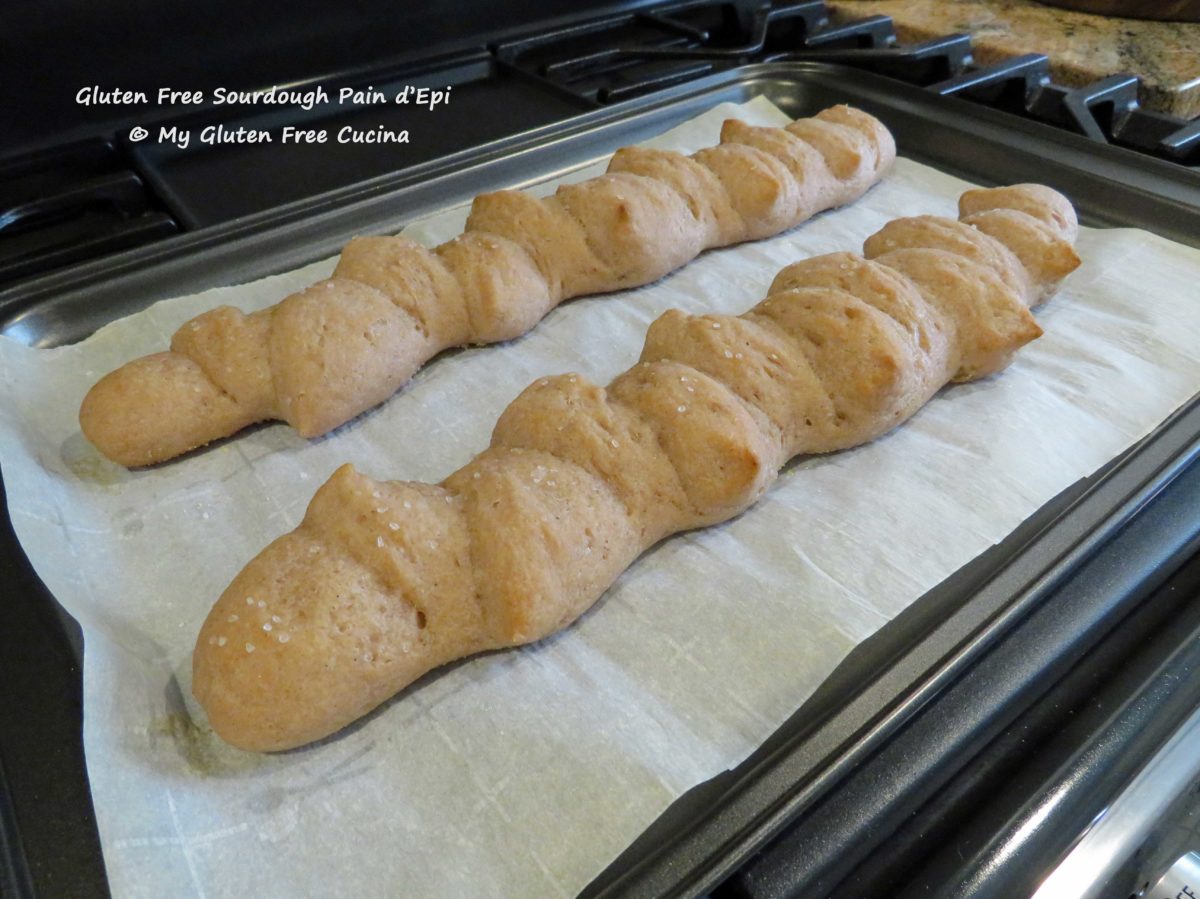


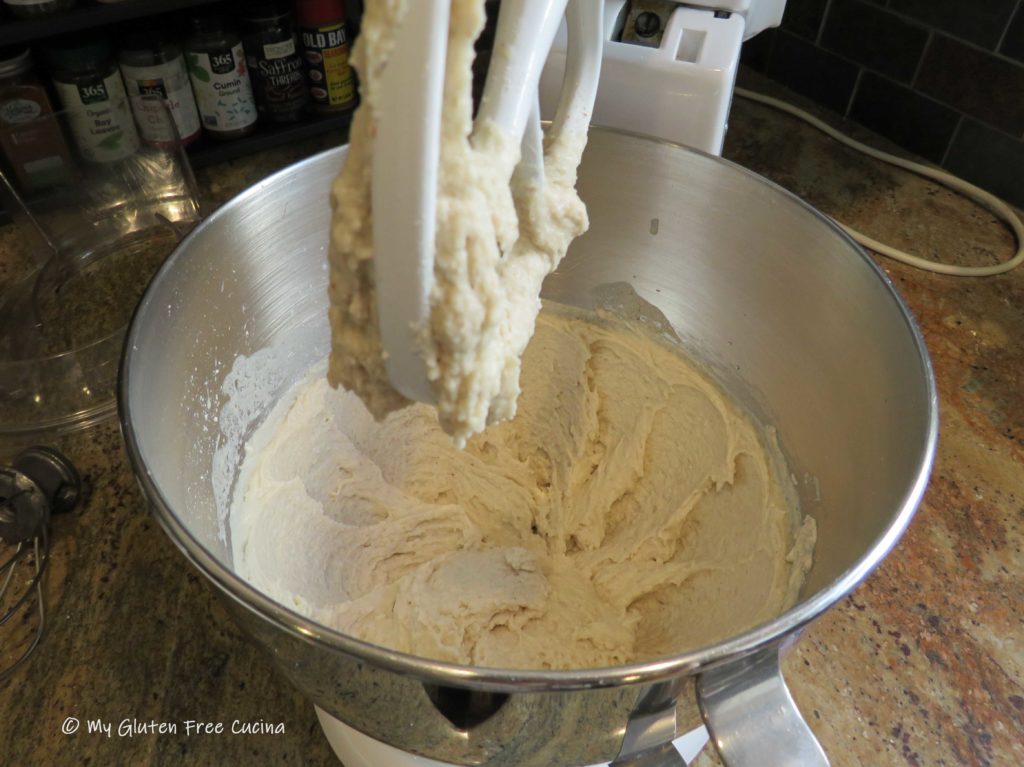








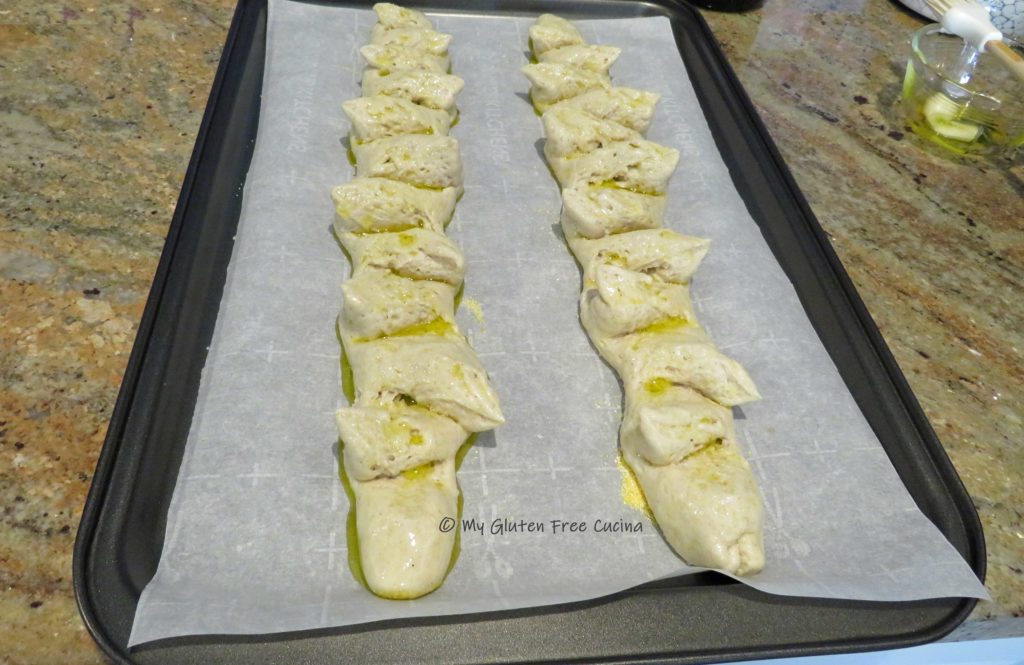
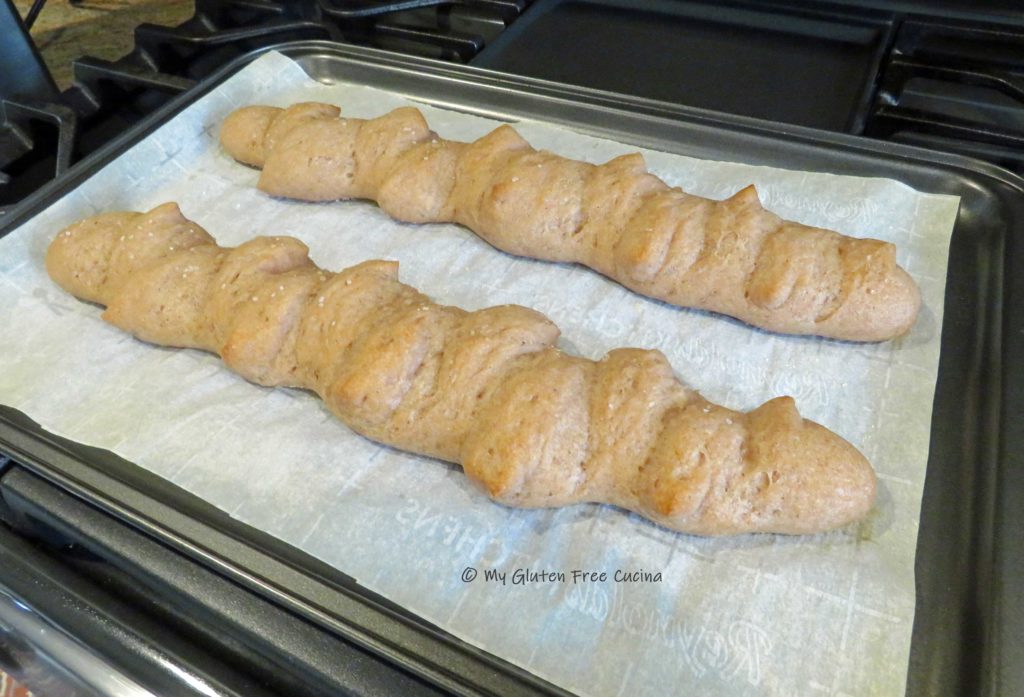

 Notes ♪♫
Notes ♪♫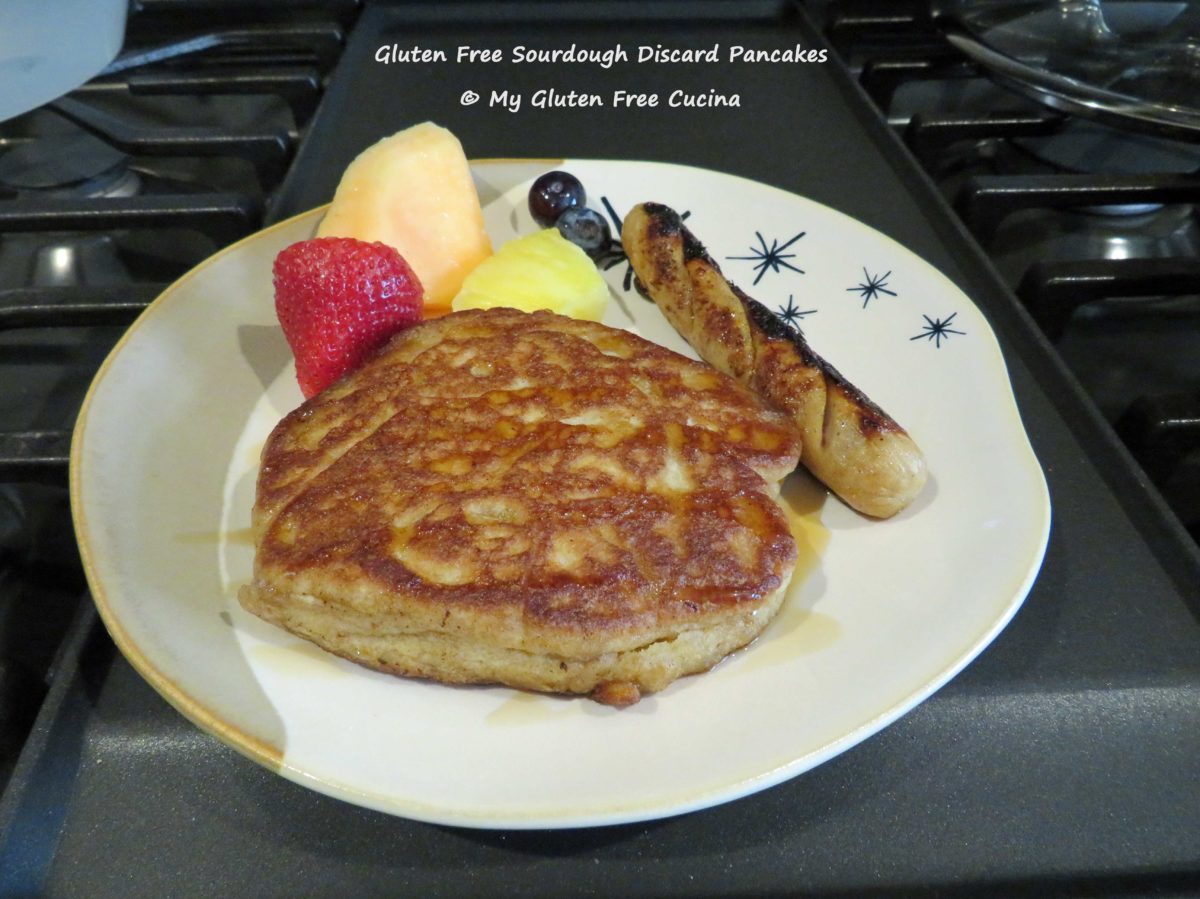
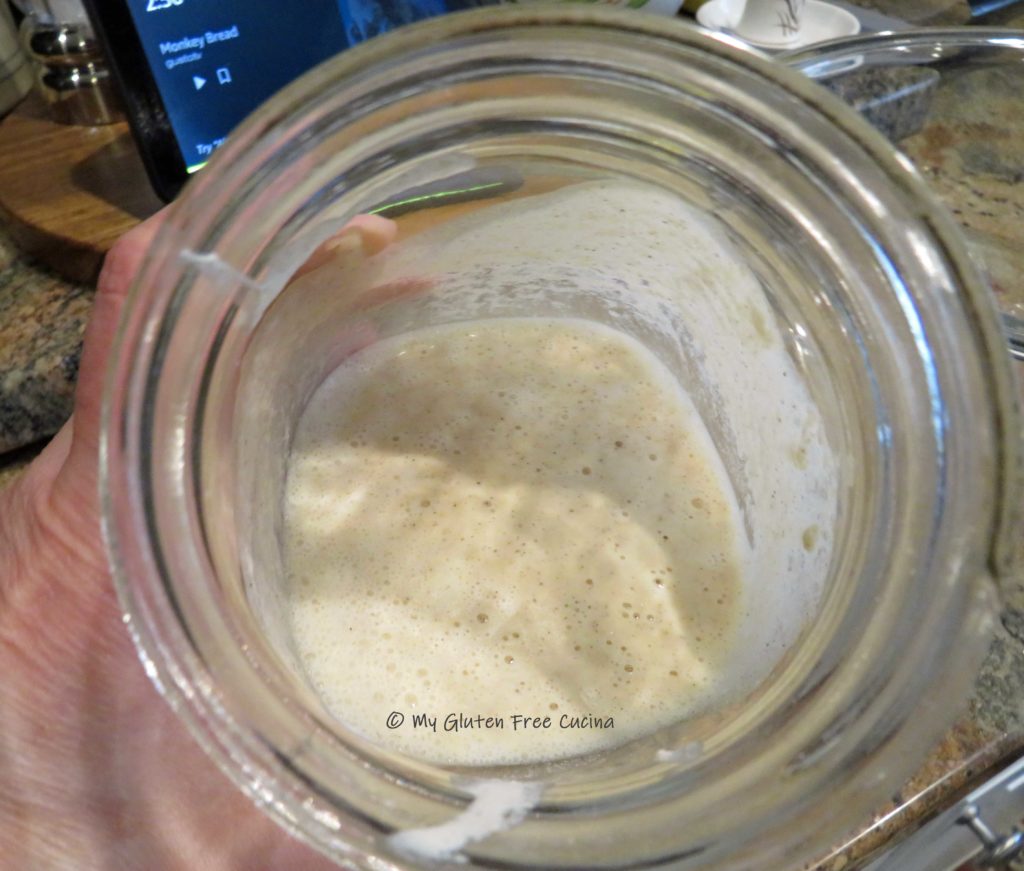
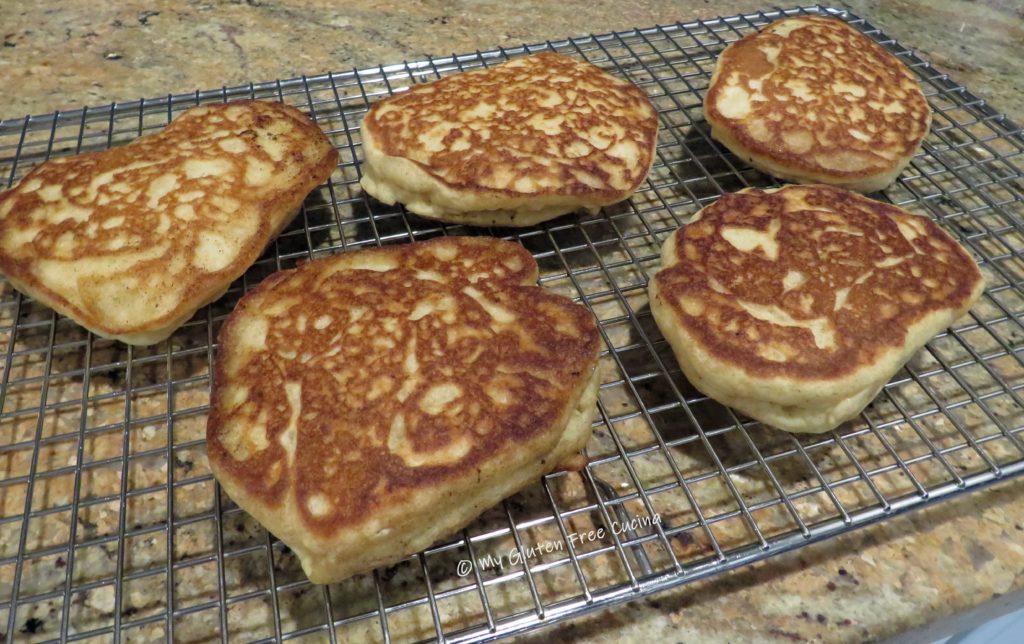

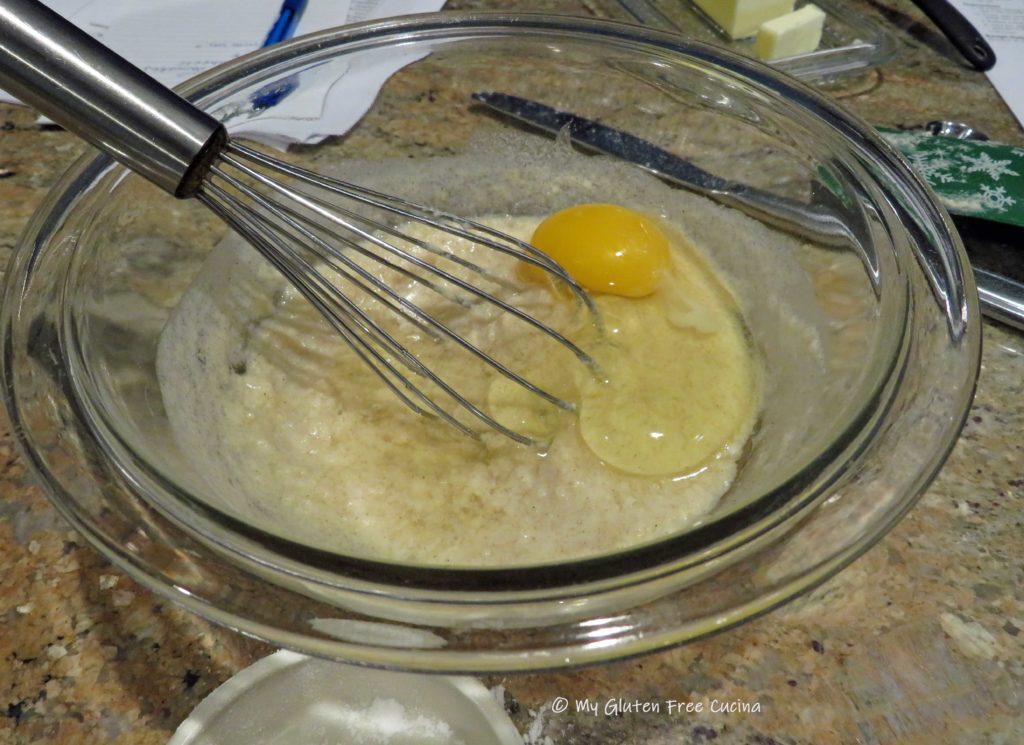
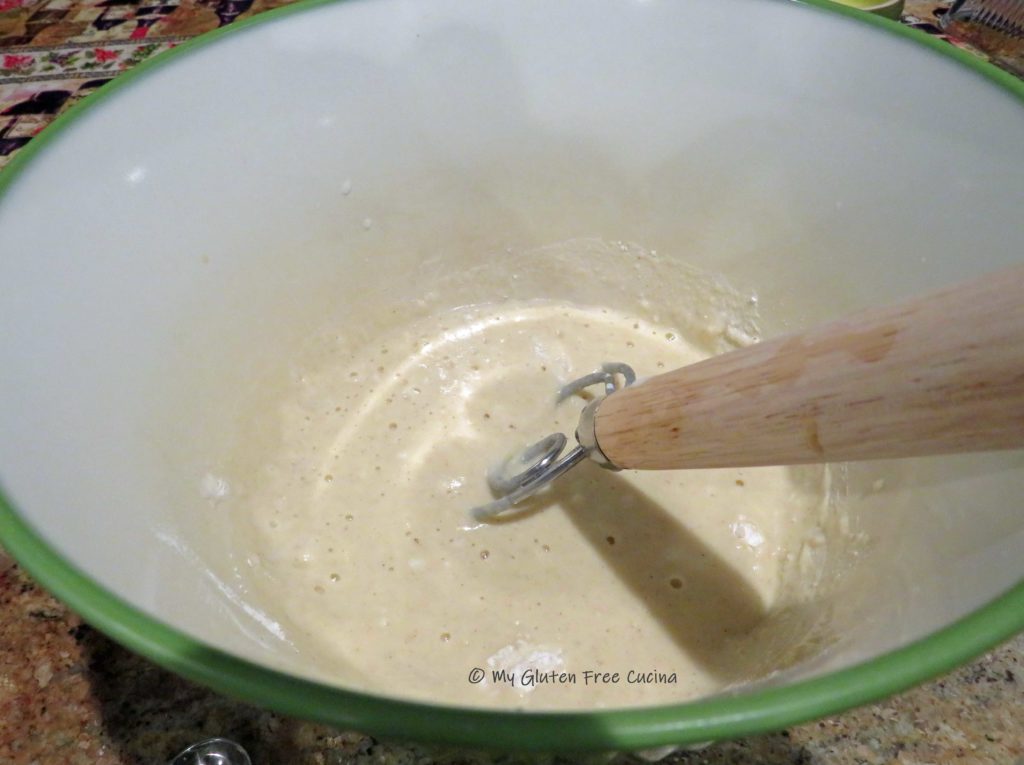
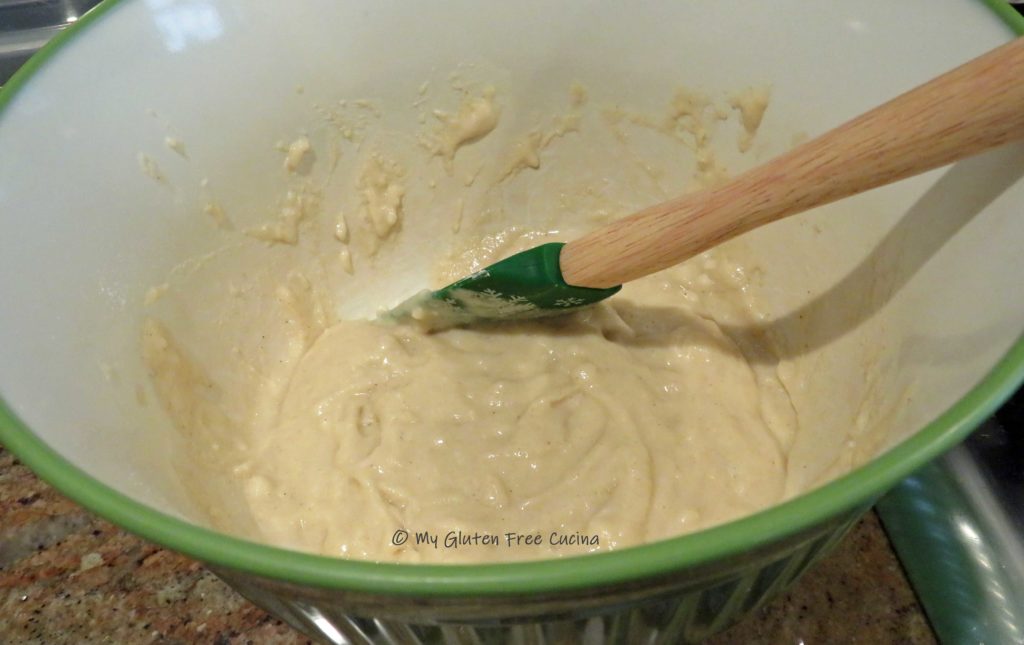
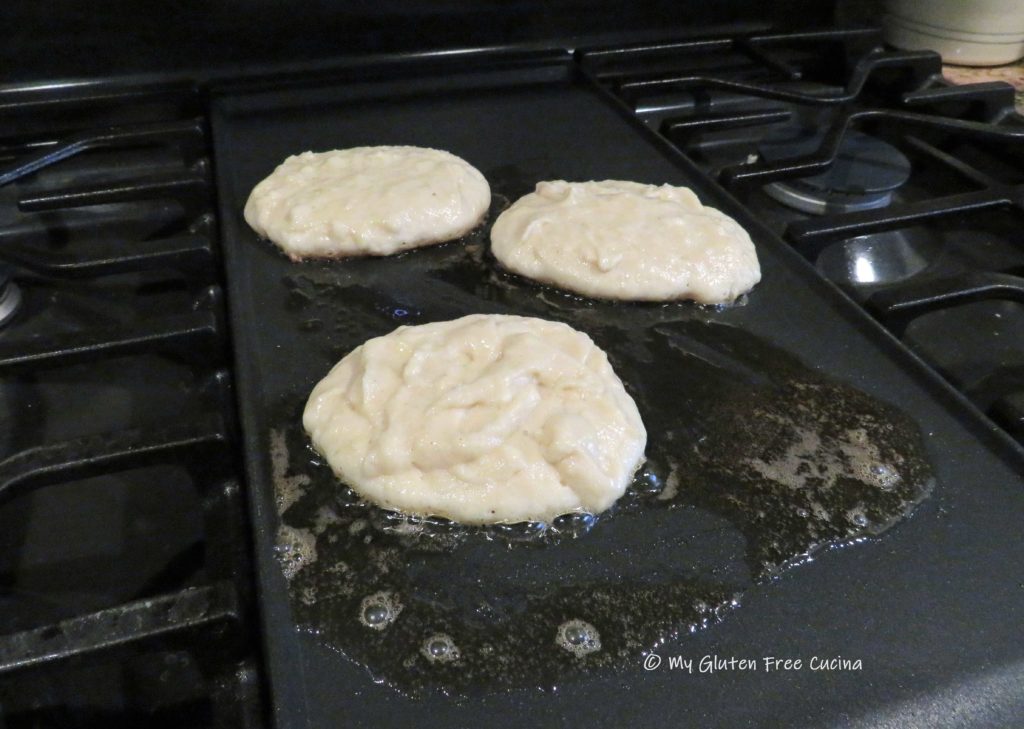
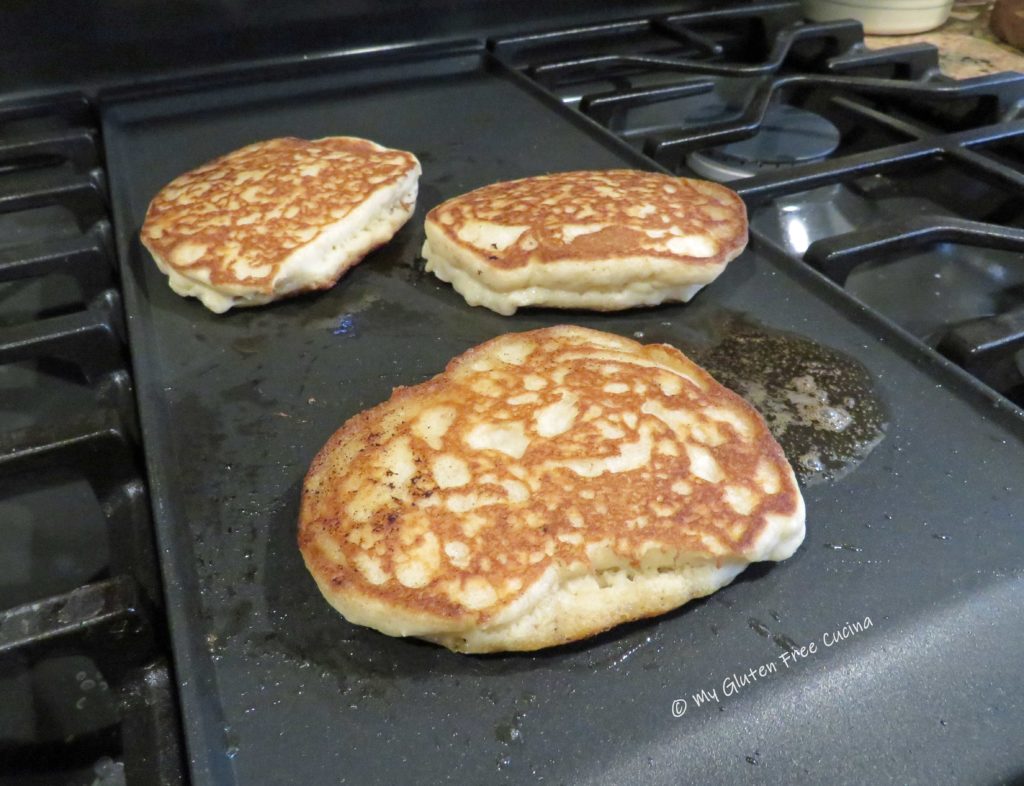
 When the second side is set check the center for doneness with a toothpick. I had to flip mine another time or two.
When the second side is set check the center for doneness with a toothpick. I had to flip mine another time or two.
